




































Heriot-Watt University Dubai has partnered with Campaign Middle East for the third consecutive year to present Campaign’s annual Agency Faces to Watch list. The list offers the brightest and best young talents aged 30 and under working in Creative, Media, Digital and PR agencies in the MENA region the opportunity to study a Master’s degree in Digital Marketing at its Edinburgh Business School.
WHAT’S UP FOR GRABS?
• One 100% scholarship





















• 4 x 30% scholarships to the winner of each category (four categories – creative, media, digital and PR)
















• Candidates will have to submit a 500-word essay to qualify for the above scholarships, detailing how this course could help them to further in their future career in marketing, to be judged by a panel












WHAT DO YOU NEED TO DO?










Visit: campaignme.com/call-for-nominationsagency-faces-to-watch-2023
LAST DATE TO SUBMIT YOUR NOMINATIONS: April 7, 2023


“The Dubai Lynx is an amazing platform for talent and creativity, including the wider festival and the community that has been built around it,” said Khaled AlShehhi, Executive Director of Marketing and Communication at UAE Government Media Office, who picked up the award for Advertising Person of the Year.
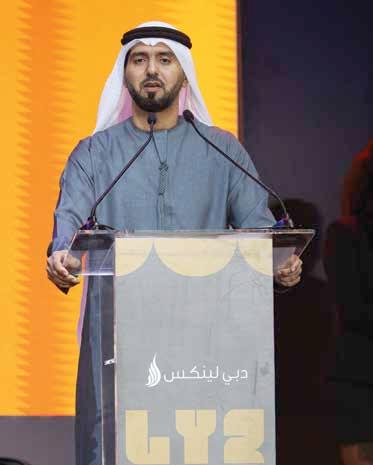
Referencing the event organisers from LIONS Festivals and Motivate Media Group, AlShehhi said: “I’m grateful to Ian Fairservice, Philip Thomas and Simon Cook. Advertising people need an industry to emerge because we don’t work in isolation, so thank you all for creating such a vibrant environment for talent to flourish.”
Dubai Lynx International Festival of Creativity is a one-day event and MENA’s premier platform for the creative communications industry to come together to learn, network and celebrate the power of creativity. The festival, held at Madinat Jumeirah, was followed by the annual Lynx Awards ceremony on the night of 15 March, where the award winners were announced.
The festival featured a line-up of global creatives as well as regional creatives and brands. Among the key speakers at the festival were Tom Beckman, the Global Chief Creative Officer at Weber Shandwick, Damon Jones, Global Chief
Communications officer at P&G and Asmaa Quorrich, Chief Marketing Officer at Saudi Tourism Authority.
Actor, comedian and writer John Cleese, known for Monty Python, made an appearnce at the festival to share his insights into the nature of creavtivity, based on his book: Creativity: A Short & Cheerful Guide.
Bright, creative minds gathered to discuss the trends and talent shaping the future of advertising and marketing such as the future of AR, creativity in Saudi Arabia, diversity, equity and inclusion, and purpose-driven marketing.
Also, part of the creative panel discussions were Campaign Middle East editor Justin Harper and senior reporter Jalaja Ramanunni who moderated panels with Saudi creatives and CMOs.
The event also offered attendees exclusive seminars, workshops, and inspirational talks from industry leaders in the creative sector. Dubai Media City also highlighted its community with specialised meet-ups for freelancers, women in the industry, and creative community members.
Highlighting the best creativity in the MENA region, The Dubai Lynx Creativity Report will be released on 13 April 2023.
Full coverage of all the Grands Prix winners, along with pictures from the festival and awards, are on pages 18 to 27.
Campaign’s Agency Faces to Watch 2023 is back to profile the brightest and best young talent aged 30 and under working agency-side in creative, media, digital and PR agencies in the MENA region.
Every nominee must be put forward by a senior manager within their own company or at a client they have worked with.
Heriot-Watt University Dubai has partnered for the third year with Campaign Middle East for Campaign’s annual Agency Faces to Watch list, offering a chance to win five scholarships to master’s degrees in digital marketing at its Edinburgh Business School in Dubai.
Candidates will need to submit a 500-word essay to qualify for the scholarships.
For more information, please visit www.campaignme.com.

The deadline for submissions is 7 April, 2023.
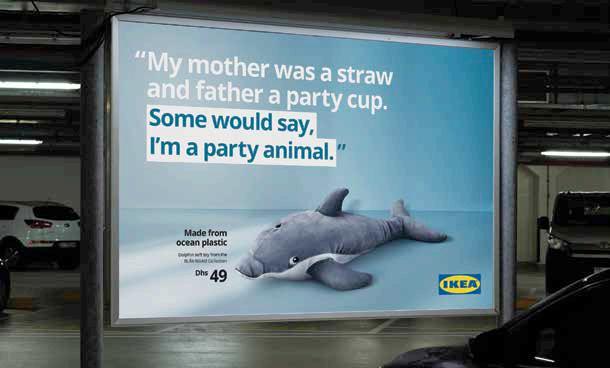
question:“Where do we come from?”. With a twist: their rather surprising origins as recycled plastics from the oceans.
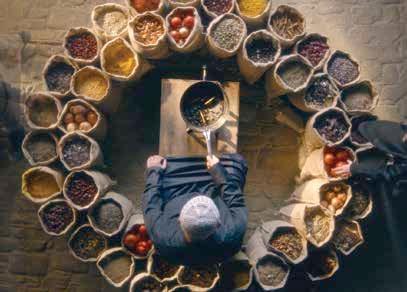
workforce that we will able to attract new talent, and ensure a sustainable industry for years to come. We urge people to take time to fill in the Global Census, as it serves as a vital barometer on where we are with DEI, and it will provide us with vital information on the key priorities and challenges we need to address.”
The questionnaire is the same as the one led in the UK by the Advertising Association, IPA and ISBA as the All In Census but with slight adaptations for legal and cultural reasons and will be driven by equivalent local industry coalitions in 33 markets including the GCC (Bahrain, Kuwait, Oman, Qatar, Saudi Arabia, UAE). Marketing professionals in other markets will also be able to take part by completing a shorter version of the survey in English, helping to give a full picture of the situation at a global level.
Marketing and advertising professionals from around the world are being asked to share their views on the state of diversity, equity and inclusion in the industry by participating in the second Global DEI Census in marketing, which went live on 15 March.

The initiative, which is supported by a coalition of 10 global marketing and advertising organisations –WFA, VoxComm, Campaign, Kantar, Advertising Week, Cannes Lions, Effie Worldwide, IAA, Global Web Index (GWI) and Adweek – has also been backed by a growing list of companies including
Bayer, BP, Danone, Diageo, Dentsu, The Estée Lauder Companies, Haleon, Havas, Kraft Heinz, L’Oréal, McCann, Philips, Reckitt, Sanofi and WPP. It is also being regionally supported by Advertising Business. ABG Group Chair and Unilever Vice President – Head of Personal Care Business Arabia, Leyal Eskin, said, “While we have all been focusing on digital innovations and technologies which will make the industry more productive and efficient, it’s important that we don’t take our eyes off the human side – because it’s only by building a diverse, equitable and inclusive
The goal is to measure the state of diversity, equity and inclusion in the marketing and advertising industry, as well as people’s sense of belonging, the absence of discrimination and presence of negative behaviours, in order to monitor progress on the results of the inaugural 2021 census, which covered 27 markets.
To participate, marketing professionals from across the marketing ecosystem will be asked to complete an anonymous 15-minute questionnaire covering their demographic profile including race, ethnicity, religion, age (in accordance with local legal frameworks) as well as their experiences at their place of work.
The Census will be open for responses between 15 March and 15 April. The results are due to be released in June 2023.


Camouflage Production and Publicis Middle East came up with a campaign for Maggi that serves as an ode to progressiveness of Saudi Arabia. Highlighting the social progressiveness of Saudi Arabia , the film brings the modernity and traditions within the same picture frame, it is an ode to the Saudi woman who is embracing progress, yet is rooted in her tradition with pride, just like the new Maggi liquid mixes.
Roche Diagnostics’ new campaign in the Middle East, Jasady – which translates to ‘my body’ in Arabic, demonstrates how easy it is to dismiss signals from the body and serves as a gentle reminder to women – and men – to listen to their bodies, when those bodies are clearly trying to tell us something. It derives insight from how culturally, the average woman in the Middle East prioritises her family’s health over her own, due to her various roles and responsibilities.

Dubai Lynx International Festival of Creativity announced the Young Lynx Academy’s Hackathon winners, held in partnership with Publicis Groupe, at the festival on 14 March. Five teams competed but only one could win.
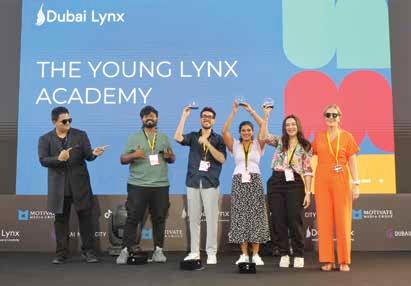
The winning team’s members consisted of Gautham Jayasree, Designer, AKQA; Yasmin Kojak, Social Media Account Manager, Katch International; Jio El Wadi, Strategy & Insights Executive, Digitas, and Aashna Gopalkrishnan, Senior English Copywriter, Serviceplan Middle East.
Sharjah-based Beeah Group,, the 24-hour hack competition’s sustainability initiative brief allowed young talent to push their strategic and creative boundaries.
Supporting creatives under 30 within the creative communications sector, the Academy offered the creatives a free mentorship opportunity. Hosted over three days, the immersive programme included content from keynote talks and workshops from industry leaders across the region to inspire and guide participants.
Another academy further boosting young talent is The Roger Hatchuel Student Academy. The Academy is a six-day global learning experience as part of the Cannes Lions
International Festival of Creativity, designed for students approaching graduation.
Official UAE representatives of the Cannes Lions Festival, Motivate Media Group and Motivate Val Morgan announced that Chloe Salloum, a third year student majoring in Visual Communication – Digital Media at American University in Dubai (AUD) will be representing the UAE at the exclusive Cannes Lions Roger Hatchuel Academy 2023.
The 2023 edition of UAE Young Lions Digital Competition, hosted by Motivate Media Group and Motivate Val Morgan, the official UAE representatives of the Cannes Lions International Festival of Creativity, witnessed 21 teams across 15 agencies competing, and Jonathan Cruz and Saymon Medeiros from And Us winning Gold.
Adila Fataliyeva and Isha Sharma from Science and Sunshine secured Silver, while Haneen Chaarawi and Sebastian Galindo Rubiano from McCann Dubai and Rim Reda and Kezia Shamil from Leo Burnett tied for Bronze.
Salloum was one of the four recommended students from the UAE alongside Mary Al Nassr Allah and Ayesha Malak from AUD, and Samyuktha Shankar Narayanan from Middlesex University Dubai, whose submissions were reviewed by the Roger Hatchuel Academy Jury panel – a diverse mix of global experts from reputed education institutions, the industry and related creative fields. The Cannes Lions International Festival of Creativity takes place from 19-23 June 2023, in Cannes, France.
Ian Fairservice, Managing Partner, Motivate Media Group, said: “As always, it was extremely difficult to narrow down the top submissions but in the end there had to be a winning team – I want to congratulate everyone who put their all into the competition, but especially the winners, Jonathan Cruz and Saymon Medeiros from And Us, who I’m sure will be great ambassadors during this year’s Cannes Lions event.”
The gold winners will receive a full week’s delegate pass and an all-expense-paid trip to represent the UAE at the International Young Lions Digital Competition.
And Us also recently released its latest campaign for Saudi Tourism Authority featuring Argentinian footballer, Lionel Messi.
Coca-Cola Middle East’s I See Coke campaign uses a new skill that allows Saudi consumers to receive a discount voucher for ordering a Coke to pair with their meal through Alexa as they see the beverage product in a movie or TV show. People who spot Coca-Cola on screen during a movie simply have to say “Alexa, I see Coke” to receive one of the limited numbers of discount codes via email with Alexa offering a witty response to validate the product placement.
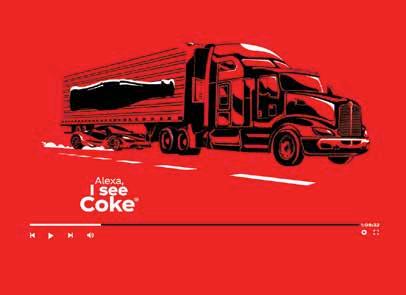
Agencies VMLY&R Commerce, VMLY&R Dubai and Open X


GharPar’s new initiative, launched on World Cancer Day, smartly navigates around social taboos that prevent open discussions of breast cancer, not only spreading much-needed awareness about the topic, but finding a way to teach women how to self-examine. So, GharPar, a Pakistani mobile app for at-home beauty services, in collaboration with Indus Hospital, trained its female waxing ladies staff to offer customers breast self-exam tutorials.
Agencies Impact BBDO, Contentory, Helipad Productions and Walnut PR
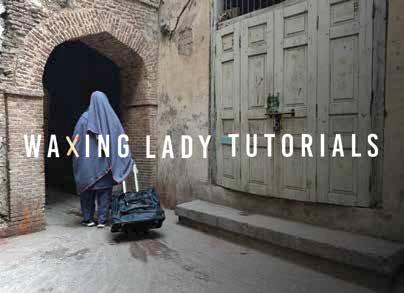
When it comes to the creative world, Gary Vaynerchuk, or Gary Vee as he is more commonly known, pulls no punches. “We have become lazy, the industry is lazy. It’s not intellectually curious,” he said during an interview with Campaign on a recent visit to Dubai. He cites examples of AI and social media where the industry was initially scared of them rather than embracing them.
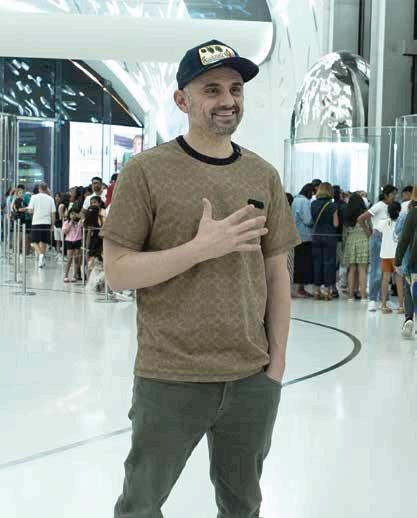
Vaynerchuk is an entrepreneur at heart and helps Fortune 1000 brands leverage consumer attention through his fullservice advertising agency, VaynerMedia which has offices in NY, LA, London and Singapore. He is generally positive about the creative industry in the Middle East and sees huge potential, particularly for the UAE and Saudi Arabia. “It is a very vibrant place, very bullish. Dubai is influencing the overall region.”
However, he feels more focus needs to be paid to market segmentation here. “Create 30 to 40 to 50 different consumer segmentations. Then you create marketing for those segmentations on a daily basis across six different social networks. We call this PAC (platforms and culture). You have to know how TikTok works, how Snapchat works, the algorithms, what a green screen is, what a carousel is, how long can you make a video in reels versus a story versus a regular post.” The end result is around 40 pieces of good content a day that can be shared. “From this, you can extract qualitative feedback and consumer
insights. And now you have the brief to do proper above-the line-work, that’s a lot better than guessing.”
The fast-talking American entrepreneur has a deep depth of knowledge across marketing and advertising worlds. During his trip to the Middle East, he has been immersing himself in the influencer marketing scene here. “A market like Dubai and the Middle East in general is heavy in consumption of social yet the incumbent agencies and the brands - both localized and multinational brands - are even more conservative here than they are in other parts of the world.”
Talking generally about influencer marketing and brands, he said: “Influencers are a big play and brands will continue to spend big dollars.
The issue is wanting to have control. The biggest mistake brands make is wanting to have control. As a brand you should be able to pick the influencer, but then they come in and tell the influencers they have to do this or that. The right strategy for me is that you get to pick the influencer then you move completely out of the way. Let them do their thing , otherwise you lose relevancy.”
Relevancy and authenticity are values close to Vaynerchuk’s heart, but he feels brands are not always getting them right
in their campaigns. “Relevancy is the currency that most of these brands are missing. Big brands don’t need awareness, they need relevancy,” he added. The business guru knows a thing or two about social media and influencers. In 2013, he set up an influencer agency called Grape Story in the U.S. “This was very obvious to me a decade ago and it’s played out that way. The reality is that it is very easy to overspend and underspend on influencers.”
But he is certain that the influencer market will continue to grow. “You get creative and distribution and relevance all for the price of one,” he adds. Relevancy often boils down to understanding the local culture and what is happening in the market. “What are the popping restaurants, who are the most famous singers, who just moved here? Is Roger Federer here? Is Ronaldo still in Saudi Arabia? Then you can make content with thought”.
Vaynerchuk is a serial entrepreneur and serves as the chairman of VaynerX and the CEO of VaynerMedia. Observers say one of his skills is in quickly recognising trends and patterns early to help others understand how these shifts impact markets and consumer behaviour. This helps him understand how to bring brand relevance to the forefront. He is also a prolific angel investor with early investments in companies such as Facebook, Twitter, Tumblr, Venmo, Snapchat, Coinbase and Uber.
‘‘INFLUENCERS ARE A BIG PLAY AND BRANDS WILL CONTINUE TO SPEND BIG DOLLARS.’’
Most companies spend enormous investments on strategy. Then they spend meagre time and resources to cascade these strategies to employees. The point they miss is that only when a strategy is embraced soulfully by employees will execution be well on its way.
In using the power of branding and storytelling, a communications team can bring to life a well-devised strategy to their internal audiences.
BRANDING: THE ULTIMATE TOOL TO MAKE A STRATEGY SEEN AND UNDERSTOOD
Al Masaood Automobiles introduced its latest mid-term strategy earlier this year. The strategy is set to propel the company on a new business direction that embraces innovation to its core and change the course of how it does business.
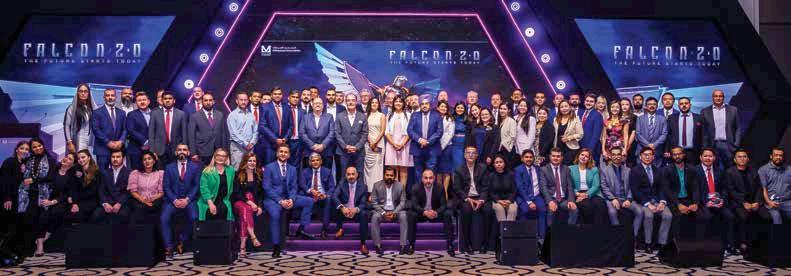
The automotive sector is currently at a crossroad of major disruptive forces, these being earmarked with technology advancements. Automotive dealers of the future will be hosting digital and virtual showrooms, offering intelligent autonomous mobility solutions and incorporating shared mobility.
One of the biggest hurdles in strategies is that they are launched in the most conventional methods; perhaps through a presentation or a speech, and then shelved away in the folders of computers.
But what if you can brand your strategy?
What if you treat it like a precious branding exercise and breathe life into it through logos, memorable taglines and visual assets that tell a story?
OLD IS GOLD, EVEN
Applying the golden rules of branding even when communicating a new strategy can be a magic potion to getting your messages across. In launching the new strategy, we sought to use the classic approach to branding any new product or service:
Coming up with a logo, a tagline, a colour palette and celebrative launch campaign.
They say that branding to a company or a product is like a mirror to your soul, it reflects the values and essence of your business. But what is branding to a strategy?
In our strategy, we used particular branding elements to create a spirit and personality that our employees can identify with:
Coming of age colours
We used vibrant gradient palettes to signify the transition into digital and virtual spaces. The combination of violet into our existing blue palette allowed us to communicate that while we keep the traditional model, we are integrating technology at the core of the business.
Simplify to amplify your messaging
Strategies are often multi-fold and built over many layers of business plans. Before jumping onto aesthetics, the comms team worked closely with the business team to simplify the strategy into three main pillars and communicating each pillar against a backdrop of a brand purpose and values.
Birthing brand characters
Humanising a brand by a character will breathe life into it. As our original brand icon was a falcon, we decided to upgrade it into something that our team can connect with. We chose a character that is part-human part-animal, a combo resembling superheroes and Transformers. We went further by choosing a modern Transformer like Optimus Prime.
We all know that customers generally don’t care about your story, they care about their own. So through the branding and comms journey, we established a relatable fairytale narrative.
The celebration
What better way to kickstart your strategy than a grand launch? Bringing together employees from all departments, we held a grand debut of our new strategy using a blend of visual and music activations to stimulate their senses. This all climaxed with a grand reveal of our new ‘superhero falcon’.
The ambassadors
To fuel our strategy, we made our employees our ambassadors – our falcons. Having their buy-in was essential in encouraging advocacy, building trust, driving engagement and championing the company’s new values and purpose.
Afterall, what can be more effective than ‘leading by the people, for the people?’
By Marwa Kaabour, Group Head of Marketing and Corporate Communication at Al MasaoodThe key to being seen, heard, and understood is unpacked by Al Masaood’s Marwa Kaabour
Last year’s World Cup football tournament was a huge success, in terms of viewers and engagement. Official statistics from FIFA show that five billion people engaged with the month-long tournament. The final between eventual winners Argentina and France achieved a global reach of close to 1.5 billion viewers while almost six billion engagements were made on social media.
There were some great advertising and marketing campaigns during the World Cup in Qatar and plenty of innovative concepts. One that stands out is from Vodafone Qatar which launched a GigaHome Click-to-WhatsApp World Cup Lead Generation campaign in November 2022. Click-to-WhatsApp ads allow an audience to send a message directly from an ad they saw on platforms like Facebook or Instagram by providing a call to action to send a WhatsApp message. It creates an immediate connection with the brand and initiates a high intent user conversation. The conversation can either be completely human-led or automated.
Vodafone Qatar relies primarily on online channels to sell their home internet product, known as GigaHome. To help do this, it invests consistently on Meta’s platforms to generate leads and sales. Vodafone decided to launch a campaign using Ads that Click-to-WhatsApp (CTWA) to drive users on the WhatsApp channel so they can learn more about the product and eventually complete a transaction. They chose the WhatsApp channel to increase the number of quality leads and accelerate their sales.
For Vodafone Qatar, their main objective was to increase the number of quality leads through users who initiated a WhatsApp conversation and as a result, increase the

number of sales for the GigaHome internet product. For the target audience, Vodafone went for broad targeting, focusing on the entire Qatari population.
To measure the performance of the campaign, Vodafone ran a brand lift study to measure the impact of the campaign. The results were as per the following: 3.6 pts lift in campaign awareness / 3.2 pts lift in recommendation / 710 new conversations in 4 weeks. This was the first globally measured CTWA campaign.
Businesses are shifting to WhatsApp to promote their products or services for a number of reasons such as the deeper relationships with customers that it builds along with improving customer retention. Another compelling reason is that it boosts conversions and opt-ins.
Vodafone Qatar used the FIFA World Cup to launch the first globally measured Click-to-Whatsapp campaign writes Justin Harper
“For Vodafone Qatar, their main objective was to increase the number of quality leads through users who initiated a WhatsApp conversation and as a result, increase the number of sales for the GigaHome internet product.”


“The results of Vodafone Qatar’s Click to WhatsApp campaign across the funnel reinforce the importance of the WhatsApp channel and its ability to generate quality leads and accelerate sales. We look forward to deeper lower funnel measurements with the support of 360 Dialog to turn this activation into an always-on lead generation play”

“At Vodafone, we are committed to maintaining our leadership position by offering an advanced customer experience, making world class infrastructure investments, operating our business with integrity, and focusing on data protection. We are proud to have partnered with Meta to create the first conversion focused channel on WhatsApp; along with 360 Dialog and Tars Platform. WhatsApp interaction is creating the moment of truth up to 50 times a day on the mobile screen; supplying a convenient onboarding journey to Vodafone Qatar, supporting the sales process with real time feedback, whilst providing a world class customer experience at the heart of these interactions- furthering our position at the forefront of technological innovation.”
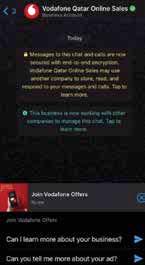
“Marketers are regularly coming up with innovative ways to find, reach and convert a wider audience at the lowest cost possible. Messaging apps are proving to be a valuable tool to achieve these goals. As the most popular messaging platform in the world, WhatsApp has now become the ‘go-to app’ for marketers to generate high intent leads and boost conversion rates thanks to its wide audience reach and a high volume of daily active users.
The Vodafone Qatar CTWA campaign is simple to follow and available in both English and Arabic. It is clear to understand and improves the user journey in my humble opinion. It has the benefit of real-time responses and feels personalized to the user’s needs. We can expect to see more campaigns like this which should boost first-time sales and repeat purchases.”
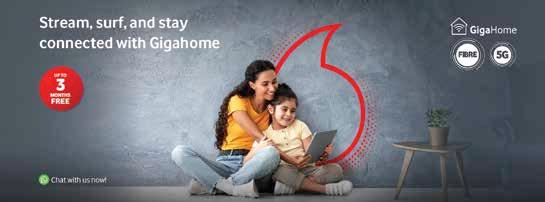
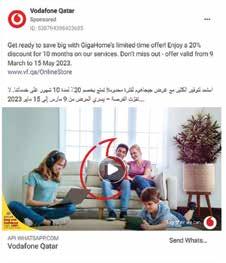

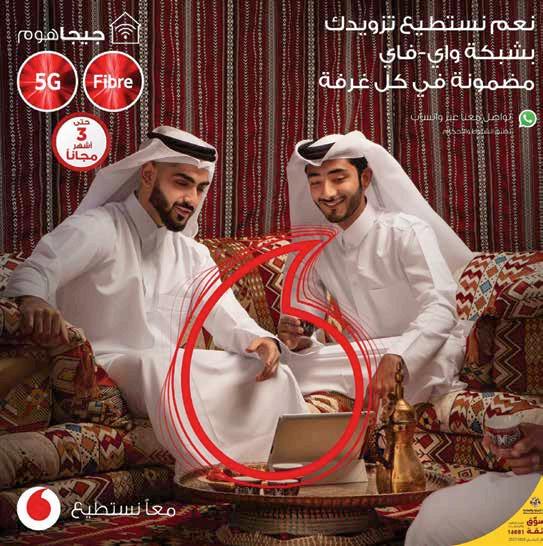
QHave your flexible working arrangements changed post-Covid?

YESI believe Covid had a steep learning curve for organisations to move from 100 per cent in-office culture to 100 per cent remote. Post-Covid, however, allowed us time to reflect on what’s best for the team, the client, and the business.
Since then, my team and I have prioritised retaining flexibility, improving efficiency and fostering productivity. We trust our team to work from anywhere, and we trust them to be a part of crucial brainstorming, client meetings and workshops.
Our Dubai office offers flexible work arrangements, our Beirut office operates remotely, and Socialeyez Egypt follows a hybrid work model.
I firmly believe there’s a need to retain an office’s social aspect, push people out of their comfort zones, collaborate, and enhance client relationships. However, Covid has taught us that there’s also a balance in embracing the quiet of working from home.
Alok Gadkar CEO and CCO, Tuesday Communications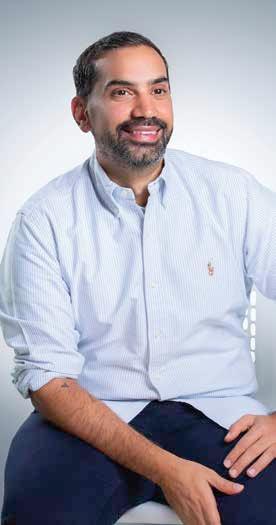
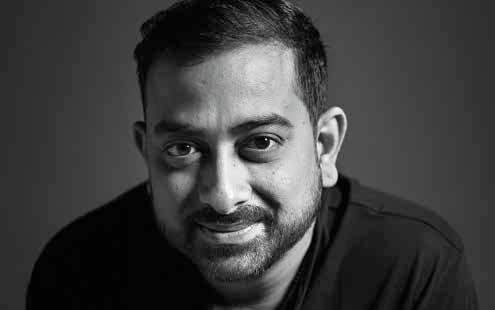
YESThe concept of flexible working is a dynamic that is constantly evolving. Upon returning to physical office spaces, we recognised the importance of incorporating greenery, fresh air and most importantly, freedom into the office design and location. During the pandemic, we shifted to full-time work from home but eventually adapted to a hybrid model in which we work from the office three days a week, with Monday being mandatory. After identifying a gap, we improved our approach by making Tuesday and Wednesday mandatory work-from-home days. Currently, this arrangement appears to satisfy everyone, with minor issues that can be addressed if necessary. We remain open to recalibrating as needed.
Martino O’Brien Managing Partner, YouExperience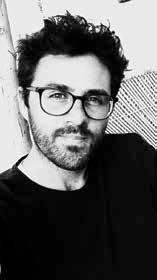
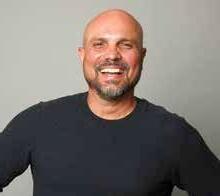
We’re back in, but less anchored in the office. We’ve always been a WFA, work from anywhere, kind of company. We work Sunday to Thursday, and we have Mon-Fri clients. We work in production, meaning a weekend will be eaten up filming occasionally, so we pay it back to our staff with a DOIL (day off in lieu) system, allowing them those days back.
Post-Covid, you could say we’ve subscribed to an ‘asynchronous’ way of work. We love the office. The buzz. The face-to-face connection. But we all understand that a few hours of work in the morning, then an obligation out of the office, getting the kids from school - whatever it may be - then back to the office, or home, to carry on working if needed, allows for a much better balance and no drop in character or productivity. The opposite in fact.
YESNever thought I would say this, but Covid has proven that we can be effective and efficient from anywhere in the world. Geographic flexibility comes to mind. Having said that, we are encouraging our staff in Dubai, Beirut, and Egypt, to come into the office daily to accelerate returning to the pre-Covid work style. In terms of flexibility, staff get to choose a day in the week to work from home. This balances it out nicely, we think. Unfortunately, this arrangement is not a one-size-fits-all decision. Agencies need to determine which staff are best placed to work from home and which need to physically be at the agency every day.
Would we like to go back to pre-Covid ways of working? Bet your ashes, we do. We do miss the physical interaction with each other - brainstorming on Teams is never the same as at the local restaurant below the building or in the car park listening to the planner ramble on while reducing his lifespan.
At home or in the office, we never stop doing the ‘un-boring’.
YESRegardless of pandemics, we’ve always been committed to improving work-life balance. Studies continue to prove that providing people with flexibility is conducive to a better working environment, so it’s of paramount importance to us. We’ve increased the flexibility we offer, since Covid. In addition to flexible working hours and WFH one day a week, last year we introduced a four-week remote work from anywhere in the world benefit for our people, and it is now policy for us. For us, where, when, and how you work continue to be an evolving and more personalised proposition, so we’ll continues to focus on how we can give our talent greater control over their work/life balance.
Nikita Phulwani Founder and MD, ByNiggi Marketing Management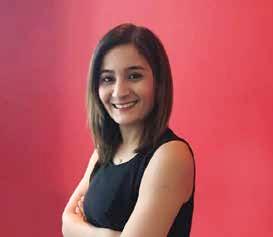
 Chelly Megale Head of People and Culture, VMLY&R
Chelly Megale Head of People and Culture, VMLY&R

YESCovid changed every industry’s view on flexible working, and it proved that being flexible doesn’t mean being unproductive. I believe it starts with trust. If you trust your employees to deliver, then flexible working can be a wonderful benefit for team morale, culture, and overall happiness within the workplace. Boundaries need to be set though. We’ve kept an element of flexibility to lift productivity levels. It benefits not only the people though. Flexibility meant that businesses could find efficiencies too: smaller offices, sustainable ways of working, a wider choice of talent and cost savings. I don’t see how our arrangements will change. If everyone respects the boundaries and each other, we believe it lends itself to a happy and balanced workplace.
Over Covid, I was glad to witness that our team were still able to achieve their tasks while working from home. However, it does impact speed. For brainstorms and pitches, having the team together in person does help. Also, it took longer for new joiners to settle in initially during Covid. We have several positive shared experiences that often cannot be translated virtually. In the agile industry that we are in, the sooner we can build a strong core team, the faster we can deliver results. I am glad we are back in the office full-time but capable of being hybrid when needed.
YESBefore the pandemic, we were testing hybrid models. Covid merely accelerated a shift that was already under way. Now, hybrid work is the status quo at MillerKnoll. Our people regularly work from home, from the office, and from anywhere else they choose.
We made the commitment to hybrid during Covid when we gave all our staff a bursary to invest in ergonomic furniture, accessories, and technology upgrades for their homes. And, since Covid, we have made significant upgrades to our office, transforming it into the kind of workspace our people want to spend time in – somewhere with a mix of settings that support individual focus and collaborative, group work styles.
Vinay Mahadevan Business Director, Rain Creative
YESFlexible workdays allow you the mental space to get important work done, which otherwise tends to get deprioritised for the urgent. While we have flexible workdays, we feel it’s best to work from the office, especially since we are in the ideas and impossible deadlines business. Collaborating closely, feeding off each other’s energy and enthusiasm, and exploring an idea’s full width and depth is better done in person. At Rain, flexibility boils down to being able to take a mature decision, sometimes WFH is the best way to get work done on a particular day.
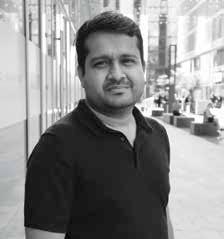
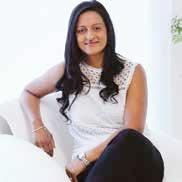
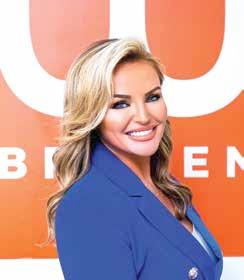 Paras Rishi Senior Manager – Marketing, GMG
Paras Rishi Senior Manager – Marketing, GMG
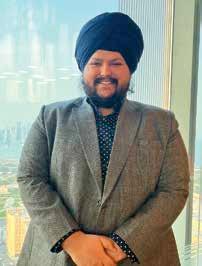
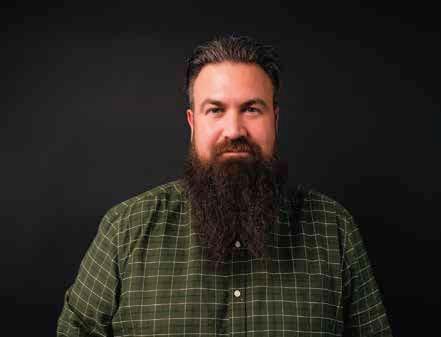
As a PR agency with people as the heart and soul, we had to be forward-thinking and offer the best of both worlds with hybrid working. Our team can work where they like, plus have the camaraderie and collaboration of an agency environment. We recently launched the ‘out the door at four’ policy, which empowers team members to flex each day and leave at 4pm for a work-life balance. Client needs and deadlines vary, and results must be delivered, so we’ve found a way to be flexible while staying agile and adaptable in the dynamic world of PR.
YESThe hybrid working arrangements have been a breakthrough post-Covid. I have witnessed employees continuing open and honest communication when they are working from the office. This has helped retain a strong culture at the workplace while having a work-from-home policy. It has further helped new team members quickly develop a sense of belonging and build a better understanding of the company’s core values and the team’s business objectives. Flexible working hours and an optional work-from-home policy have gone a long way in improving employees’ work-life balance by allowing them to better manage their personal responsibilities and work schedule. After multiple waves of Covid in the last couple of years, businesses are much better equipped with business continuity plans due to flexible working arrangements.
Beverley D’Souza General Manager – Middle East and Pakistan, Pizza HutYESPost-Covid, our flexible working conditions have taken on a new life. While Covid has proven remote working is possible and technology can do wonders to enable this we have also learned that nothing can replace human interaction. Face-to-face still matters because it creates rapport and trust. When you are with a person you can build a relationship and read their non-verbal cues. People find meaning in their daily rituals of getting ready to leave home, commuting, grabbing their cups of coffee, and filling their water bottles before sitting at their desks. We have therefore moved to a hybrid model that requires three days of collaboration at work and two days of working from home. This allows for flexibility as well as the human connection that is critical to building relationships and succeeding at work.
Andrew Thomas Managing Director, NexaYESWe have changed however it has been gradual and we took longer to come back to the office than other organisations. We first started with three days and recently moved to four. Three main reasons for getting people back in the office. The first was relationships. Working remotely didn’t allow people to form relationships and friendships. The second reason was collaboration and ideation. The third was the increase in the number of clients that wanted to meet in person. We have seen a huge benefit from returning to the office, both from a relationship and client happiness perspective.
Ricarda Ruecker Chief Talent Officer, MCN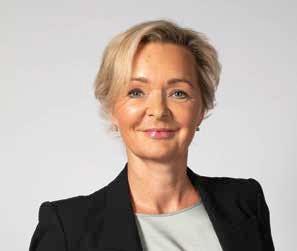
We’ve always had a certain degree of flexibility so our people could balance regular life events like medical appointments and children’s school occasions. Since Covid, we have also formalised remote working, and our hybrid working model became policy. We collaborate four days a week from the office and spend one day a week working from home (rotated for fairness across different days of the week). In summer, people can work for one week from anywhere. Our most important post-pandemic objective was to rebuild a sense of belonging and embed the new hybrid work model as part of our work culture.
When influencers surpassed all other forms of advertising as the de-facto amplification tool of choice, it was because brands had lost faith in their own ability to have meaningful conversations with their consumers. So why have we reached a point where the project management of a singular influencer output can exceed the resource allocation of an entire production team on a brand campaign?
Ok, I may well be guilty of a little hyperbole, yet I hope I’m not the only one to spot the irony in doing so. In order to make my point, I’ve tried too hard. I’ve cranked everything up to 11, shoehorning in key but subtle messages about the in-house production studio at my agency in an attempt to legitimise my opinion while using no data to validate my stance, ultimately discrediting my position and limiting its impact.
And it’s a trap far too many influencer brand X relationships fall into. When brands hold the hand of their partner all the way through the process, the bias of the brand rep is almost certain to bleed into the final execution, thus diminishing the whole point of working with a real, authentic human voice to spread the word in the first place.
It’s not so much that these brand values are meaningless or shouldn’t even be adhered to – though TikTok has shown us all that the best results come when throwing all guidelines and traditional content standards out the window. It’s that the right influencer shouldn’t need them in order to convey the value of your product or experience in the most favourable light; it’s their authentic view of things which got them to the point where you want to work with them, so don’t constrain it. If you trust your product or experience, trust your partner.
So how do you let go of that control and feel confident the partner will deliver?
The answer is two-fold, and it comes either side of the execution – it’s in the





First, selection, and the three phases of it.
In 2023, agencies are drowning in data from a whole raft of digital listening solutions, allowing them to underpin every decision we make. Influencers are too, or at least the good ones should be. So if they want the benefit of working with you they should make it available.
We’re not just talking performance and audience size here, we should expect past campaign results, impact metrics, growth rates, demographics, the works.

Then comes insights – who have they
worked with before and are there testimonials? how frequently do they accept paid collaborations and how diverse a range of brands do they work with? And finally, are they the sort of person you’d hire for your workforce?
Suss them out, invest time and effort in getting to know them and provide a platform for the real them to shine – a dinner, an event, a no-expectations conversation or two can go a long way. Put it this way; you wouldn’t hire someone on the strength of a resume alone.
The second crucial change we need to see is in how we pay our partners.
The broadest metric the industry deals in from an employer perspective is CPE (cost per engagement), i.e. how much the brand paid the influencer pre-campaign for every projected engagement. But what if the contract signed was based on the real tangible value the influencer provides post-campaign? And if you’re really brave, have those KPIs trickled down from the broader success of your entire marketing efforts of which the influencer was a part.
Those metrics could be many, but here are some of the more valuable and less used:
Percentage of positive sentiment increase during the campaign period
Own-brand follower growth during the campaign period
Dominant share of voice position in relation to the influencer’s five previous brand engagements.
You’re incentivising creativity and protecting authenticity by ensuring the influencer doesn’t deviate from what has made them a worthy partner in the first place. Here you are ultimately facilitating a more considered conversation between influencer and audience.
Because if your brand guidelines and values were important to the audience in the first place, you should have just stuck to your own platforms.
By Ma Fortune, Director at strategic digital communications agency Create.








It’s time to trust your influencers says Create’s Matt FortuneThen comes insights – who have they way you choose the influencer and in how you pay them. campaign results, impact metrics, growth
This month, Netizency turns 10. That is, 10 years young.
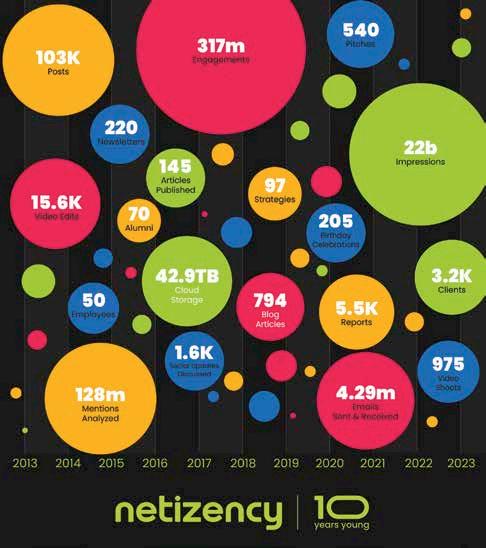
We’ve spent the past 10 years perfecting the art of staying young at heart while delivering kick-ass results.
Our secret? We don’t take ourselves too seriously.
We have a 25-year-old CEO (Chief Entertainment Officer) who plans office birthdays (fun fact: we’ve celebrated exactly 205 of them), company activities, and makes sure we celebrate every occasion including International Burger Day. We don’t stop at celebrations, we have designed our office to include everything from a swing and massage chair to a Street Fighter II arcade, and a snooze pod, including many superhero figurines and a fuzzy blue Cookie Monster plushie that’s always ready for a hug. We know that hard work and fun can go hand in hand, and we’re not afraid to blur the lines between work and play (this is how we were able to get through 4.29 million emails over the past 10 years).
Sure, we may not always have a concrete plan, but that’s the beauty of it. We trust our team to improvise. We’ve made it a point to create a culture of positivity, where our team is encouraged to take risks, learn from their mistakes and create magic - this includes but is not limited to 103,562 social media posts, 15,000 video edits and 1,000 shoots. Because let’s be honest, people don’t know what they want until we show them.
We’ve made mistakes, we’ve learned from them, and we’ve grown (in size not in spirit). We believe in the power of simplicity, focusing on our core strengths and doing them better than anyone else. And boy, have we delivered. We’ve worked with 3,214 clients, developed the social media strategies for 97 brands, produced 5,527 performance reports, published 794 articles on our blog (that’s a lot of typing), and have been published 145 times.
But the real proof is in the pudding - which is composed of 42.95 terabytes of cloud storage. We’ve landed some
pretty big fish, including McDonald’s, TikTok, Lenovo, Emirates NBD, Marks & Spencer and Sesame Workshop. And let’s not forget the countless smiles we’ve brought to our clients’ (and their customers’) faces. Also, and just so you know, we have served 22 billion media impressions and attracted 317 million engagements.
So what’s our theme for this year? Simplicity. We’re getting back to the basics, streamlining our processes, and focusing on what we do best. We believe that enjoying what you do every day, laughing, and being happy is what delivers great results.
As we gear up for the next 10 years, we’ve done some soul-searching and made some exciting changes to our identity, both inside and out. We have rebranded to a new Netizency, one that is younger, better, faster, and stronger. So watch out world, this kid is here to stay.
“Sure, we may not always have a concrete plan, but that's the beauty of it. We trust our team to improvise.”Quantifying some of the things we’ve done over the past 10 years.
I had an interesting experience at this year’s Lynx awards. For the first time, people weren’t congratulating me on the trophies we won, but on what they saw when we went to collect them. Because, while there were 40 people on stage, everyone could feel that they were one team that truly cared about each other and the work – to me this is worth celebrating more than anything!
I was proud to hear other people say this, but the truth is, it’s not a secret recipe. In fact, I hope other agencies do the same! However, deep down, I know that won’t happen because it’s hard for businesses to take the risk and put people before numbers. It’s seen as the latest corporate cliché, yet here we are at ‿ and us proving them all wrong.
‿ and us was founded in 2019 to basically do the opposite of what agencies are notorious for doing wrong by way of their people and their clients, solving problems that keep them both up at night! We are a new breed of agency that doesn’t exist in the region, independent, creative-driven, creative-led and focused more on positive, meaningful work that addresses challenges instead of just trying to make a cheque. As you can imagine, it hasn’t always been a smooth road, after all, the pandemic hit when we were barely six

months old. But, by keeping our core values at heart, remembering why we woke up in the morning, we’ve been able to take on any obstacle and grow. We actually grew 600% in 2020! In 2022, we started with 18 people and in 2023, we were up to 48. Needless to say, while we began with just three of us in a proverbial garage, we’ve had to expand into two more offices, with the fourth one scheduled for this August.
Every day, I walk into ‿ and us and it still feels like a dream I’m not sure I’ll ever get used to. When we started, owning a small business was challenging enough, and I came up in a world where creatives were practically laughed at if they wanted to go solo and lead their own agency. This isn’t something of the past either – ask an account executive or creative where they see themselves in five to ten years the exec will likely tell you CEO while the creative will probably say ‘ECD’. Why can’t they both see themselves as CEO?! Sure, I could have easily partnered with an experienced CEO when starting ‿ and us to help with the business side of things and while I focused on the work, but I also wanted to prove to young creatives (and the industry as a whole) that they can spearhead a business while dreaming as big as they want!
What I’ve learned is that success will come, as long as you stay consistent, compassionate and hungry. The last one is something that most independent agencies have in common – it’s why we’re known as a client’s best friend, acutely aware of the top and bottom line, lead creative charts, global rankings and clean up at award shows including Cannes Lions. At ‿ and us, our product is creativity, and for that you need people not politics. Real people, not just serial numbers on whatever HR software everyone is using these days. Real people, with all their hopes, dreams and even problems. They are what makes this industry so special. I can’t stress this enough, take care of your people and they will take care of your product. Period.
As an agency owner, I’ve also been witness to something I’ve never seen before in my career. Over 85% of our business is through clients referrals, and I couldn’t be prouder. You have to ask yourself though, how? How are we sustaining and growing our business essentially on word of mouth? By being ourselves, real people who are truthful, genuine and actually care about our clients’ best interests not just about ticking boxes or taking a brief at face value. Our clients know this. They appreciate how we work side-by-side with them as brand custodians
and individuals, bringing different skillsets to the table so that we can deliver results while creating opportunities through Creativity, Technology and Design. Clients genuinely value the human connection at ‿ and us, between the way we work with each other and the way we work with them. We are true partners ready to lend an ear, a hand, a second set of eyes, never adding to whatever pressures they already face but focused on working together to write the next great success story. I have to point out however, it’s also a huge responsibility on all our shoulders at ‿ and us. The trust that our clients place in us is something we can never take for granted, it makes us work even harder to give them something amazing. At the end of the day, this makes us who we are. It’s in our name, ‿ and us.
Over that last four and a half years, we have
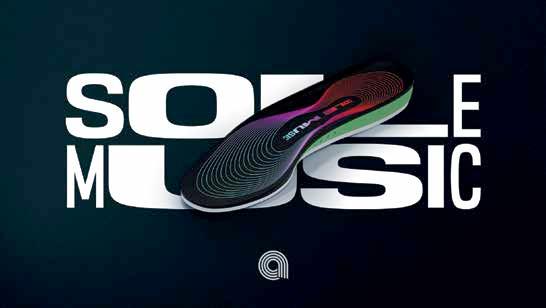
us, something that I’m firmly against. The notorious ‘us and them’ mentality between the creative and brand teams. Each side is usually convinced the other can’t function without them, each side is usually convinced that they’re aiming for different goal posts. That’s a myth. At ‿ and us, strategy, creative, brand (the ‘client servicing’ team) and everyone single person in the agency works towards the same thing: creative solutions where every single person has an equally important role to play.
To help them play that role, and eventually grow the business, they need to be nurtured. They need to feel motivated, inspired and in a supportive environment with tools to help maximize their potential. That’s why we have enrolled our team in Harvard Business School and Berlin School of Creative Leadership courses. ‿ and us also sends our people to
monthly gym as well as yoga memberships, and the entire agency downs tools for two weeks at the end of December for some well-earned relaxation. All this is part of our People First Program (PFP), where we had the policies in place before the name to make sure we could live up it before anything else! As part of PFP, ‿ and us is also dedicated to supporting our community. For instance, up and coming regional talents who show incredible potential but lack the resources to realize it have already been enrolled in the ‿ and us Scholarship Program, where they receive a scholarship to help make their dreams come true. Through the ‿ and us Gives Back Program, we are always reminded of our blessings as we donate a share of our monthly revenue to those across the region who need it the most.
been lucky to work with some of the region and world’s best, most prestigious, game-changing brands and client partners like Saudi Tourism Authority, Google, Twitter, Uber, Deliveroo, Adidas, Hardee’s, Pizza Hut, Anghami, Tencent Games, Centrepoint, Dubai Future Foundation, Shahid…it’s a portfolio as diverse as the people responsible for it. More than 50% of our team are women, with six out of the eight leadership positions being held by them too. 65% are native Arabic speakers (six dialects), while other languages that can be heard in our office include French, Portuguese, Afrikaans, Greek, Spanish, Urdu, Hindi and Malayalam. This isn’t a coincidence, but it’s also not just due to some corporate mandate. Diversity, equality and inclusion is in our DNA.
This brings me to something else that I’ve noticed in my 27-year career preceding ‿ and
specialized tech and innovation events, conferences and forums.
Meanwhile, I believe we are a family – but that’s not because I expect people to put their lives on hold for the agency. It’s because their downtime is as important as their on-time, and their hard work deserves recognition. So, in the unavoidable case that there is work that needs to be done on Saturday and Sunday, for whatever reason, we pay a weekend bonus; pitch wins are celebrated with an instant bonus to the pitch team. Performance (not just years-in-service)- based bonuses are granted throughout the year and our team can always come to us for interest-free loans, no questions asked.
On a less financial note, the entire team has the same global Class A insurance policy, regardless of title or seniority, we award
Finally, I should mention one more thing about the 40 or so odd people on stage at the Lynx. AND US GROUP, established in 2022: ‿ and us for marketing and advertising, No One for branding and design, BlackBox for content production and 10 for all things digital and technology.

Individuals, an ever-growing family of real people who bring the very concept of AND US to life. It’s a perpetual, wild and wonderful work in progress where we all strive to be the best, together.

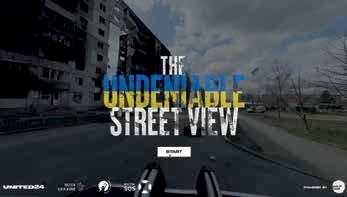
We got our dose of post-winter sun, popsicles, colour and creativity at Dubai Lynx, MENA’s festival and awards for creative excellence in branded communications.
Legendary comedian John Cleese was among the top attractions at Dubai Lynx festival. He shared insights on the nature of creativity and offered advice on how to get those creative juices flowing. The festival also featured lively panel discussions, workshops, conferences and awards for creative leaders and emerging talent including the Young Lynx Academy, which supports young talent by offering them a free, bespoke mentorship programme.
On the second day of the event, Dubai Lynx Awards celebrated winners from the MENA region and showcased creative work of
winning brands such as Adidas and Heinz – who took home a number of Lynx awards each.
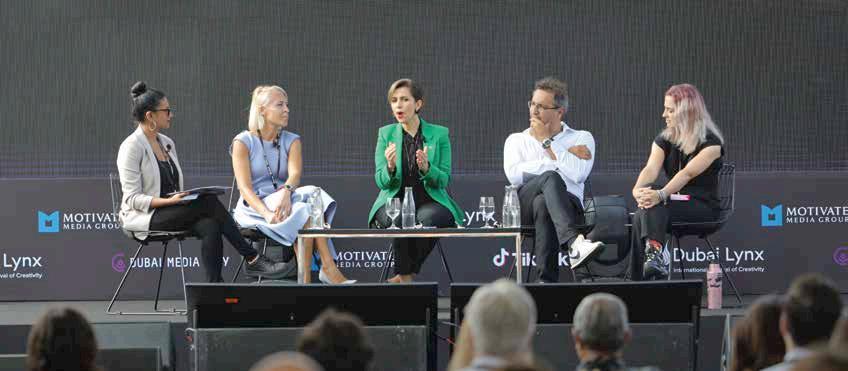
Having won Network and MENA Agency of the Year, Nathalie Gevresse, CEO, Publicis Communications UAE, said: “Leo Burnett has set a new benchmark as Agency and Network of the Year not only at the MENA Effies, but also at Dubai Lynx. We have an exceptional pool of talent who consistently go above and beyond to challenge the boundaries of creativity and their passion and hard work has paid off. Our clients also deserve a round of applause. They trust us as their partner to bring their brands to life in innovative ways, and it is this collaborative approach that results in award-winning work.”
Over the next few pages, Campaign presents The Dubai Lynx festival and work that won Grands Prix at the Lynx Awards.
Title: Dirty Laundry
Client: ABAAD: Resource Center For Gender Equality
Agency: Leo Burnett, Beirut
Production: Leo Burnett, Beirut / Remie Akl- Conceptual Content Creator & Artist, Beirut / Studio Vision, Beirut
Other awards: Bronze – PR, Silver – Healthcare, Silver – Social and Influencer, Silver – Integrated, Gold – PR, Bronze – Digital, Silver – Film
Title: Empty Plates
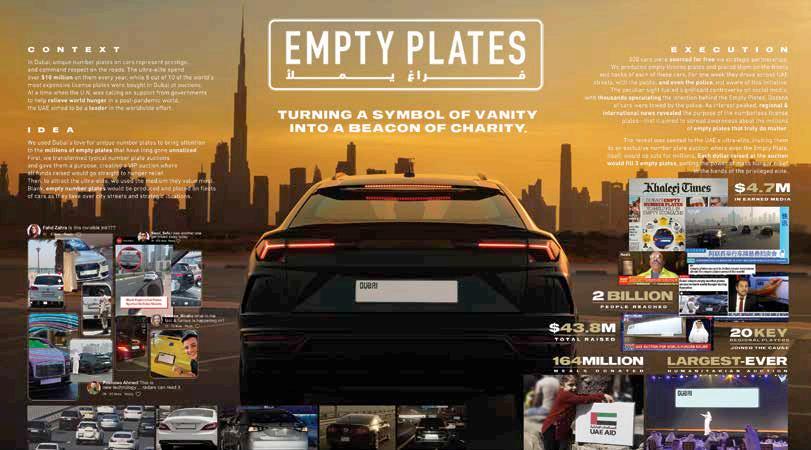
Client: UAE Government Media Office
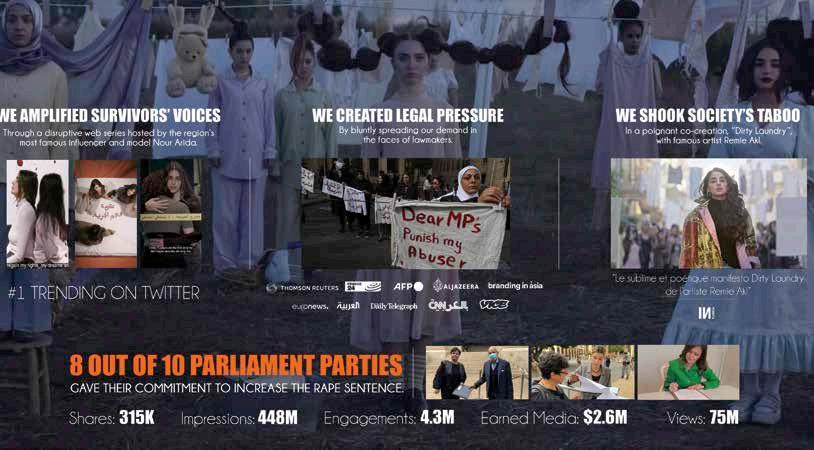
Agency: Prodigious, Dubai / Saatchi & Saatchi, Dubai
Production: Prodigious, Dubai / Saatchi & Saatchi, Dubai / Vox Haus Rio Grande Do Sul
Other awards: Bronze – Direct, Silver – Brand Experience and Activation, Gold – Creative Strategy, Gold – Media, Gold – PR, Gold – Integrated
Title: Adidas x Ravi / The Ravi Superstar

Client: Adidas
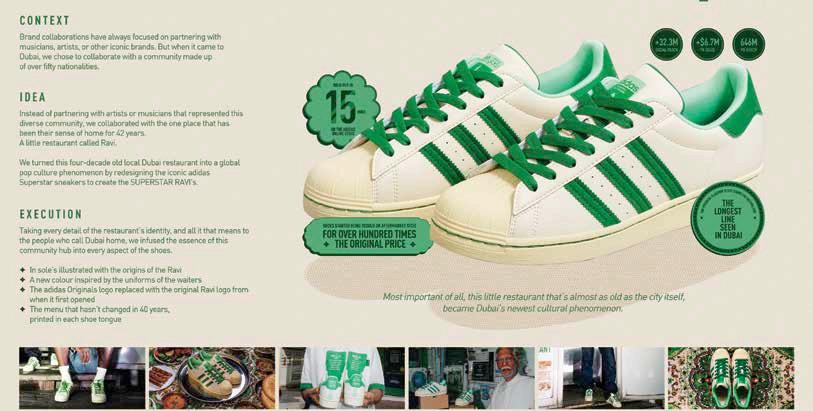
Agency: Sweetwater Communication - Dubai / Havas Middle East


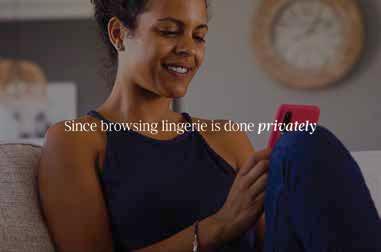
Other awards: Gold Lynx - Industry Craft, Bronze - Brand Experience & Activation, Bronze - PR, Silver - Creative Commerce
Title: As Good As The Original
Client: Burger King, Kuwait
Agency: M&C Saatchi, Abu Dhabi
Production: Dejavu, Dubai
Other awards: Silver – Film Craft
DIGITAL
Title: Self-Check Out
Client: K-Lynn
Agency: Leo Burnett, Dubai
Production: Leo Burnett, Dubai / S Production, Dubai
Other awards: Bronze – Healthcare, Silver – Direct, Gold – Media
Title: Newspapers Inside The Newspaper
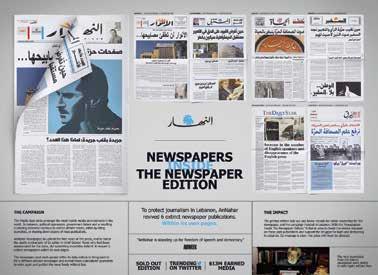
Client: Annahar Newspaper
Agency: Impact BBDO, Dubai
Production: Dejavu, Dubai / Impact BBDO, Beirut

Other awards: Bronze – Creative Strategy, Silver – Media, Silver – PR, Silver –Print and Publishing
Title: Heinzjack
Client: Heinz
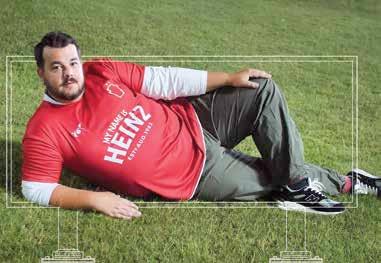
Agency: FP7 McCann, Dubai
Production: FP7 McCann, Dubai / Vuz, Dubai
Other awards: Bronze – Creative Strategy, Bronze – Direct, Bronze –Outdoor, Gold – Brand Experience and Activation, Gold – Entertainment
Title: Super Star Signal
Client: Hardee’s
Agency: And Us, Dubai
Production: Big Kahuna Films, Dubai / Jack The Maker Lisbon
Title: The Call Of Adventure
Client: Jeep
Agency: Publicis Middle East, Dubai
Production: Publicis Middle East, Dubai

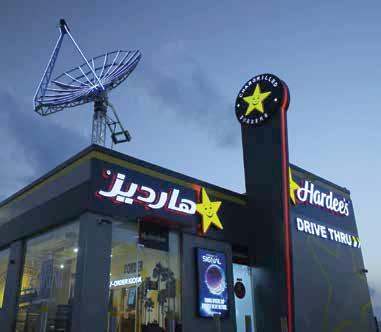
Other awards: Bronze – Brand Experience and Activation, Bronze –Design, Silver – Direct, Silver – Industry Craft
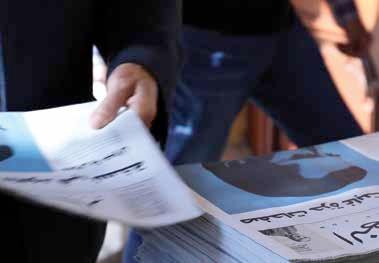
GLASS:
Title: Al Aziya
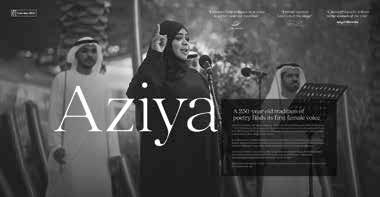
Client: Emirates NBD
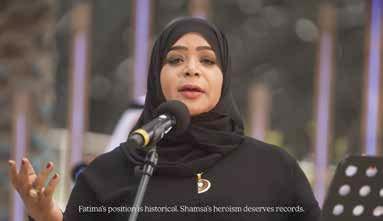
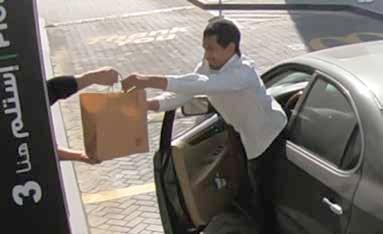
Agency: Leo Burnett, Dubai
Production: Prodigious, Dubai
Title: The Elections Edition
Client: Annahar Newspaper
Agency: Impact BBDO, Dubai

Production: Dejavu, Dubai
Title: The Hidden Room

Title: The Drive Thru School
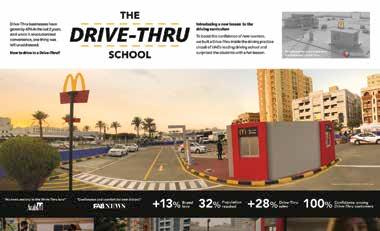
Client: McDonald’s
Agency: Leo Burnett, Dubai
Production: Prodigious, Dubai
Other awards: Bronze – Creative Commerce, Silver – Outdoor
Client: Home Box

Agency: Leo Burnett, Dubai
Production: Liwa Advertising, Dubai
Other awards: Bronze – Brand Experience and Activation, Bronze –Healthcare, Gold – Digital

Title: The Not Hot Periodwear Collection
Client: Always
Agency: Leo Burnett, Beirut
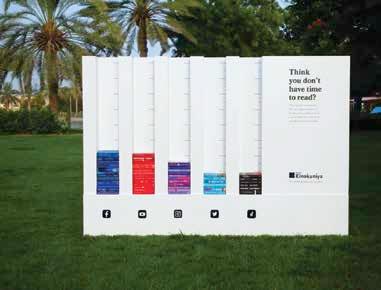
Production: Liwa Advertising, Dubai
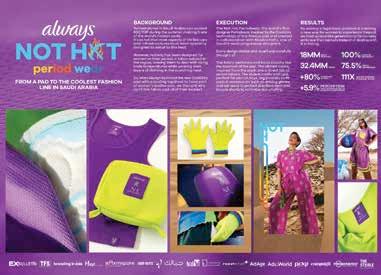
Awards: Bronze – Glass: The Award For Change, Silver – Brand Experience and Activation
Title: The Subconscious Order
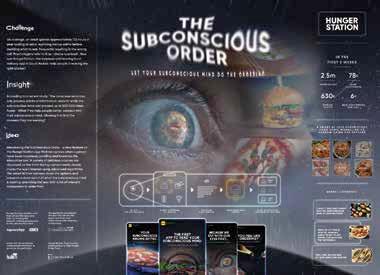
Client: Hungerstation
Agency: Hungerstation, Riyadh / Wunderman Thompson, Riyadh
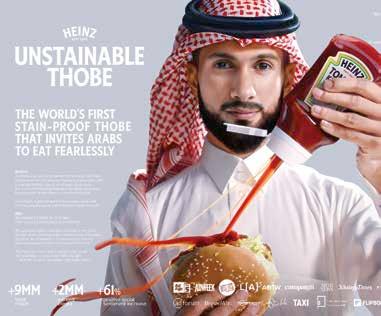
Production: Wunderman Thompson, Seattle
Other awards: Silver – Digital
Title: The Unstainable Thobe
Client: Heinz
Agency: Wunderman Thompson, Dubai
Other awards: Bronze – PR, Silver – Brand Experience and Activation, Silver – Creative Strategy, Silver – PR
Title: Time To Read
Client: Kinokuniya
Agency: Saatchi & Saatchi, Dubai

Production: La Manufacture Paris / Prodigious, Dubai / Vox Haus Rio Grande Do Sul
Other awards: Silver – Direct, Silver – Media, Gold – Brand Experience and Activation

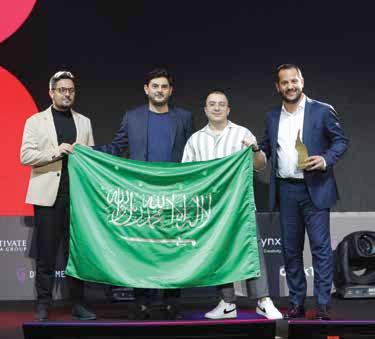
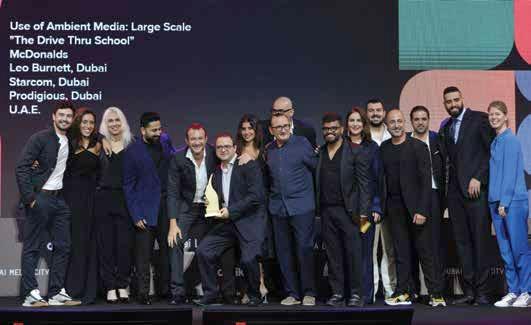
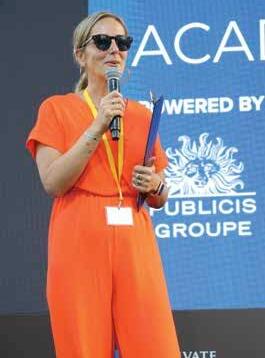
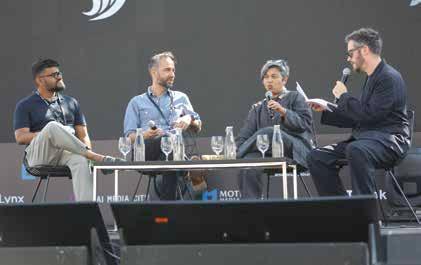
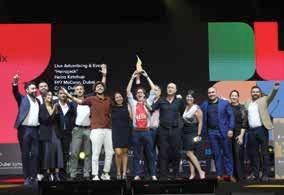
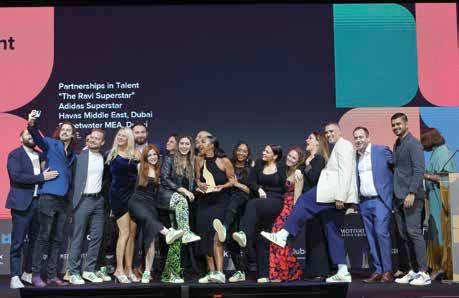
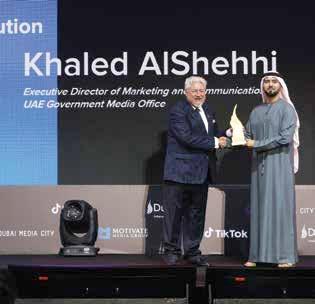
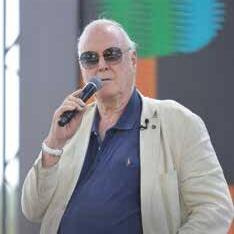
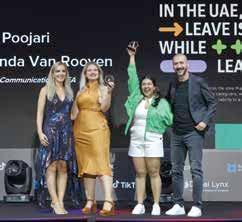
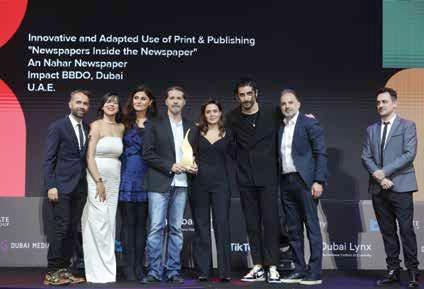

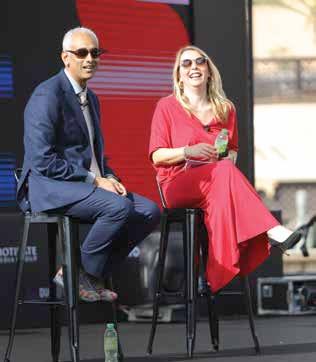
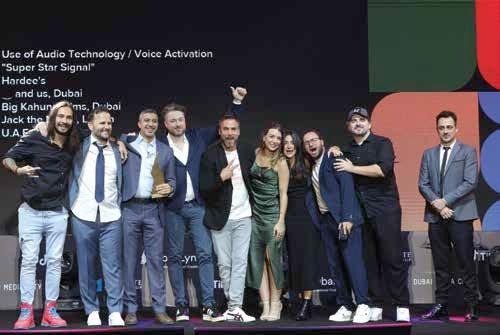
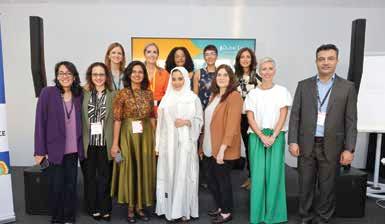


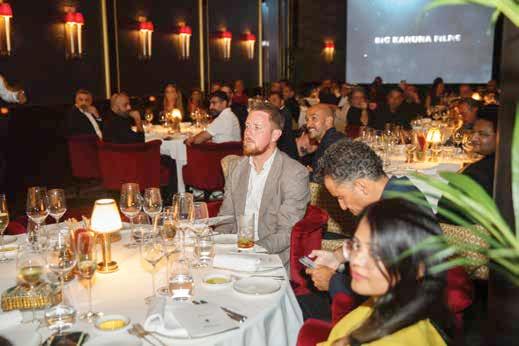
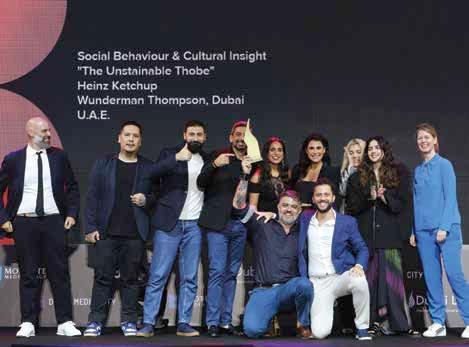

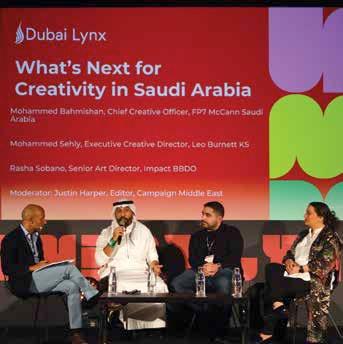


The Dubai Lynx Festival is a must-attend platform for the creative industry in the region. This year, the one-day festival featured plenty of lively debate on issues affecting the creative industry in the region. Industry veterans also took the opportunity for some introspection, discussing what’s going well for the industry, and what’s not.
Campaign sat in on two fascinating roundtables, featuring CMOs and CEOs from across the Middle East. CEOs from the major creative agencies spoke of the common pain points they are facing and what the industry could do to protect itself.
Asking clients to pay for pitches may be a perennial issue but one that continues to gain momentum. Agency heads said that they invest a significant amount of time and resources into pitching despite no certainty of winning the business. Often they don’t hear back from the client for weeks or months.
CEOs from Publicis Groupe, FP7 Mcann, Impact BBDO and TBWA/RAAD were among those challenging the industry norm of free pitches. Other talking points centred around establishing payment terms and minimum timeframes when it came to creating and delivering pitches. These were considered “low hanging fruit” by CEOs, which could be tackled first before they moved onto trickier issues.
The CEOs came together to discuss the big question of ‘Is the agency model broken?’ in a roundtable moderated by Simon Cook, CEO at LIONS . “The model isn’t broken, but the behaviour inside the model is,” said David Fox, CEO Memac Ogilvy for MENA.
An earlier panel discussion at the Lynx festival, titled CMOs in the Spotlight, had uncovered some
of the most challenging issues facing brand leaders in the MENA region. Speakers from the Saudi Tourism Authority, Volkswagen Middle East and LEGO spoke about the strategic role of creativity in moving brands and businesses forward.
Charles Awad, Chief Marketing Officer at Majid Al Futtaim, spoke of the three features that he felt creative agencies needed to work on – agility, speed and integration. Agency CEOs broadly agreed with the comments, although they felt integration and a full-service agency model is a movement many are already moving towards.
Tarek Miknas, CEO at FP7 MENA, said: “How to be faster, more agile, more integrated. We have to figure out how to make all of those three things work, and we are all doing it in our own ways”.
“We’re going back to the future,” added Dani Richa, CEO of BBDO Middle East and Africa. “It’s not just that the clients want it. What we do needs it. Media has never been so close to creative and tech. This is really the shift, going backward to the way it used to be, we are working hard to make sure we have the core capabilities under one roof”.
Finding creative talent and attracting young talent is another challenge facing the industry. Bassel Kakish, CEO of Publicis Groupe for the Middle East and Turkey, felt the drive for fresh talent can often be overlooked among all the technological advances. “What hasn’t changed is that we will always be an industry of talent. No matter what happens you will always have talent at the core of them,” he said.
Another issue was that of exclusivity, with some clients forcing creative agencies to sign exclusivity solely to them. Agency CEOs felt this wasn’t a level playing field as the consultancy firms they compete with are typically free to pitch to multiple clients. In fact, consultancy firms were singled out as one of
ABOVE: David Fox, CEO, Memac Ogilvy for MENA; Bassel Kakish, CEO, Publicis Groupe ME & Turkey; Ian Fairservice, Managing Partner, Motivate Media Group; Simon Cook, CEO, LIONS; Tarek Miknas, CEO, FP7 MENA; Dani Richa, CEO, BBDO Middle East & Africa; Reda Raad, Group CEO, TBWA/Raad; Nick Walsh, Chief Executive Officer, VMLY&R MENA.
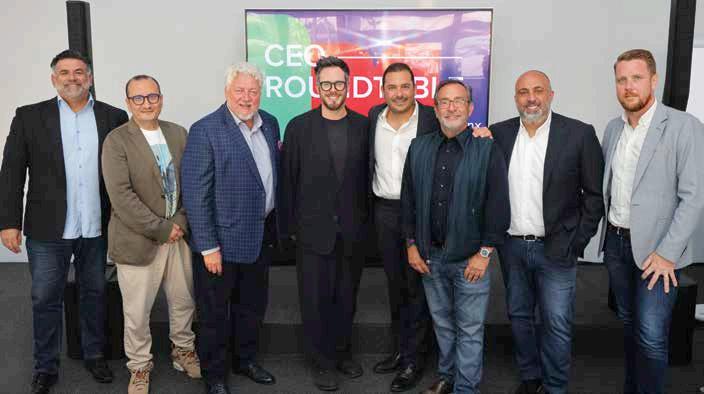
the biggest threats to the industry having bought or launched their own marketing arms in recent years.
“It’s also about client education and being partners with the agency. Start off on the right foot, don’t squeeze the life out of the agency,” advised Nick Walsh, Chief Executive Officer at VMLY&R MENA.
An upbeat Reda Raad, the CEO of TBWA/RAAD, added: “As an industry, there has never been a more exciting time. We are on the verge of a creative renaisaance with all this technology coming up and how it’s going to affect us. We have got a fantastic region.” However, Miknas of FP7 MENA, felt there is more opportunity for cooperation from agencies. “We call ourselves an industry but everyone does their own thing.” The CEOs highlighted the new threats on the horizon in the form of big consultancy firms, production houses, technology companies and social media platforms. The roundtable also included Ian Fairservice, Managing Partner of Motivate Media Group and Vice Chairman of Dubai Lynx, who suggested a number of ideas to help the industry protect itself.
The Dubai Lynx festival hosted a number of intimate get-togethers including a roundtable of leading CMOs hosted by Dentsu Digital, which discussed a range of topics on the minds of chief marketing officers.
Asking clients to pay for pitches was one of the hot topics discussed at this year’s Dubai Lynx festival, writes Campaign editor Justin Harper
Since he took over as the regional CEO of Publicis Groupe, whose agencies include Leo Burnett, Saatchi & Saatchi, Starcom and Publicis Sapient, Bassel Kakish hasn’t shied away from hiring big - it was his first move. And it is probably this move that got Publicis 81 awards, including 11 Grands Prix at Dubai Lynx.
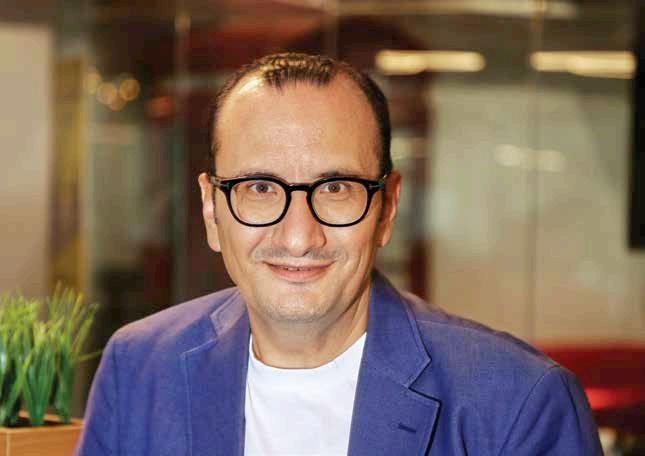
“Our recent success at Lynx is owed to our exceptional team of creative wizards, master strategists and innovative thinkers who consistently push the boundaries of creative excellence. They are not only passionate about their craft, but also deeply committed to delivering impactful work for our clients. Collaboration is key and recognition must be given to our valued clients who believe in the creative process, and trust us to take their brands to new possibilities,” Kakish says.
Publicis Groupe has made some bold and exciting hires recently. Jennifer Fischer, Tahaab Rais, Kalpesh Patankar, Nathalie Gevresse, Sebastien Boutebel and Gautam Wadher are just some of the names added to the Publicis Groupe over the last two years. It reflects his vision of a ‘talent-first’ organisation.
When Campaign asked him to describe Publicis Groupe’s work culture in one word, “Intrapreneurship,” he replied without any hesitation. “What I’m proud of is the fact that we were able to attract and maintain such talent within the group. We are in the talent business and need to ensure we have the best in the market,” he says. Some of the new roles were created and shaped by individuals. He states, “We don’t have a job description
while transforming specific products or processes. We would look for a person who understands our work’s future and has the EQ and IQ to manage various stakeholders. We also know that it is about what we need to give them – every single talent has their own ecosystem.”
Kakish’s other area of focus is technology, considering his background: Kakish worked with the Publicis Groupe Middle East for 20 years across various strategic
capacities - as the chief financial officer and integration officer and co-managing director of Publicis Sapient. His experience gives him a unique vantage point. Under his leadership, Publicis Groupe integrated operations across creative, media and technology.
“I’m lucky to have played those roles as it gave me insights into the various solutions of the group and when to integrate them. It gives us a unique proposition. Regarding finance, you need to understand the areas you need to focus on and the factors within your control. Our industry’s core product is talent, and finances are a byproduct.” He adds that it is crucial not to lose your core focus – creativity as far as the agency is concerned. He believes that when you start shifting your focus towards other priorities, you lose your talent and then your product. He adds, “As an agency, we ensure that the clients are getting the best ROI because, at the end of the day, we are custodians for our clients’ investments.” Success can look different through each client’s lens. Some consider success as the number of units sold; some look at it from the brand health perspective, while others look for a creative ad.
THE UMBRELLA APPROACH
Publicis Groupe now identifies itself as a ‘connecting company.’ Kakish says: “Client simplicity is at our core as we need to support clients in a modular way. Today, the client deals with many variables. We simplify it with one common objective, and we work with one set of KPIs for all our solutions; I’m extremely conscious that we should never drop the ball on it.”
Kakish’s expertise in the intersection of technology and creativity, combined with his financial acumen, gives the group a distinct advantage in transforming its “Power of One” vision. This approach prioritises clients and enables them to access all of the holding’s expertise quickly. The group is transitioning from a ‘holding company’ into a platform. It’s the direction every network agency seems to be taking –almost like an unravelling of the 1990s.
By Jalaja Ramanunni‘‘WHAT I’M PROUD OF IS THE FACT THAT WE ATTRACT AND MAINTAIN TALENT. WE ARE IN THE TALENT BUSINESS AND NEED TO ENSURE WE HAVE THE BEST IN THE MARKET.’’
Bassel Kakish reveals his superpower behind 81 Lynx wins in a conversation with Jalaja Ramanunni and Austyn Allison
Back by popular demand. Welcome to our fourth annual Know Your Platform guide. It has changed significantly over the years as the world of social media has developed at breakneck speed. Some friends of Campaign have suggested we do a guide every month, given the high level of updates and changes social media companies make to their platforms.
Social media platforms have undergone significant changes since their inception and continue to morph outside of their traditional social media realms. They have got bigger in terms of their user base, and sites like Facebook, Instagram and LinkedIn have billions of users worldwide.
The content they offer has also dramatically changed beyond text-based updates. Now images, videos and livestreaming are proving the most popular types of content. Short-form video content is the king of content right now and TikTok and Instagram are proving to be the platforms of choice.

This content is becoming scarily personalised as platforms increasingly use algorithms to understand users’ likes and interests. Artificial intelligence is making this content even more personalised and targeted.



From a marketing point of view, brands are now woven into the social media platform fabric and e-commerce has gradually been integrated into them. This means you can buy products and services directly from a platform
in a seamless transition.


With their rise in popularity and users, social media platforms had come under increased scrutiny for their impact on mental health, the spread of fake news and their role in political campaigns. But it seems that big tech and social media firms have moved out of the spotlight, and now the banks are being targeted by regulators instead.
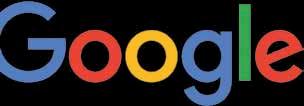
So, where is social media heading? On the next few pages, we give some insights from the platforms themselves on what new functions and features they have up their sleeves. Beyond that, we could start to see more interactive and immersive content. With the rise of augmented reality and virtual reality, social media platforms may allow users to experience events, products and services in a more engaging way.
What is more likely, though, is the continued integration of e-commerce as social media platforms continue to integrate functionalities such as in-app purchases and shopping features, allowing users to buy products without leaving the app or site.
While our Know Your Platform Guide will remain annual, we have started summarising the key changes of social media platforms on a regular page imaginatively called ‘Social media updates this month’. This highlights the most important changes made to your favourite platforms, in case you missed them. Perhaps give us a thumbs up when you get a chance.
Social media platforms are part of our daily lives, and how we interact with them is constantly changing, writes Justin Harper
Social media is like the wind, constantly changing and morphing with new features and trends popping up all the time. We've compiled the top updates that have taken place over the previous month which you need to know about.
Announces ‘Meta Verified’
Users who meet specific eligibility criteria can now get the blue badge on Meta’s app for a monthly fee. This service offers increased visibility in search, comments, and recommendations along with direct access to customer support.
Outlines upcoming generative AI plans
Meta is poised to bring generative AI experiences across its platforms in no time. They are going big with plans to add AI chat capabilities to WhatsApp and Messenger, image filters and ad formats to Instagram, and video and multi-modal experiences.
May soon charge businesses $1K a month to remain verified
This is part of the newly launched ‘Verified for Organizations’ program, where Twitter is also planning to charge brands $50 per month for affiliate account verification. Those who don’t pay will lose their gold badge.
Plans to extend tweets to 10K characters
Following its recent extension of the character limit to 4K, Twitter is now taking things up a notch by allowing Blue subscribers
Introduces new features into its ‘Promote’ toolbox
The four new Promote options will allow creators to increase profile views, receive more messages from potential customers, boost other creators' content, and target audiences by location.
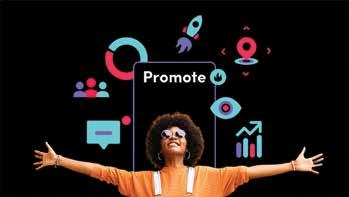
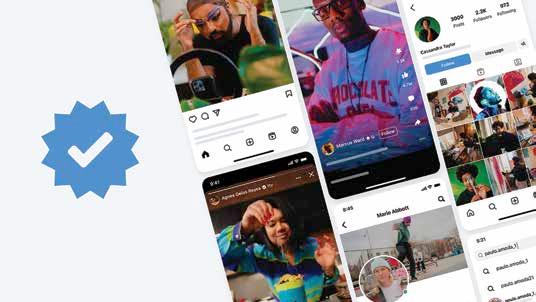
Introduces ‘Series’
This new option will allow content creators to curate collections of paywalled content up to 20 minutes in length, available for purchase by their fans.
Tests a ‘Lead Form’ as a CTA button in bios
This will enable businesses to generate direct responses from their in-app presence. To activate it, brands can either opt for the standard data collection option or choose ‘Custom Lead’ to craft their own questionnaire.
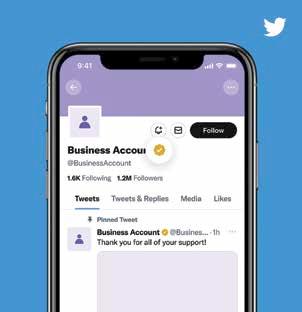
Considers adding location tags on Reels
The new “Based in _” location marker is going to be placed above the creators’ usernames and aims to provide more transparency for users.
Joins the Chatbot party
Snap Inc. just made it as the first social platform to integrate ChatGPT elements into its brand-new "My AI”. The option is currently exclusive to Plus subscribers and is accessible inside the chat tab.
Launches Ray Tracing technology
It is a new technical capability that allows digital objects to appear more realistic in augmented reality by reflecting light on them. The option is available in Lens Studio for developers worldwide.

Expands access to multi-language audio
Creators can now add dubbing to new and existing videos helping them expand their content reach to global audiences. Viewers will also get a wide range of global videos to discover.
Announces a new Cost-Per-Hour Masthead ad
This will allow advertisers to capitalize on tentpole moments. They will also have access to new measurement capabilities for the masthead, enabling them to measure the effectiveness of their ads.
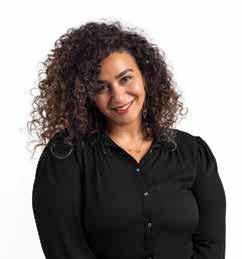
It’s undeniable that Gen Z plays a major role in the social media industry nowadays. The majority of the trendsetters, influencers, entrepreneurs and some of the well-known faces and success stories are from that age group. But are millennials at risk somehow? Are they getting replaced in the workspace? Are millennials supposed to look at different industries and shift careers if Gen Z is taking over social media?
As the market changes, there is something new every day to be offered, there is always an edge with each age group. Gen Z might be trendsetters but millennials are the know-howers. But in order for a millennial to keep up with the market pace, daily changes and trends, they had to incorporate a new perception into their mindsets, a compound interest in the form of having an ‘adaptive’ way of thinking to build up every day.
Social media has become an integral part of our daily lives, and each generation has its unique way of interacting with it. In order to be a ‘digital native’, a super adaptive and flexible mindset is essential to excel in your career in social media without losing your identity or edge.
So here is a 101 guide to understanding Gen Z, and maintaining your nostalgic millennial spirit.
First, you need to understand yourself as a millennial. We grew up to witness all the technological changes in the market, we lived through the disruption and the internet explosion, we have a huge emotional nostalgic persona, value privacy, are known for being curious and independent as we are the first to truly grasp the digital world.
In a workplace, you will find us fulfilled with a responsible attitude, work ethics and the drive to do and achieve more in life. But in order to thrive in a competitive market, you need to understand them.
Social media and wifi have been part of Gen Z’s vernacular from birth, they were practically born with smartphones in their hands, and they are true digital natives. As technology has always been so integrated into their lives, Gen Z is typically more progressive in the digital world than their millennial counterparts, frequently being at the forefront of emerging trends on TikTok and Instagram.
The main question here is - how to keep up with Gen Z and understand the assignment?
Regular captions that are hard selling are now old-school. If you don’t incorporate some Gen Z slang in the
middle, you lose a whole segment of your audience.
It goes without saying that video content now is the main key player in the market, Use short-form video content like TikTok or Instagram Reels to engage with your audience. Some platforms like TikTok offer creative centres to help their users with some creative tips to elevate their accounts and content creation process.
91 per cent of Gen Z prefer video content over other marketing formats. This is why TikTok is considered one of the top platforms to market eye-catching campaigns that speak directly to Gen Z. TikTok revolves around bite-sized entertainment, whereas Instagram is viewed as their hub of social media.
Some Gen Zers identify TikTok as the new Google (but better), it’s the main source to conceptualize and search for references and trends. Gen Zs love humour and memes. Use humour to connect with your audience and create shareable content. The desire for fun is so meaningful and helps them traverse some difficult times.
They are passionate about social and environmental issues as well. Show your support for important causes and make sure your brand or profile aligns with your values. Gen Z use social media as their main source of shopping inspiration as they don’t just want entertainment from other users. They’re looking for fun content from brands too.
Spending 30 minutes daily to go through a diversity of content on TikTok and Instagram will help you stay up to date with trending transactions, audio, and ideas. TikTok is the new source for cultural trends – and Gen Z is first in line to see and create them.
You don’t have to be a huge name to spark a trend. On TikTok, users fall in love with ideas first, whether that’s a trending song, a popular video concept or a viral visual aspect. Gen Z is consistent when it comes to content creation and posting, they are not scared to try out new trends no matter how fancy or silly they are. By taking major content-related risks, some creations go viral and make an account more recognisable.
Social media is a powerful tool that can be used to connect with people, share information and build communities. While Gen Z is dominating the social media industry with trendsetting influencers and entrepreneurs, millennials can still excel by adapting to the ever-changing market and incorporating Gen Z’s digital native perspective.
By Maha Hussein, Social Media Manager at Hashtag“Social media and wifi have been part of Gen Z’s vernacular from birth, they were practically born with smartphones in their hands.”
experiences hosted by locals. The influencer created a series of Instagram posts and stories showcasing her experience with different Airbnb Experiences, such as a pasta-making class unique opportunity for creators to monetize their content. From the creation and consumption perspective, influencer marketing has fundamentally changed how people consume and interact with advertising.
Unlike traditional advertising methods, influencer marketing allows brands to connect with their target audience through individuals who have already built trust and credibility with their followers. By partnering with influencers who align with their brand values and ethos, brands can leverage their existing audience and reach new potential customers.

One example of a successful influencer marketing campaign is the collaboration between Adidas and Instagram influencer @juicegee. Adidas partnered with the sneaker enthusiast to promote the launch of its new Nite Jogger sneakers. The influencer created a series of Instagram posts and stories showcasing the sneakers in different settings, from the city streets to the gym. The influencer generated buzz and excitement around the launch through his engaging content and loyal following, resulting in a successful campaign.
In addition to increasing brand awareness and engagement, influencer marketing has provided a new revenue stream for content creators. Influencers can now monetize their content and leverage their followings to partner with brands and earn a living from their online presence. This has led to a rise in content creators and influencers across social media platforms.
One example of a successful influencer monetization strategy is the Patreon account of YouTube creator Linus Tech Tips. Linus Tech Tips is a popular tech-focused YouTube channel with over 13 million subscribers. In addition to ad revenue, the creator has monetized his content through the Patreon platform. Patreon allows creators to earn money from their fans and followers by offering exclusive content, merchandise and other perks. Through his Patreon account, Linus Tech Tips has made over $60,000 per month from his loyal fan base.


In recent years, influencer marketing has emerged as a powerful tool within the digital marketing space. It has transformed how brands approach advertising and extended a shifting towards more authentic and
Influencer marketing has also changed the way brands approach content creation. With the rise of influencers and user-generated content, brands are shifting towards more authentic and relatable content. By partnering with influencers and allowing them to create their content, brands can tap into the influencer’s unique voice and style while reaching a wider audience.
One example of a successful influencer marketing campaign that resonated with consumers is the collaboration between Airbnb and Instagram influencer @ lucylaucht. The brand partnered with the influencer to promote its Experiences platform, which offers unique travel
in Rome and a sunset yoga session in Dubai. Through her engaging content and storytelling, she was able to convey the unique and authentic experiences that Airbnb has to offer. This resulted in a successful campaign that resonated with consumers and helped to increase bookings for Airbnb Experiences.
Influencer marketing has transformed the digital marketing trajectory from both the creation and consumption perspective. It has provided a new way for brands to reach their target audience authentically and engagingly while providing a new revenue stream for
brands approach content creation, shifting towards more authentic and relatable content. It essentially works because influencers tend to focus on content that aligns with the interests and values of their followers.
In addition to the changes above, the rise of artificial intelligence (AI) has revolutionized the influencer management industry. AI-powered tools are now also being used to identify influencers who are most likely to resonate with a brand’s target audience and track and measure influencer
campaigns’ success. This allows brands to regarding influencer marketing and ensures that their movements reach the






make more data-driven decisions right people and deliver results.
There are several examples of AIpowered influencer campaigns in the collaboration between the luxury brand Dior and the Dubai-based influencer Karen Wazen. Dior used AI technology to performing influencer within its target audience in the region. It then partnered with her to promote its Rouge Dior successful campaign that generated

Middle East. One example is the identify Karen Wazen as a top-

















lipstick collection, resulting in a successful campaign that generated significant engagement and sales.
advance, we can expect to see even more innovative uses of AI in the region’s influencer marketing world. Influencer marketing is doing wonders for brands from a good return on investment to leading to great sales. One thing is for sure, however, influencer marketing is here to stay and will continue to play an essential role in digital marketing for
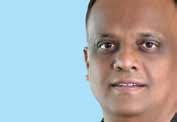
As the technology continues to advance, we can expect to see even more influencer marketing world. Influencer marketing is doing wonders for brands leading to great sales. One thing is for sure, however, influencer marketing is essential role in digital marketing for years to come.
ByLovetto Nazareth explores how influencer marketing has transformed the digital marketing trajectory
Founded: 2004
Parent company: Meta Platforms, Inc.

Regional head: Fares Akkad, Regional Director of Middle East and North Africa region, Meta


Global HQ: Menlo Park, California, USA
Regional HQ: Dubai, U.A.E.
Number of users worldwide: 3.75 billion people using Meta platforms every month (Facebook, WhatsApp, Instagram, or Messenger)
DESCRIPTION: We build technologies to give people the power to connect with friends and family, find communities and grow businesses.

WHAT ARE THE KPIS BRANDS LOOK FOR ON YOUR PLATFORM?
We have tools that enable brands to measure all KPIs depending on the objective of the campaign. If it’s a branding campaign, brands would look at engagement metrics available in our reports and brand metric lifts that can be measured with brand lift surveys. If it is a performance campaign, they would report on business KPIs such as incremental sales.
WHAT IS ONE THING ABOUT YOUR PLATFORM THAT YOU WISH MORE MARKETERS KNEW?
How to better leverage our branded content tools that enable
marketers to drive more effectiveness for their collaborations with creators.
WHAT NEW FEATURES OR CHANGES HAVE YOU MADE RECENTLY?
We’re heavily invested in building tools for creators. We’ve been working to greatly simplify the Facebook experience for creators, rolling out more formats for creative expression, providing tools to help grow and manage fan communities, and expanding ways to earn income as a creator on Facebook.
We’re also seeing more people turning to messaging as a way to build community. We started introducing community chats to some Facebook Groups last year as a way for people to connect more deeply with their online communities in real time around the topics they care about.
Using AI to make it easier for people to share what they discover on Facebook via messaging, when, where and how it suits their needs, without needing to switch to another app. Private conversations are a big way that people share and connect on our apps.
Using AI to recommend all types of content beyond Reels: photos, text, groups, short- and long-form videos and more. This is a massive technological undertaking and AI-powered recommendations are delivered and refined in response to people’s direct feedback through tools like our Show More or Show Less feature.
At Meta, we pride ourselves in putting people at the center of new technology trends. Our investments in AI are unlocking new ways for people to discover great new content on Facebook and share it with the people they care about.
Over the coming year, we’ll continue expanding our ads on Facebook Reels tests to help more creators earn ad revenue for their Reels and grow virtual gifting via Stars on Reels. We’ll build more ways to integrate messaging features in Facebook. Ultimately, we want it to be easy and convenient for people to connect and share, whether in the Messenger app or directly within Facebook.
As our world class Meta AI research teams continue to make advancements in AI, particularly generative AI, Facebook — and Meta more broadly — will look to bring this transformative technology to billions of people and allow them to create and share in new ways. Stay tuned.
 By Ghida Ismail, Media Director at Fusion 5
By Ghida Ismail, Media Director at Fusion 5
In today’s crowded world of social media, standing out can be a challenge. It’s easy to wonder how some influencers make it look effortless to capture attention and inspire action. The secret lies in the world of influencer marketing, where brands are teaming up with influencers to create a powerful impact that cuts through the noise and leaves a lasting impression on their audience.
Influencer marketing has emerged as a powerful tool for businesses to leverage the vast reach and impact of social media influencers to promote their brands and products. While a comprehensive 360-degree campaign that invests across various media channels to optimize return on investment has historically yielded the most impactful results, the advent of influencer marketing has led to a considerable reallocation of campaign budgets. Brands are increasingly turning to influencers to enhance brand awareness and establish product credibility, with these powerful personalities now commanding a significant portion of the overall campaign expenditure.
The global influencer marketing industry has experienced remarkable growth, skyrocketing by 250 per cent to reach a staggering $16.4 billion in 2022. The demand for authenticity and transparency in marketing has spurred the growth of influencer marketing, with influencers being perceived as more credible and trustworthy as the content they create is ‘more real’. As marketers
increasingly seek new and innovative ways to engage their target audience and drive sales, influencer marketing is poised to remain a highly valuable and evolving tool for brands for years to come.
Customization and personalization are now essential aspects of digital marketing, and influencer marketing is no exception. Influencers have mastered the art of creating engaging content for their followers by choosing a specific interest or niche and creating content around it.
As the industry continues to evolve, it’s important for brands to stay up-to-date on the latest trends and best practices to ensure they are maximizing their impact and reaching their target audience effectively.
Here are some of the top trends shaping the influencer marketing landscape today.
Authenticity and transparency: Consumers are increasingly seeking out influencers who they perceive as authentic and trustworthy. Influencers who create content that is ‘real’ and transparent are more likely to gain the trust of their followers and increase engagement.
Micro-influencers: While celebrity and mega-influencers still have their place in influencer marketing, micro-influencers are becoming increasingly popular. These influencers may have smaller followings, but they often have a more engaged and niche audience, making them a valuable asset for brands.
Video content: Video content has been on the rise for some time now, and it’s no different in influencer marketing. Platforms like Instagram and TikTok have made it easier for influencers to create and share video content, which can be more engaging and memorable for followers. Long-term partnerships: Brands are increasingly looking for long-term partnerships with influencers, rather than one-off campaigns. This allows for a more authentic relationship to be built between the brand and influencer, which can translate into more meaningful content and better results.
Diversity and inclusion: Consumers are increasingly looking for brands and influencers that represent and support diversity and inclusion. Brands that
partner with influencers from different backgrounds and demographics can appeal to a wider audience and build a more inclusive brand image.
Performance-based compensation: Brands are moving away from paying influencers a flat fee for their services and are instead exploring performance-based compensation models. This allows brands to pay influencers based on the results they achieve, such as clicks, conversions, and sales, which can be more cost-effective and help ensure ROI.
Success stories of influencer marketing abound, with luxury fashion brand Bottega Veneta experiencing a 37 per cent increase in online sales during the month of its campaign with British miodel Rosie Huntington-Whiteley promoting a new collection of handbags through a series of Instagram posts and stories called #ThePouch. Similarly, UAE-based lifestyle micro influencers collaborating with Splash resulted in over 20 million impressions and a more than 25 per cent increase in sales for a new collection. By leveraging the creativity and influence of social media influencers, brands can create excitement and anticipation around their products, leading to a significant uplift in sales.
The rise of user-generated content (UGC) has raised the question of whether brands still need to spend millions on production for TV commercials. While UGC has the potential to save brands money, they still need to maintain a balance between UGC and traditional production to maintain their brand image and quality standards. The future of advertising may include a combination of both, as brands strive to create content that resonates with their audience and drives engagement and sales.
The world of influencer marketing has revolutionized the way brands reach out to potential customers on social media platforms. As the industry continues to grow and evolve, businesses that adapt quickly to new trends and changes in the digital landscape will be better positioned to capitalize on important opportunities and stay ahead of the competition. As marketers, we are eager to see how content creators will maintain innovation and personalization for different brands and still resonate with their audience.
Founded: 1998
Parent company: Google

Regional Head: Anthony Nakache, Managing Director at Google MENA

Global HQ: Mountain View, California, USA
Regional HQ: Local offices in the UAE, Egypt and Qatar
DESCRIPTION: Google’s mission is to organise the world’s information and make
it universally accessible and useful.
USER DEMOGRAPHIC/PROFILE: All loggedin users

WHAT DO PEOPLE BEST KNOW YOU AS? Search BIGGEST MISCONCEPTION ABOUT THE PLATFORM?
Misconception: Majority of users in MENA search in English.
Fact: Over 50% of searches happen in Arabic across the MENA region and that number soars to 70% in Egypt and Saudi Arabia.
WHAT CAN YOU DO BEST FOR BRANDS? Helping advertisers and businesses drive awareness and conversions for their products and services.
WHAT ARE THE KPIS BRANDS LOOK FOR ON YOUR PLATFORM?

Many KPIs depending on each brand’s objectives including; impressions, CTR, conversion rate etc.
WHAT NEW FEATURES HAVE YOU LAUNCHED IN THE LAST YEAR?
We have new AI-powered features that can elevate the performance and impact of campaigns. Performance Max helps find valuable customers and multiply conversions across Google’s full range of advertising channels and inventory. AI-based measurement solutions like Google Analytics 4 can automatically surface relevant insights and predict future consumer behaviour to help marketers gain a more complete view of their campaign performance. And online to offline measurement solutions that show advertisers the holistic impact of their media spend and provides advertisers with a more comprehensive look into the performance of their advertising, both online and offline.
WHAT NEW FEATURES CAN WE LOOK FORWARD TO IN THE NEXT YEAR?
We’re excited about AI-powered features like multisearch that are making the search experience even more natural and visual. This year, with Search Ads, we are embedding the power of AI within our solutions even further to enable advertisers to engage with the right consumer at the right time through activating be er creatives and reaching new audiences.
DO YOU HAVE ANYTHING SPECIAL PLANNED FOR RAMADAN?
With video watchtime increasing every Ramadan, we published a guide for marketers to help video creatives stand out.
HOW HAVE USER HABITS CHANGED ON YOUR PLATFORM IN THE PAST TWO YEARS?
Consumers have never had more options — more ways to get inspired, more ways to research, more ways to buy. And in times of uncertainty, their needs and preferences can be more unpredictable and evolve more quickly than expected. Searching for ‘price of gas’ today can turn into a search for ‘best electric cars’ tomorrow.
For marketers, this means the speed at which you need to analyse data, find customer insights and adapt how your brand shows up is unlike anything you’ve experienced before. And the ‘right customer’ and ‘right message’ is a moving target. The silver lining is that uncertain times can lead to unexpected opportunities — especially for businesses who stay agile and adapt quickly to continued change. Google’s AI is your business multiplier. Your expertise combined with the power of AI is the true difference maker to help you multiply results today and growth for the future.
Search is changing, and our continued investments in AIpowered features like multisearch are making the search experience even more natural and visual. As consumer behaviour evolves with this shift, it’s more important than ever to ensure that people can connect with your business through search ads that are both relevant and helpful. That’s why we’re always introducing new tools that can help marketers unlock the power of your Search ads with stronger creative and better performance.
State-of-the-art language models have got 50 per cent better at understanding human language. These advancements in AI help advertisers show up in more valuable search moments and capture new performance opportunities as they emerge in real time.


There was a time that if you mentioned social media, then Facebook was the first thing to come to mind. A lot has changed since 2004. Of all the different social platforms Facebook is perhaps the most resilient, but it’s not the powerhouse it once was.
Twitter, Instagram, and Snapchat have all experienced highs and lows over the years too, especially now that TikTok has positioned itself as the go-to platform for both brands and consumers. This suggests a larger shift as video content becomes increasingly important in social media advertising.
Platforms like Instagram and TikTok have already become popular channels for video ads, and while this trend is expected to continue, brands could also tap into other channels and alternatives, such as YouTube Shorts and Twitch.
I believe we’re at an interesting point with the continued evolution of social media, both in how advertisers target and how users consume content. From a brand perspective, they need to consider how they can target effectively in a privacy-friendly way that isn’t intrusive or interruptive. And that’s not an easy thing to do, especially given users’ reduced attention span. You used to have 8 seconds to make an impression, now it’s between 4.5 - 5 seconds. With Gen Z it’s 1.3 seconds.
As data privacy and security continue to be key talking points too, a wider crackdown could be imminent, leading to more strict regulations on data collection and its usage. It will mean that every player in the ecosystem will need to rethink how to be most effective, especially as social media is such a key part of the overall marketing mix today.
with suitable influencers, depending on the requirements, location, target audience or any other criteria.
Users want to consume more content in less time, which is why short-form video content is so popular across TikTok, Reels, and now YouTube Shorts, as they all cater specifically to this demand. According to Google’s earnings report last month, Shorts has now crossed 50 billion daily views, up from 30 billion daily views reported in Q1 2022.
The platform is also gaining traction with content creators looking to grow their audience outside of more closed apps. For brands, there is an opportunity to utilize the full YouTube suite of solutions (including access to brand lift studies etc.) to increase brand awareness and gain subscribers by testing content on this platform too.
This is one to have on the radar; I refer to it as ‘the sleeping dragon’ of social platforms. Twitch is the #1 live stream community in the world. It’s not niche by any means, however its potential in this region has yet to be fully explored. There is a challenge to show that this platform isn’t just limited to gaming. In fact, non-gaming content is a key area for growth, and as Twitch is a part of the Amazon universe, there is a big opportunity for cross promotion with other services and solutions.
In the UAE, social media users account for 98.99% of the total population, with the average daily time spent online around 2 hours and 50 mins. You can see why brands consider these platforms so valuable, both in terms of reach and revenue generation. Where there is an opportunity is to expand beyond the ‘traditional’ channels we have all become so familiar with and diversify a bit.
how to be most effective, especially as social media is of the total population, with the average daily time 50 valuable, both in terms of reach and revenue Where all become so familiar with and diversify a bit.
We can see an influencer marketing boom in the region due to high levels of social media usage and the fact that in the UAE, most of the population is young and highly engaged online. Advances in technology have also helped this channel become more credible with the emergence of more influencer platforms that help match brands up
Twitch’s user base is primarily young, community-focused the likelihood of conversion. As the user preference leans
Twitch’s user base is primarily young, community-focused and in-tune with the advertising they see, which increases the likelihood of conversion. As the user preference leans more into community-led advertising, brands would have a crucial role to play in catering to this audience on a platform like Twitch.
What UAE 6.73
networking and direct brand marketing.
generate sales, provide personalized


Using chatbots in e-commerce is nothing new. We have been automating parts of the sales process and customer service for a while now. What we are seeing is the evolution of chatbot-based API solutions that can perform business ops via chat. WhatsApp comes out on top as the most used social media platform in the UAE with 6.73 million active users. It’s become more than just a messaging app; it’s actively used now for networking and direct brand marketing. There are lots of possibilities for marketing on WhatsApp. Chatbots can help generate sales, provide personalized recommendations and promotions, as well as collecting feedback. Chat’s functionality isn’t limited, and I believe this year we will really start to see what it’s capable of.
By Romit Gharat, AdTech Director at MMP World Wide

Founded: 2004
Parent company: Meta Platforms, Inc.


Regional head: Fares Akkad, Regional Director of Middle East and North Africa region, Meta

Global HQ: Menlo Park, California, USA
Regional HQ: Dubai, UAE
Number of users worldwide: 3.75 billion people using Meta platforms every month (Facebook, WhatsApp, Instagram or Messenger)
DESCRIPTION: Instagram is the place for creators and teens to express themselves and connect over creativity and their interests. We inspire people and bring them to people and things they love. Expression is at the heart of what we do. We want to help people express themselves authentically, easily and creatively through photos and videos. We’re commi ed to fostering a safe and supportive community for everyone so people can connect, build influence and create compelling content that’s distinctly theirs.
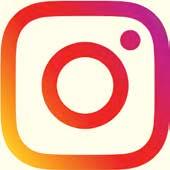
USER DEMOGRAPHICS: Teens
WHAT ARE THE KPIS BRANDS LOOK FOR ON YOUR PLATFORM?

We have tools that enable brands to measure all KPIs depending on the objective of the campaign. If it’s a branding campaign, brands would look at engagement metrics available in our reports and brand metric lifts that can be measured with brand lift surveys. If it is a performance campaign, they would report on business KPIs such as incremental sales.
WHAT IS ONE THING ABOUT YOUR PLATFORM THAT YOU WISH MORE MARKETERS KNEW?
How to be er leverage our branded content tools that enable marketers to drive more effectiveness for their collaborations with creators.
WHAT NEW FEATURES OR CHANGES HAVE YOU MADE RECENTLY?
We recently introduced new features to make it even more difficult for suspicious adults to interact with teens. We’ve developed more than 30 tools to support the safety of teens and families across our apps, including supervision tools for parents and age-verification technology that helps teens have age-appropriate experiences online. There are more resources for parents so they can talk to their teens about how to be safe online in our Safety Center. We are also introducing broadcast channels on Instagram, a one-to-many messaging tool that allows creators to engage directly with their followers at scale, and testing Meta Verified, a new subscription bundle that includes account verification with impersonation protections and access to increased visibility and support.
WHAT NEW FEATURES CAN WE LOOK FORWARD TO IN THE COMING YEAR?
We’re testing new features with a handful of US creators and will be rolling it out to more creators soon in additional countries.
Also, we want people, especially young people, to foster their online relationships in an environment where they feel safe, and where they leave our apps feeling good about the time they spend on them. We don’t allow harmful content, or content or behavior that exploits young people. We work closely with experts in mental health, child psychology, digital literacy and more, to build features and tools so people can connect online safely and responsibly.
Founded: 2011
Parent company: Snap Inc.


Regional head: Hussein Freijeh, General Manager, MENA, Snap Inc.
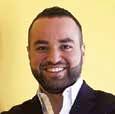
Global HQ: Santa Monica, California, US
Number of users worldwide: 750 million monthly active users
DESCRIPTION: Snap Inc. is a technology company. We believe the camera presents the greatest opportunity to improve the way people live and communicate through visual self-expression and storytelling.


USER DEMOGRAPHICS: In MENA, Snapchat has a unique and highly engaged audience. In KSA, for example, Snapchat reaches more than 90 per cent of 13-to34-year-olds and has a monthly reach of 20 million Snapcha ers, with 71 per cent of parents in Saudi using Snapchat. While in the UAE, Snapchat reaches one in three 18-34-year-olds.
In the last year, we have seen very high engagement levels amongst the Snapchat community in the Middle East, especially in KSA and the UAE, as well as a real understanding of Snap’s features: Maps, Chat, Spotlight, Camera, Stories from friends, creators and content partners. For example, Snapchatters in Saudi Arabia opened Snapchat over 45 times every day in 2022.
We have also noticed the growth of our creator community. Snapchatters also continue to adopt AR in various aspects of their lives whether it’s in fashion and beauty, entertainment, sports or even
Snapchat delivers ROI for businesses of all sizes, verticals and objectives through video and immersive AR in a brand safe environment. We help brands establish and maintain relevance with their target audience and drive performance with high quality and engaging ad formats which bring brands into the moment and the conversation.
When Snap Ads show up alongside the stories of your friends and family, or when one is sent a Snap from a friend with a Starbucks Lens, the user becomes more receptive to that message and the recommendation resonates more. This is why Snapchat Ads provide increased relevance vs. other platforms, Snapchat is where real relationships create an environment where brands have real influence.
We have recently launched My AI, a new chatbot running the latest version of OpenAI’s GPT technology that we have customized for Snapchat. My AI is available as an experimental feature for Snapchat+ subscribers, and can recommend birthday gift ideas for your BFF, plan a hiking trip for a long weekend or even suggest a recipe for dinner. We also introduced a new slate of exclusive and experimental features for our paid subscription, Snapchat+, offering Snapcha ers more than 12 exclusive features, and allowing them to truly customize their Snapchat experience.
culture. Globally 250 million people already engage with AR on Snapchat every day and Snapchatters now play with AR more than 6 billion times a day on average.
Brands that wish to offer a true utility to Snapchatters connect best with their audiences. If we take fashion and beauty as an example, globally, our try-on AR is already used by the likes of Puma, Nike, Gucci, Estée Lauder and others to drive more immersive engagement and sales. We have also seen great engagement from users during Ramadan 2022, where we launched a unique shopping experience powered by our first ever AR-led virtual mall in the MENA region. Consumers were able to browse their favorite products from popular consumer brands such as L’Oreal, A Futtaim- IKEA, Namshi and Samsung that made their shopping experience even more personal, accessible and convenient.
For our advertising partners, we continue to invest in our AR technology to introduce new features that enhance experiences for our community. The latest is our Ray Tracing technology which is now available in Lens Studio to developers around the world. It is a technical capability that enhances the realism of augmented reality experiences by reflecting light on digital objects, which can also be widely utilized by businesses in the retail sector. Moreover, our AR try-on technology has brought catalog-powered shopping lenses into retailer’s product pages, allowing their customers to virtually try on their clothing, accessories, shoes and more from the comfort of their homes.
Snap’s upcoming features will reflect our wider strategy for 2023, this includes making AR even more accessible to our community, creators and businesses. AR helps make good things be er for people, we’re focusing on AR that has a true utility for consumers that will change the way they interact with the world around them all while keeping them in the real world. Our unique competitive advantage of being one of the most used cameras in the world enables Snap to shape the future of how people experience the world around them. We also look forward to expanding and empowering our creator ecosystem, as we get ready to open our second Creator Studio globally that will be located in Jax cultural district in Diriyah, KSA.
Founded: 2006 and launched in 2008
Parent company: Spotify Technology S.A.

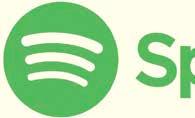
Global HQ: Stockholm, Sweden
Regional head: Amarjit Singh Batra, General Manager SAMEA at Spotify




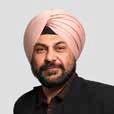

Regional HQ: Dubai, UAE
Number of users worldwide: More than 500 million users
DESCRIPTION: Spotify transformed music listening forever when it launched in 2008. Discover, manage and share over 100 million tracks, including more than 5 million podcast titles, for free, or upgrade to Spotify Premium to access exclusive features for music, including improved sound quality and an ondemand, offline, and ad-free music listening experience. Today, Spotify is the world’s most popular audio streaming subscription service including 205m subscribers across 180+ markets.
USER DEMOGRAPHICS: On our platform, we see our listeners reflect the youthful demographics of the MENA region. Gen Z and millennials represent over 70 per cent of our base, with Gen Z listeners being our fastestgrowing cohort and representing over half of our monthly streams.
Depending on the format, KPIs will differ from campaign to campaign. In general, Spotify is a powerful branding platform with high engagement and high brand affinity. This means brands seek reach, awareness, ad recall and consideration. Other metrics are cost per completed listen for audio, cost per completed view for video and CTR per cent.
The power of audio advertising and the level of engagement you can achieve with our listeners compared to other forms of media is incredible. Our recent sonic science study shows that 93 per cent of the brain’s engagement with the content is transferred directly into ad engagement. As a result, the
ads saw 19 per cent higher brand impact on Spotify compared to all other media, including TV and social.
At Spotify’s Stream On event, we’ve announced exciting new features that change how users and creators experience Spotify. From new app functionality to a holistic one-stop shop for podcasting to more opportunities for artists to engage with their fans - everything we do works towards enabling more creativity, discovery and personalization than ever before by providing the best resources, support and interactivity.
One of the biggest evolutions since Spotify’s inception is our new, dynamic interface on mobile built for deeper discovery and more meaningful connections between artists and fans. With this new experience, we’re giving fans an even more active role in the audio discovery process and giving creators more space to share their work. Powered by advanced recommendations, new visual canvases and a completely new and interactive design, the new interface makes discovering new audio easier and helps introduce users to their next favourite artist or podcast. We’ve also reimagined Spotify For Podcasters. The site combines the best of Spotify’s podcast creator tools into a one-stop shop to create, manage, grow and monetize podcast content. When all creators sign up or log in to Spotify for Podcasters, they’ll find a dashboard with interactive features like Q&A and Polls, advanced analytics and the ability to upload and publish episodes (for users hosting their show with Spotify for Podcasters). Additionally, Spotify for Podcasters offers free hosting.
Founded: 2012

Parent company: ByteDance
Regional head: Shant Oknayan, Head of Global Business Solutions - Asia-Pacific, Middle East, Africa & Central Asia.

Global HQ: Los Angeles
Regional HQ: Dubai
Number of users worldwide: Over 1 billion
Description: TikTok is the leading destination for short-form mobile video. Our mission is to inspire creativity and bring joy User demographics: The demographic mix is very similar to overall country demographics in this region. With the common factor being a love of creativity, entertainment and authenticity.
Our platform offers 100% share of voice, a sound-on experience that helps with emotional priming, and a full-funnel suite of optimisable ad solutions. Combined, these features make for marketing campaigns that deliver big on all types of KPIs across the funnel as shown in our large suite of meta analysis with the major research agencies. From brand KPIs: According to research conducted by Kantar, reach is the highest after TV and complements TV more than any other platform. It also offers 2x efficiency vs. other short-form digital platforms. To sales KPIs: According to research conducted by Nielsen, TikTok drives more than 1.5x return on advertising spend (ROAS) and sales efficiency vs. other media channels, with 83% of TikTok campaigns driving higher sales impact than digital benchmarks.
The power of shoppertaiment - content-driven commerce that seeks to entertain and educate first while integrating content and community to create highly immersive shopping experiences. A recent BCG Report found that as technology provides ever more choices and control, consumer needs are shifting from more functional needs, such as value and convenience, towards more emotional needs, such as treating oneself or knowing the story behind the brand. TikTok is the platform of choice for the convergence of entertainment and commerce—with the launch of TikTok Shop in various countries—and we’ve seen this in action with our community driven initiatives
SHANT OKNAYAN, HEAD OF GLOBAL BUSINESS SOLUTIONS - ASIAPACIFIC, MIDDLE EAST, AFRICA & CENTRAL ASIA - TIKTOK
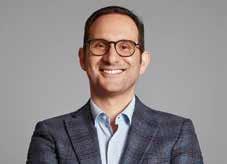

HOW HAVE USER HABITS CHANGED ON YOUR PLATFORM IN THE LAST 12 MONTHS?
We are seeing users evolve from consumers to prosumers who actively participate in creating and transforming a world that is relevant to them and to their needs. These prosumers reimagined entertainment on TikTok in 2022, sharing real stories that brought communities together and helped users discover new ways of thinking.
WHAT RECENT PIECE OF USERGENERATED CONTENT CAUGHT YOUR EYE?
With Ramadan around the corner, top of mind for me is Abir el saghir’s content.
like #TikTokMadeMeBuyIt. This represents a huge opportunity for marketers willing to embrace entertainment-first shopping that appeals to the emotional needs of consumers to sustain the purchasing journey.
We’re facilitating be er creativity with a suite of tools including TikTok Creative Exchange, which helps advertisers connect with creative experts to create brand videos tailored for TikTok, TikTok Creator Marketplace, which helps connect brands with creators for collaborations and our Creative Center, a tool that allows marketers to find the most popular audio and video content on TikTok. And with the emergence of AIGC, we can’t wait to see what creative AI tools will be rolled out!.
WHAT NEW FEATURES CAN WE LOOK FORWARD TO IN THE COMING YEAR?
I can’t get into the specifics, but it will be around Shoppertainment. We’re excited about the opportunity this presents for brands. With so many people turning to TikTok organically for product discovery, research and reviews, the opportunity is clear: our users don’t want TikTok to simply show up in their e-commerce journeys— they want TikTok to be the e-commerce journey.
She’s a lifestyle and food creator known for her mouthwatering international recipes. She expertly combines, entertainment, education and creativity by introducing us to dishes from across the region and the world.
WHO ARE THE TOP INFLUENCERS YOU WORK WITH?
You can visit our Creator Marketplace to discover the bold personalities, trendsetters, and pioneers helping to shape culture on TikTok and beyond.
HOW DO YOU MEASURE THE IMPACT OF INFLUENCERS?
Within the TikTok Creator Marketplace, we offer a suite of features to measure and optimize campaign performance, looking at key metrics like brand awareness, ad recall, and purchase intent.
WHICH BRANDS CONNECT BEST WITH YOUR USERS ON YOUR PLATFORM?
Brands across every category - and I really mean every category - that capture share of heart and mind by serving communities the kind of content they are passionate about.
Time and time again, we have seen this translate into products flying off shelves, facilitated by trends like #TikTokMadeMeBuyIt.
WHY DOESN’T SOME CONTENT/ INFLUENCERS WORK WELL ACROSS OTHER PLATFORMS?
On TikTok, the most beloved content is raw and real - a Nielsen study revealed that users find our content more authentic than other platforms.
Founded: 2005.
Parent company: Google (since 2006)
Regional Head: Tarek Amin, Director of YouTube in the Middle East and North Africa


Global HQ: San Bruno, California, United States
Regional HQ: UAE and Egypt
Number of users worldwide: YouTube has more than two billion monthly logged in users.

DESCRIPTION: YouTube’s mission is to give everyone a voice and show them the world. We believe that everyone deserves to have a voice, and that the world is a be er place when we listen, share and build community through our stories.
USER DEMOGRAPHIC/PROFILE:
All logged-in users
WHAT DO PEOPLE BEST KNOW YOU AS?
YouTube has what people want – an always-on, always-fresh stream of diverse creator content in addition to a wide selection of traditional and studio-produced content.
BIGGEST MISCONCEPTION ABOUT THE PLATFORM?
Misconception: Creators aren’t loyal to any platform. They say YouTube is a good place to start, but traditional media and streaming platforms are still the destination for most creatives. But that simply isn’t true.
Fact: In reality, creators invest in YouTube because YouTube invests in them. When they invest in YouTube, brands are automatically going to be in a place where the audience seeks out and loves what (and who) they’re watching. And that creates a halo effect for brands.
WHAT CAN YOU DO BEST FOR BRANDS?
Ads show up in front of multi-format content from short-form or long-form, high-production or more DIY.
WHAT ARE THE KPIS BRANDS LOOK FOR ON YOUR PLATFORM?

There are many KPIs depending on each brand’s objective including watch time, engagement, total impressions, conversions etc.
WHAT NEW FEATURES HAVE YOU LAUNCHED IN THE LAST YEAR?
We’re continuing to invest in mobile creation tools, for example the ability to remix any available video on YouTube. As we do this, we’re
seeing mobile-first creators investing more in the platform, creating the content which connects with Gen Z and the broader community. We also announced that we’re bringing revenue sharing to Shorts. Current and future YouTube Partner Program (YPP) creators are eligible for revenue sharing on Shorts. Our unique model will allow us to reward all YPP creators who make up the Shorts experience, not just to those running next to ads. Marketers can lean in on Performance Max to multiply their conversions across Google’s full range of advertising channels and inventory. They can also use YouTube’s Cost-Per-Hour Masthead which enables brands to own the most prominent placement on YouTube during the hour(s) leading up to, during or after priority moments.
DO YOU HAVE ANYTHING SPECIAL PLANNED FOR RAMADAN?
There is a long list of creators in MENA and around the world creating special content with Ramadan. And with video watchtime increasing every Ramadan, we published a guide for marketers to help video creatives stand out.
HOW HAVE USER HABITS CHANGED ON YOUR PLATFORM IN THE PAST TWO YEARS?
More than ever before, YouTube helps creators, artists, partners and viewers connect at a truly global scale. In 2022, more people created content on YouTube than ever before. We’ve also seen that YouTube is a driver of technological and economic innovation by supporting the next generation of mobile creators with Shorts. YouTube Shorts are being watched by over 1.5 billion logged-in users every month and averaging over 50 billion daily views.
WHAT IS ONE THING ABOUT YOUR PLATFORM THAT YOU WISH MORE MARKETERS KNEW?
YouTube has long been the top ad-supported streaming platform and now we are the leading most-watched streaming platform overall. That’s because of our unique ability to deliver on what people want/care about via innovative, diverse creators plus traditional content. Creators are doing amazing things on Shorts, bringing their innovation to the medium and giving audiences more ways to watch. Shorts are being watched by 1.5 billion monthly logged-in users. We expect that number to grow even more, especially that we have launched Shorts monetization.
WHAT NEW INNOVATION ON YOUR PLATFORM ARE YOU MOST EXCITED TO SEE MARKETERS USE?
AI tools. They power many things on YouTube—from accessibility to content recommendations to video editing. For advertisers, it can help creativity go bigger. We’re investing in new tools that make it easier for advertisers and agencies to take their existing creative and adapt it for all the different ways consumers interact on YouTube — from the Home feed to Shorts. And we’re building out more AI-powered tools that do the repackaging and optimizing. This gives brands the critical flexibility to shape their creative for the moment, without a lot of extra cost or effort.






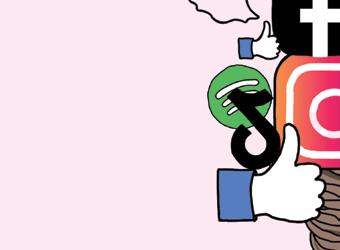

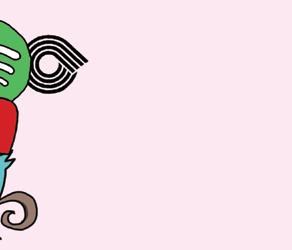








Welcome to our very first influencer marketing guide. In it you will find listings for the key influencer marketing agencies and insightful features on this dynamic sector written by social media and brand experts. Influencers are becoming more, well, influential, and brands are clamouring to work with them. More people count themselves as influencers or content creators, so inevitably we are seeing more agencies pop up to help them.
Agencies differ in the services they offer. For the most basic type, they act as the middleman, connecting influencers with relevant brands. More comprehensive agencies have platforms where influencers and brands interact, and projects are managed. Some agencies manage the talent themselves, acting as agents on behalf of the influencer. The waters are a little murky.
Influencer marketing is a relatively new niche within marketing strategies but is evolving rapidly. Campaign already produces a wide range of directories, guides and maps which are essential reading for the creative industry in the region. We hope that our influencer marketing guide 2023 will be a valuable addition.

The goal of influencer marketing is to leverage the trust and authority that influencers have built up with their audiences, in order to reach new potential customers and build brand awareness. It’s not an exact science but data is increasingly being used to make campaigns more effective.
Nowadays, brands talk a lot about authenticity and relevance, and social media influencers offer these in abundance. Influencers have built up a level of trust and credibility with their followers through their content and engagement. When they recommend a product or service, their followers are more likely to trust their opinion than they would a traditional ad. That’s why brands want to work with them, and why we are seeing more agencies appear to help facilitate these relationships.
As more influencer marketing campaigns, brands are quickly learning which talent to work with and on what platforms. From what we observe, campaigns are getting smarter but mistakes are still being made along the way. We hope this guide will help you get a little smarter when it comes to influencer marketing, while avoiding some of those common mistakes.
JUSTIN HARPER Editor
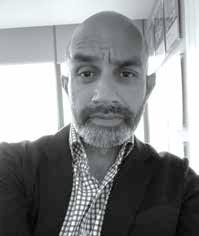
justin.harper@motivate.ae
Main Cover and Inside cover designed by Thokchom Remy
Motivate Media Group
Head Office: 34th Floor, Media One Tower, Dubai Media City, Dubai, UAE. Tel: +971 4 427 3000, Fax: +971 4 428 2266, Email: motivate@motivate.ae
Dubai Media City: SD 2-94, 2nd Floor, Building 2, Dubai, UAE. Tel: +971 4 390 3550, Fax: +971 4 390 4845
Abu Dhabi: Motivate Advertising, Marketing & Publishing, PO Box 43072, Abu Dhabi, UAE. Tel: +971 2 677 2005, Fax: +97126573401, Email: motivate-adh@motivate.ae
Saudi Arabia: Office 452, Regus Offices, 4th Floor, Al Hamad Tower, King Fahad Road, Al Olaya, PO.Box 12381, Riyadh 6764, Kingdom of Saudi Arabia. Tel: +966 11 834
3595 / +966 11 834 3596 Fax: +966 11 8343501
London: Motivate Publishing Ltd, Acre House, 11/15 William Road, London NW1 3ER. motivateuk@motivate.ae www.motivatemedia.com
EDITORIAL Editor-in-Chief Obaid Humaid Al Tayer Managing Partner and Group Editor Ian Fairservice Editor Justin Harper
Senior Reporter Jalaja Ramanunni Junior Web Reporter Ishwari Khatu
DESIGN Art Director Clarkwin Cruz Designer Thokchom Remy
ADVERTISING ENQUIRIES Tel: +971 4 427 3000 Chief Commercial Officer Anthony Milne Publisher Nadeem Ahmed Quraishi (+971 50 6453365)
PRODUCTION General Manager S. Sunil Kumar Production Manager Binu Purandaran
HAYMARKET MEDIA GROUP Chairman Kevin Costello Managing Director Jane Macken campaignme.com
The publishers regret that they cannot accept liability for error or omissions contained in this publication, however caused. The opinions and views contained in this publication are not necessarily those of the publishers. Readers are advised to seek specialist advice before acting on information contained in this publication which is provided for general use and may not be appropriate for the readers’ particular circumstances. The ownership of trademarks is acknowledged. No part of this publication or any part of the contents thereof may be reproduced, stored in a retrieval system or transmitted in any form without the permission of the publishers in writing. An exemption is hereby granted for extracts used for the purpose of fair review. CampaignMiddleEastincludes material reproduced from the UK Edition (and other editions) of Campaign , which is the copyright of Haymarket. Campaignis a trademark of Haymarket and is used under licence. The views and opinions expressed within this magazine are not necessarily those of Haymarket Magazines Limited or those of its contributors.
Influencer marketing has become a popular trend in recent years, especially in the Middle East. Brands are leveraging the power of social media influencers to promote their products and services to a large audience. This trend has also led to the rise of influencer marketing agencies, which connect brands with the right influencers to ensure maximum impact. The future of influencer marketing in the Middle East is expected to continue to grow, with more brands recognising the importance of using social media influencers to reach their target audiences. As the market becomes more crowded, there is likely to be an increased emphasis on data-driven campaigns and the use of AI and machine learning to identify and track influencers’ impact. With the growing popularity in the Middle East, there has been a significant increase in the demand for influencers. Many brands are now looking to collaborate with influencers to reach their target audience and increase brand awareness.
The trend has been massive in some industries such as beauty, fashion, entertainment, travel and tech. Even local startups and boutique businesses have been desperately chasing micro-influencers to increase their brand awareness. Undoubtedly, influencer marketing has been going crazy in the region and everyone’s competing to acquire social media influencers. The GCC market leads the Middle East with the highest demand from brands and the top paid influencers. Among social media


beautiful fact about influencer marketing is that the audience is already there, brands just need to establish a trustworthy and a strong partnership where both parties are offering amazing value to each audience. In terms of hiring trends, there is expected to be an increase in demand
As a result, there has been a surge in the number of influencers in the region. Many people are now considering becoming an influencer as a career option. This has led to the emergence of several influencer training programmes and courses, which help aspiring influencers develop the necessary skills to succeed in this industry.
However, with the rise of influencer marketing comes the need for proper regulation. The UAE National Media Council (NMC) has introduced new regulations for influencer marketing to ensure that influencers disclose sponsored content and adhere to ethical standards. These regulations have been put in place to protect consumers from misleading advertising and ensure transparency in influencer marketing.
Despite the regulatory challenges, the influencer marketing industry in the Middle East is thriving. Brands are realising the potential of influencer marketing to reach their target audience, and influencers are seeing the benefits of partnering with brands to monetize their social media presence.
The rise of influencer marketing has also led to the creation of new job opportunities in the region.
Influencer management is one of the key areas in the influencer marketing industry. Influencer managers are responsible for identifying and selecting the right influencers for a brand’s campaign. They also negotiate contracts and manage the relationship between the brand and the influencer.

Content creation is another critical area in influencer marketing. Brands need engaging and high-quality content to promote their products and services effectively. Content creators are responsible
platforms, Instagram stands as the top place for the influencer marketing game while Facebook is rapidly declining. YouTube is becoming the golden gate for micro-influencers who are targeting Gen Z.




Half of those polled currently work with social media influencers in the region. 94 per cent of in-house marketers in the UAE believe social media influencer marketing plays a major role in the success of their brands. While 55 per cent said their biggest challenge when picking influencers was finding relevant ones that relate to their brands.
In 2021, roughly 58 per cent of marketers said influencer marketing was the most effective marketing trend, ahead of SEO, experiential marketing and short-form video content. In 2022, 86 per cent of marketers planned to continue investing the same amount or increase their investment in influencer marketing. A recent study found that influencer-led campaigns result in an average ROI of $6.50 for every dollar spent – that’s a 650 per cent return. And it’s not just small businesses that are seeing results – even big brands are using influencer marketing to reach new audiences and drive sales. There’s no doubt that influencer marketing is a powerful tool. The
Influencer marketing agencies are on the lookout for talented individuals who can help brands connect with the right influencers and create impactful campaigns.
As the demand for influencers and influencer marketing grows, many agencies are expanding their teams and hiring new talent. This has created several job opportunities in the areas of influencer management, content creation, social media marketing, and more.
for creating content that resonates with the brand’s target audience and aligns with their messaging.
Social media marketing is also an essential aspect of influencer marketing. Social media marketers are responsible for managing a brand’s social media presence and creating campaigns that drive engagement and conversions.
The growing demand for influencer marketing has also led to the rise of influencer marketing platforms. These platforms provide brands with a centralized location to find and collaborate with influencers. They also offer features such as campaign tracking and analytics to measure the success of influencer marketing campaigns.
In conclusion, the influencer marketing trend is on the rise in the Middle East, and the industry is creating several job opportunities. Brands are recognizing the potential of influencer marketing to reach their target audience. As the industry continues to grow, we can expect to see more innovation and creativity in the influencer marketing space.
By Sanjana Bhosale, Head of Advertising and Marketing Recruitment at MBR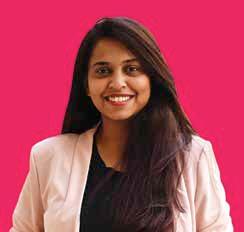


Influencer marketing has been going crazy in the region, writes MBR’s Sanjana Bhosale
There’s no denying that influencer marketing has rapidly grown in the past decade. I cannot help but admire how the ecosystem has blossomed since my first influencer campaign in 2015. The industry is maturing fast, yet I still come across outdated, ineffective or untested ‘advice’ which creates a hurdle for marketers looking to translate creator-led campaigns into sales and brand-building.
While influencer marketing sits rightfully at the intersection of creative, media and PR, marketers need to revise their perception and consider social creators as media vehicles capable of delivering full-funnel effectiveness from reach to customer engagement and, potentially, sales. Here are five golden rules to maximise the media benefits of influencer marketing.
Before turning influencer campaigns into line items on media plans, media agencies need to be able to quantify the expected outcome. Let me get one thing off my chest: the number of followers is not a suitable performance indicator, yet it’s a way used
more widely than it should be. Follower counts are plagued with fake accounts (although decreasing), duplicates, business users, or simply uninterested human followers. Instead, it’s best to average out actual historical performance using metrics like impressions, reach or views and place those right on your media plan.

Planning is one side of the influencer marketing equation: we’d still need to realise the numbers on the plan, and, ultimately, the odds of hitting our estimates with absolute precision are minimal. In theory, creators who fail to deliver on their historical benchmark can push additional derivative content to meet their reach or video views targets. But how many creators are willing to offer media guarantees? This is one of the ways to restore some of the lost trust in the influencerbrand relationship. And what about guarantees on meaningful business outcomes like sales or leads? A few brands have started enrolling influencers in affiliate programs where they ‘pay per’ whatever outcome they consider meaningful.
followers and up to 60 per cent reach per post. Yes, it’s possible for a creator who adds value for their audience to achieve 60 per cent organic reach; that was a real-life example. Working solely with this creator will cap your reach at 228,000 on a sunny day. It is also unlikely for a single micro-influencer to cover the brand’s entire target audience. Considering an optimistic 80 per cent overlap in this example, the creator at hand will reach 180,000 tops, leaving some of that audience untapped. You may need to look for dozens of influencers to achieve your reach. Brands should consider moving from one-off influencer campaigns to long-term brand ambassador programmes because consistency creates believability, and long-term programmes help brands measure, amend, and develop deeper relationships with the most effective creators.



Holistic social campaigns allow media planners to balance branded content’s impact and relevance with paid media’s control and precision. Your social strategy should feature more branded content with paid media as a tag team. Not only do paid social ads help creators in reaching every last member of their social following, they also allow brands to retarget consumers right after watching or engaging with creator content. Imagine the impact of seeing a brand-led social ad with a ‘buy now’ call-to-action within hours of discovering the product’s benefits from your favourite content creator. Sharing audiences between brands and creators is immune to the deprecation of the third-party cookie, as the audiences are collected and shared within the same walled garden.
On most platforms, each piece of branded content audience that fits that creator’s follower breakdown. defining your target locations, demographics and interests,
On most platforms, each piece of branded content that a social creator publishes ends up reaching an audience that fits that creator’s follower breakdown. As advertisers or media planners, start by defining your target locations, demographics and interests, and then find influencers with a matching follower base. There’s also a layer of contextual targeting within branded content, and here’s how to use it. Social influencers usually specialise in certain topics or verticals like travel, for example. A shampoo brand might find it suitable to place its product within a ‘travel essentials’ video. In that example, we have a CPG brand advertising in a travel context. Instead of delivering pure reach, an ad within the perfect context speaks to warm and engaged audiences and has more potential to deliver impact.
The shortage of native metrics that measure the business impact of influencer marketing has turned into a barrier for some. Others have been riding the wave, taking every bit of advice they can find on influencer blogs at face value. Between those extremes, we need ‘sceptical believers’ willing to test and learn and pave the way to more sophisticated influencer marketing. There’s nothing wrong with taking a new approach without being able to predict the outcome from the beginning. In fact, that’s the beauty of innovation: believing in the theory and waiting for the results to confirm or deny it.
Starting with brand measurement, metrics like reach and video views only provide insight into the media side of the equation but do not address the impact on brand awareness or favourability. For uninterrupted measurement, social listening can help monitor metrics like brand lift and sentiment around a given campaign’s timeframe.
example, we have a CPG brand advertising in a travel context. Instead of delivering pure reach, an the same volume or quality of content, and not all content creators exert the same influence over their
Though I’ve used, so far, the words ‘influencer’ and ‘creator’ interchangeably, not all influencers create the same volume or quality of content, and not all content creators exert the same influence over their audience. When classifying creators into macro, micro, nano, and what have you, it’s troubling that the industry still uses the imperfect follower counts as a filter. We can always substitute this metric with reach or views and apply the same logic.
‘Upper-class’ influencers and celebrities can reach broadly while making a statement about the brand’s size that says, ‘We’re big, and we can afford it.’



Getting similar coverage through the second tier requires collaborating with a network of carefully picked creators. Take an influencer with 380,000
Brands investing in demand generation and performance marketing campaigns can track purchases using tagged links or coupon codes and attribute sales to the branded content medium overall or to specific campaigns and influencers, which they can aggregate on their measurement ‘source of truth’. Influencer marketing platforms that offer e-commerce tracking can pull in data from web and app analytics or integrate with sales platforms like Shopify’s analytics.
To elevate influencer marketing, media agencies should start seeing influencers as media vehicles and play a more prominent role in planning effective creator-led campaigns, measuring their impact, and educating advertisers on their media benefits. It is in everybody’s interest that we find ways to eliminate barriers to adoption. These are more than steps forward, they are an invitation to discuss and collaborate so that we separate the facts from fiction.
By Anthony Nghayoui Anthony Nghayoui, senior manager-social at OMG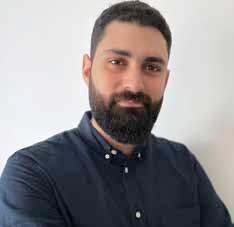
We need to view social creators as media vehicles, argues OMG’s Anthony Nghayoui


ZIAD KHAMMAR:
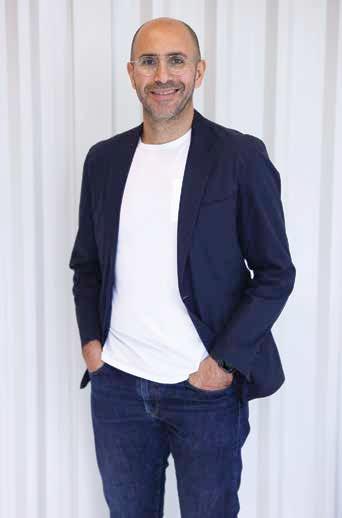
The gaming industry is experiencing massive growth, both in terms of the number of players and in terms of revenue generated from in-game revenues, sponsorships and brand collaborations. What kind of growth do you expect for brands and advertisers in this sector in the region?
In a world where consumers’ entertainment options have multiplied, brands are vying for their attention through video streaming, social media, music, podcasts, and the fastestgrowing market, gaming. Gaming is a mega activity and community that is best activated by the source itself, the gamer himself. Brands are aware that influencer marketing via gamers’ social media and streaming channels offer more authentic reach and engagement than advertising alone.
With DMS already representing numerous platforms and solutions across the region, what made you choose DIVISION to join your portfolio? What was it about their offering that particularly excited you?
Arab gaming is an exciting market that requires a deep understanding of the culture, trends and preferences of gamers. We chose DIVISION because of their understanding of this market and proven track record of
influencer marketing management and content creation make them an ideal partner for brands seeking to engage with the gaming community in the MENA region. Combined with our existing network and reach, their capabilities in this field can deliver real results for brands looking to leverage the gaming community in their marketing campaigns. So, it was a no-brainer for us to partner with DIVISION to offer our clients an innovative and effective way to reach gamers. What is the trend on spend that you are seeing moving to solutions such as this?
Recent years have seen explosive growth in the gaming industry, and this trend does not appear to be slowing down anytime soon. There are several reasons for this, including the growing accessibility and availability of current-gen and web 3.0 gaming experiences on a wide range of electronic devices. Moreover, the development of the entertainment industry has resulted in an increase in life streamers, content creators, and how-to guides available on popular platforms such as Twitch, Facebook Gaming, TikTok, and YouTube Gaming.
As a result, media spending within the gaming field has been on the rise and is expected to keep increasing, whether it be through event sponsorships, integrations with content creators, or custom activations with both influencers and consumers.
NABIL MOUTRAN:
Which sectors do you think would benefit from DIVISION’s solution, and what response have you gotten from your clients so far?

Naturally, there are industries that will have a centre of gravity on gaming and our platforms like FMCG, tech, telco, and fast food chains. However, we have also seen interest from other promising sectors such as cosmetics and financial services. The platform now serves pretty much any sector that wants to engage with audiences who consume gaming content, reaffirming that there are no preset demographics for gaming.
Your solution focuses on content being deployed while gamers are streaming live on platforms such as Twitch. Could you explain how brands can benefit from this sort of solution?
Attracting your audience’s attention is the name of the game today. By introducing brand integrations into an actual stream, the brand’s message becomes part of the narrative rather than disruptive. This enables brands to enjoy a longer attention span from the audience in an authentic and relevant manner. Our platform simply enables brands to do this at scale.
DAN MOORE:
Tell us a little bit more about the platform and what plans you have in place for growth in the region. Are there any other new features you will be bringing to the platform?
We launched the platform knowing that the introduction of new product features would be deployed throughout the year, and our main focus is on delivering a user-friendly solution that takes an advertiser from activity concept to completion in an easy step-by-step process. We’re also planning to optimize and introduce new product features for both the advertiser and the gamer to benefit from during this year. As our growth plans are aligned with the development roadmap, we are aiming to grow our gamer database into the thousands by the end of the year. Today, we can reach approximately 10 million people across the MENA region, and we’re expecting to grow this number considerably as we introduce more features and gamers onto the platform.
By Nabil Moutran, Founder and CEO at Division Dan Moore, Co-Founder and Managing Director at Division Ziad Khammar, COO at DMS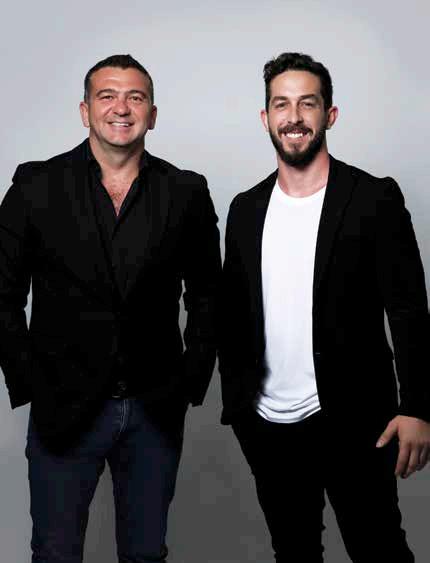
We, humans, are social animals, programmed to connect deeply with those who look like us or behave like us, or rather with whom we orient ourselves. Be it Nicole Kidman for Etihad, Chris Hemsworth for Bayut, or Salman Khan for Splash, celebrity endorsements have always been used because of the recognition a superstar could bring to a brand. Celebrity endorsements can surely elevate the public awareness of a brand significantly, and their reach is magnified considerably through servicing a wider-spread audience. But as consumer trends shift and the online world surges, a newer breed of influencers is making an impression on brand awareness and purchase intent. The engagement and sway of these non-celebrity influencers is spreading like wildfire.
Evolving from classic celebrity endorsements to the dominion of noncelebrity influencers, there are tools and metrics to measure the impact of influencer marketing campaigns. The distinguishing factor between influencers and traditional celebrities is that the former shares a strong rapport with their fan communities. They harness the accessibility of social media to establish personal connections with and gain the trust of their followers. It is hardly a secret that influencer marketing can attract new customers and boost sales at a reasonable price point compared to adverts on other channels. Partnering with influencers is the freshest move in the marketing toolbox of most direct-to-customer brands with an appetite for some mouth-watering sales.
In pursuit of quant-based evidence, one of the most popular metrics for marketers to invoke is marketing ROI (MROI). When it comes to paid promotion, most new-age marketers will agree that influencer marketing can have one of the highest ROIs out there. Marketers can employ a bunch of tracking tools to better understand and evaluate every little thing happening with your influencer marketing campaigns. Impressions - the number of times a post was visible in timelines or feeds on social media platforms - are the most common metric and an effective way to gauge your brand’s visibility to your target
audience and, ultimately, calculate your brand awareness. Next, there are unique affiliate links for an influencer, allowing you to track online sales made through their social channels. On the same note, custom discount/promo codes for an influencer will help you track the transactions the influencer pulled in and also the impact of the campaign beyond immediate sales.
Having said that, sales cannot and should not be the only KPI to evaluate an influencer marketing campaign. Giving discounts or promotional codes through influencers will not always result in the consumer taking the bait, especially in the case of low-ticket-value items in the FMCG category. With the right influencer, your brand can gain more likes, impressions, engagement, and clicks. These, in turn, help increase their reach. You will not only reel in an engaged audience but also double-tap your brand’s reach. People trust recommendations from real people more than traditional commercials - that’s what makes influencer marketing so effective.

Ask Filip Tysander, and he will tell you how his brand of watches - Daniel Wellingtoncame to be a massive success, thanks to the power of influencer marketing. Crocs is another great example of a brand that came back from the brink of extinction - from being functional, boat, garden, and kitchen clogs to a must-have fashion pair. This is all because of the influencer marketing strategy deployed by the marketing team at the brand. From collaborations to engaging the likes of Drew Barrymore and Priyanka Chopra, the brand got back its mojo.
Influencers operate in niche communities, and their recommendations are often held in high regard by their followers. Influencers, with their followers at a finger’s distance away, have the power of reach to amplify brand awareness. When an influencer recommends or endorses your brand, their followers are likely to take notice and follow the lead. People will follow the suggestions of trusted influencers.
This fanatical devotion is rooted in the influencer constantly being in a running dialogue with their following, from answering questions to delving deeper into detail on points of interest with community members. This group is primed to receive messages from the influencer long before the brand slides into their DMs. Therefore, the influencer’s sponsored content becomes part of an ongoing conversation to which the community is deeply committed.


















Influencer marketing is the most effective way to reach the most cherished millennial and Gen Z audience. Approximately 70 per cent of adolescent subscribers on YouTube noted that they trust influencer opinions over traditional celebrities. With a credible influencer considered a hot shot in their niche, and whose voice their broad audience trusts, the campaign will, in all probability, babysit itself.
By Arshad Zaheer, Senior Partner at YAAP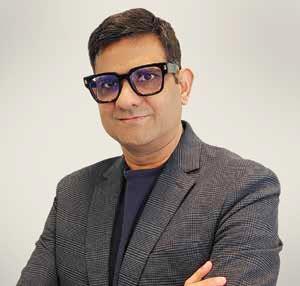
How do you measure marketing return on investment (ROI) when it comes to influencers, asks YAAP’s Arshad Zaheer
When it comes to working with social media influencers and content creators, it’s not just about who you work with, and their associated audience and reach, it’s increasingly about how you work with them and the type of content you create collaboratively if you are to deliver real results for your brand. At Stellantis, the home of Jeep, Ram, Dodge, Peugeot, Alfa Romeo, Fiat and Citroën, we’re continually evolving not just our content creator partnerships, but also our working methods and methodologies. Because here in the Middle East, we’re in a region that has some of the highest levels of engagement and impact – dare I say influence? – anywhere on the planet.












Take our partnership with legendary UAE automotive content creator Ali Hamoudi (@uaesupersport). Of course, we do automotive media and influencer test drives across our brand portfolio for any new product launch as a hygiene factor. But we’ve extended our partnership with Ali for the Jeep brand, with content – including the Grand Cherokee unboxing and the launch of the all-new Grand Wagoneer, the most luxurious offering ever in the Jeep line up – that has created the highest levels of reach and engagement for any Jeep social campaign in history. Yep, you read right, that’s any campaign, anywhere in the world, ever. If that doesn’t show you the impact of the region’s content creators – and Ali of course, I’m not sure what else can.
With a portfolio as diverse and broad as Stellantis’, it’s imperative to create points of difference not just between each brand, but also between different vehicles in the line-up of each brand. Someone looking to buy an electric light commercial vehicle for example is, in all likelihood, not the same customer considering a family SUV, and their social media feeds - who they follow and are influenced by – will also differ. That’s why, while we continue to strengthen our relationships with automotive specialists, we are increasingly looking beyond this sector and into lifestyle and niche interest influencers who align with brand values and associations across our portfolio and product line-ups, and with the values and passions of the audiences we want to reach.
This was what drove the thinking behind Peugeot’s recent ‘Power of Allure’ campaign, developed with independent creative advertising agency, Science and Sunshine. We partnered with four regional tastemakers - Saud AlTurki, Chndy, Ajwa Al Joudi and Raha Moharrak – and paired each of them with an alluring Peugeot vehicle which reflects their individual aesthetics and lifestyles, essentially aligning product qualities and attributes with the qualities and attributes of our ambassadors.
Rather than asking them to leverage their own channels, we instead asked
them to star in our own brand film which has now amassed more than 2 million views as part of an active, cross-platform campaign which positions Peugeot as a brand that listens to people in the region and adapts to fit their needs. Creating strong associations with brand ambassadors with cultural resonance, style, and allure (who also happen to be influential on social media) was essential to the success of this campaign. This campaign also indicates how closely our marketing and communications teams work together – with no one discipline owning influencer partnerships, but instead collaboratively integrating and amplifying social media partnerships to benefit the business and brands.
Another avenue that we’re increasingly exploring is the integration of our own brand storytellers into our creative social content, either as central characters in our portfolio narrative, or as hosts and interviewers of content creators and influential individuals – whether that’s on social media or in other aspects of life and business. Our ‘Drive By’ video series for Jeep Grand Cherokee is a perfect example of this in action, showcasing conversations around specific themes, like design and style, between our Stellantis team and experts in their respective fields.
We’re also lucky – or lucky by design – in that our brands inspire passionate communities. Take Jeep and Dodge for instance, which each have their own active clubs of enthusiasts in markets across the region developing their own user generated content (UGC). Their commitment to our cars is contagious, and it’s clear that any endorsement is driven by passion rather than profit. These communities are our advocates, our fans, our followers, and increasingly our content creators and content stars. From interviewing club presidents for our Instagram page and LinkedIn feeds, to reposting their own, supercharged social content, this is authentic, locally created, money-can’t-buy advocacy that resonates with everyone who engages with it.
And this is where we see our future for partnerships with content creators. Not a one-off all-or-nothing partnership with a macro-influencer, but instead a diverse and considered mix of macro and micro, sector specialists and generalists, and the ever-growing impact of our own storytellers, UGC and independent communities who believe in, and have bought into, our brands.
Reham El Didi is Head of Corporate Communications at Stellantis Middle East

As someone, a lot more famous than me once said, “to keep your balance, you must keep moving”. As we embrace rapid technological advances and leverage AI in the creative process to drive more agile, data-based responses to emerging digital marketing challenges that show no signs of slowing down, Einstein’s words are more relevant than ever. Brands, like people, must keep moving to connect with customers on a deeper level, inspire and be innovative.
For us, innovation is the key to “a better way forward”. It is the company’s sole mission. As one of the bigger tyre manufacturers in the world, we believe that mobility is essential for human development, and are innovating passionately to make it safer, more efficient, and more environmentally friendly with
As motion is something we often take for granted, the world would not function without it – and this is the essence of the campaign. We wanted to reinforce this message by demonstrating how Michelin products make our daily routines easier as we navigate through life’s journeys.
According to this year’s Influencer Marketing Benchmark Report, the social influencer marketing industry is set to grow to approximately $21.1bn by the end of 2023, which is a 29 per cent increase from last year. And for the first time, TikTok has jumped ahead of Instagram as the most popular influencer marketing channel, with 56 per cent of brands preferring to use TikTok to reach their consumer base.

For Michelin, it was essential to have a diverse range of influencers who aligned with our company values and could effectively deliver the brand’s message. We worked closely with House of Comms who provided us with strategic influencer data, highlighting a mix of both regional macro and micro-influencers who shared common interests with our customers.
Based on the research House of Comms carried out, we identified that the target persona for the campaign was younger, tech-savvy consumers who valued experiences and were interested in sustainability. We created a strategy for each influencer to create short videos on TikTok and Instagram showing how motion contributes positively to their lifestyle.
the production of tyres for electric vehicles (EVs), as well as using sustainable recycled materials in all its products.


Innovation isn’t a new concept for Michelin tyres, it’s been part of its DNA since the beginning. The brand has been an advocate for a better life in motion long before it became a campaign slogan. As a company, Michelin understands the challenges its customers face in a fast-moving society and with that in mind, the brand launched a new influencer campaign in the MENA region, ‘A Better Life in Motion’ in collaboration with PR and marketing agency, House of Comms. The campaign goal was to demonstrate how Michelin tyres help its customers lead a better life while on the move. Whether that’s on the school run, work commute or driving to the beach for a relaxing yoga session, we are constantly in motion.
The brief was simple: How does motion contribute to your daily life?












One of the most effective aspects of the campaign was the use of user-generated content. Rather than issue strict content scripts, we give the influencers the freedom to create their own videos so they could showcase in the most authentic way how motion contributes to their lifestyle and how Michelin tyres play a role in that. The result has been a diverse range of videos that are engaging and relatable to our consumers.
We worked with a mix of macro and micro-influencers including; Leen AbouShaar, a digital influencer and TV personality with over 3 million followers across her social platforms; local car enthusiast, YouTube and TikTok creator Ali Al Hamoudi; Amir De Leon, art director and videographer known for his viral TikTok videos; Mthayel Al Ali, Emirati entrepreneur and influencer; Fahed Abu Salah, an automotive journalist and film director; and Amna Al Haddad, the first Emirati weightlifter who has a wax figure at Madame Tussauds Dubai. The decision to work with them was deliberate to ensure we targeted influencers with a larger audience with wider reaches and micro-influencers with smaller followings but higher engagement rates due to their niche, specialised audiences.
To generate further engagement, Michelin designed a competition for the whole month of March to give everyone a chance to participate in the campaign by creating their own video and perspective of “A Better Life in Motion” for a chance to win prizes, including a lifetime supply of Michelin tyres. A first in the region, this has never been executed by an international tyre brand. By letting our potential customers become influencers themselves with the ‘A Better Life in Motion’ campaign, Michelin has expanded its reach and engagement beyond the region. And when the campaign is over, we will have no doubt exceeded all our metrics.
By Ketsarin Ratchaworapong, Customer Experience Manager – MENA at Michelin Aim FZCO




Michelin’s Ketsarin Ratchaworapong looks at how the tyre brand’s latest influencer marketing campaign was born.
First, a true story. I witnessed a historic act on a video shoot a few months ago. Firstly, the director presented a shooting board in a vertical format, and then a crew member physically turned all our video monitors to a vertical orientation. Now, I’m not sure if all other agencies are already doing this or if we’re among the first ones, but it is the right thing to do when shooting films for social and digital.
These little changes will sound silly and not even remotely historic to anyone outside the advertising industry. But in our world, it signals change and a commitment to a craft for the medium. I must credit our fantastic clients and production partners for supporting this.
There are still a lot of arguments and resistance to a vertical video in our industry. Absurd. We’re in the business of creativity and should be welcoming a new way of doing things, especially when it makes sense for the audience we’re talking to. But somehow, even though the average person spends almost five hours a day on a vertical mobile phone, most of the ad industry is arguing about creating content for a vertical medium. This denial hurts the craft and effectiveness of our work.
Here are some suggestions on how to embrace the change if you haven’t already.


So many different mediums with different user behaviours create problems for marketers and agencies. Where do you start, and where do you find your audience when they’re everywhere? And when you find them, how do you ensure they see your message? With a reduction in marketing budgets and extreme efficiency goals, reaching the audience puts much pressure on everyone. In discussions with our clients, we tested content with different types of craft on various channels.
Of course, content that was tailor-made for the channel had, on average, three times better engagement than a simple content adaptation. But not only that, we have seen a crafty stop motion video made in-house overperform the most cinematic, high production values, and beautifully polished ads. It doesn’t mean we should stop making beautifully shot cinematic ads. People will still go to the cinema and watch ads on a big screen. But it means we should commit to the medium and craft our content for it. The audience will appreciate it.
















Almost every film director working in advertising dreams of making films for the cinema. Rightly so. They went to a film school for this and spent many years mastering cinema storytelling and craft for horizontal videos. They rarely dream about making a crafty 30-second film for TikTok. But can you even craft a TikTok video? Absolutely, but vertical video and social media content require a very different type of craft. Start with a simple act of turning your camera vertical and be picky about music and editing. An idea is a must and doesn’t need a discussion. When a client asked us to launch their TikTok channel, we hired a TikTok creator and learned from each other in the first few months. And then, we started experimenting and posting tailor-made content for the channel. It quickly paid off, and our client’s TikTok account became one of the most engaging in the region. Find a talent who understands the medium and knows how to craft for it.

I don’t want to get involved in predicting the future, but I guarantee you that more new mediums are coming soon. I’m unsure if it is VR, AR, metaverse, the crypto market, or AI, but one will stick. When that happens, brands will need content crafted for the medium. Agencies that adapt to this quickly will be set for the win. It will require a quick change in operations and upgrading talent in the agency. Clients must understand and support this. Humans are prone to change, but as an industry that wants to attract creative people, we must be more agile and ready to change quickly.
 By Andrej Arsenijevic, ECD at Commonwealth McCann
By Andrej Arsenijevic, ECD at Commonwealth McCann







Founded: 2016
Parent company: AnyMind Group
Regional head: Maha Mahdy

anymindgroup.com
+971 45542901
AnyTagME@anymindgroup.com
As part of AnyMind Group’s suite of products, AnyTag is a comprehensive influencer marketing platform, providing an integrated platform for influencer marketing and social media analysis. The platform enables brands to discover, activate, manage, track and attribute influencer marketing campaigns in real-time, whilst providing insights for brands’ social media opportunities. Awards won: Game-changing Advertising Technology at The Drum Awards for Digital Advertising APAC 2021
AnyTag MENA
HOW DO YOU SEE THE SOCIAL MEDIA INFLUENCER LANDSCAPE EVOLVING IN THE SHORT-TERM?
The landscape of influencer marketing in the region is ever changing. Some of the things we will see come into play in the short term are a higher focus on long-term partnerships as brands look to build more advocacy with influencers; stricter regulation on specific categories promoting through influencers, in addition to influencer licensing laws impacting how brands can activate influencers. There will be a focus on a more multi-platform approach, ensuring audiences are targeted through different channels and through content formats that resonate best with them.
THE BUZZ WORD IS AUTHENTICITY. HOW DO YOU MAKE SURE THIS HAPPENS?
We always work with influencers on an organic co-creation approach, where we provide content guidance on ideation in line with our client’s objectives and the campaign messaging and allow them to come up with their own content flow that translates this concept in a way that will resonate with their followers. To be authentic, it’s crucial to ensure influencers have creative freedom and are genuine in their communication.
KEY CLIENTS: Visa, Damac, talabat, Midea Group, Nestle, Yas Island, Marina Home Interiors, Bissell, Eyewa
DO YOU MANAGE TALENT?
Not exclusively, but we provide tools for talent through AnyCreator, which has features including social media analytics, influencer marketing campaign listing, link in bio creation, and invite-only tools including email marketing, chat, survey blasting and CRM.
DO YOU FOCUS ON SPECIFIC SECTORS?
We work across B2C industries - sector agnostic in B2C
WHAT’S YOUR BEST PIECE OF ADVICE FOR BRANDS LOOKING FOR SOCIAL MEDIA INFLUENCERS?
Look beyond the engagement metrics when selecting influencers for a campaign, to ensure brand synergy and a healthy and authentic collaboration between brand and influencer.
CAN YOU NAME A RECENT CAMPAIGN INVOLVING SOCIAL MEDIA INFLUENCERS YOU ARE PROUD OF?
Through our ongoing work with talabat UAE, influencers have created many viral pieces of content, due to the creative freedom given to them to communicate key messaging in an authentic way that resonates with their audiences, which has garnered millions of views and thousands of engagements.
HOW DO YOU MEASURE THE IMPACT OF A CAMPAIGN?
AnyTag is able to measure anything from reach and engagement metrics to conversions/clicks, depending on the specific objectives of each campaign.
Clients are no longer fixated on the following of an influencer but rather the quality of the content they will bring to the campaign, meaning there’s a higher focus on skilled content creators. They are also constantly looking to understand the effectiveness of the campaign in terms of results to ensure ROI, with a much greater focus on engagement metrics including shares and saves vs just reach.
We and our clients typically run the whole content management process through our proprietary platform, AnyTag, and depending on the campaign requirements, content can either be created by the influencers themselves (organic content) or by the brand (branded content). The majority of influencer marketing campaigns involve organic content to ensure it is authentic and aligns with the influencer’s own content style and tone of voice. A branded content approach is occasionally used when production is required to create brand-owned assets. When it comes to control over the social media posts, we always recommend this to be left solely to the influencers’ discretion while actively monitoring the posts on our end, to ensure it is garnering the right level of engagement and there is no negative sentiment towards the influencer or the brand from the audience.
Founded: 2012
Regional head: Dubai
www.iam-me.ae
+971 4259 3572 marketing@iam-me.ae
AWARDS WON: Quality Award from CHEIL for Samsung projects in 2022
KEY CLIENTS: Versace, Estee Lauder, Addidas, Samsung, Mapyr, Dealt, Asics,Babyzen, Tomford.
DO YOU FOCUS ON SPECIFIC SECTORS? Brand activations (ATL and BTL), digital marketing and web development
WHAT’S YOUR BEST PIECE OF ADVICE FOR BRANDS LOOKING FOR SOCIAL MEDIA INFLUENCERS?
Check an influencer’s engagement rate and overall following to
ensure they have an active and engaged audience. You want to work with influencers who have a real connection with their followers and can drive meaningful engagement.
Look for influencers whose niche or area of expertise aligns with your brand’s industry or products. For example, if you sell beauty products, you may want to work with beauty influencers who can showcase your products to their audience.
CAN YOU NAME A RECENT CAMPAIGN INVOLVING SOCIAL MEDIA INFLUENCERS YOU ARE PROUD OF?
Versace event
HOW DO YOU MEASURE THE IMPACT OF A CAMPAIGN?
Reach and Impressions: These metrics help you understand how many people have seen your content. Reach refers to the total number of unique individuals who have seen your content, while impressions refer to the total number of times your content has been displayed.
Engagement: This includes likes, comments, shares, and other interactions with your content. High engagement rates indicate that your content is resonating with your audience.
Conversions: This refers to the number of people who take a specific action, such as making a purchase or filling out a form, as a result of your campaign.
Click-Through Rate (CTR): This measures the percentage of people who clicked on a link in your content. A high CTR indicates that your content is driving traffic to your website.
Cost per Acquisition (CPA): This measures the cost of acquiring a customer through your campaign. It is calculated by dividing the total cost of the campaign by the number of conversions.
Founded: 2010
Parent company: ArabyAds
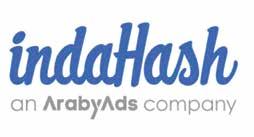
www.indahash.com
sales@indahash.com
+44 208 638 6960
We are the global leader in influencer marketing space. Running over 10,000 campaigns in 83 markets and with a team of over 100+ specialists, indaHash works with an outstanding number of 500 brands. We combine technology and human support which result in automated end-to-end solutions which strengthen our marketing solutions. The indaHash app enables brands and agencies to reach millions of mid-tier digital influencers instantly and lets them collaborate with the
ones they like the most. At indaHash we employ a data-driven approach by making strategic decisions based on thorough analysis and interpretation of internet campaigns. We have published two reports: “How Social Media will change in 2020” available at https://go.aws/3b3lTqM and “TikTok Report - An international study of over 2000 influencers” available at https://bit.ly/ indaHash_TikTok_report.
AWARDS WON: Best Influencer Marketing Company of the year by MarTech, Best Digital Use of Out of Home Content Award at The Drum Content Awards
KEY CLIENTS: Disney, Coca Cola, Amazon, Nestle, Adidas, Sephora, Loreal, Google, LG, Samsung
DO YOU MANAGE TALENT? Yes
DO YOU FOCUS ON SPECIFIC SECTORS?
We cater to all types of industries and verticals
WHAT’S YOUR BEST PIECE OF ADVICE FOR BRANDS LOOKING FOR SOCIAL MEDIA INFLUENCERS?
Keep an eye out for mentions and tags on real-life osts from actual people to make your marketing strategy more genuine and natural
CAN YOU NAME A RECENT CAMPAIGN INVOLVING SOCIAL MEDIA INFLUENCERS YOU ARE PROUD OF?
Disney – Han Solo - https://labs.indahash.com/disney-han-solo-case-study/
HOW DO YOU MEASURE THE IMPACT OF A CAMPAIGN?
Reach, Engagement Rate, Number of Followers
Founded: 2010
Regional headquarters: Dubai, United Arab Emirates
www.silainsights.com
info@silainsights.com
Influence powered by Sila is a leader in influencer marketing in the Middle East. Why? Sila’s AI. It makes influencers more transparent and measurable. Sila helps you understand and influence Arabic-speaking consumers through our AI. We connect our technology, people and ideas to advance our customer’s businesses, the field of Arabic Artificial Intelligence and how society understands the Arabic-speaking world in a way no one else can.

KEY CLIENTS:
Arla (Lurpak, Kraft Cheese, Puck Cheese, Arla Organic Milk, The Three Cows, Starbucks RTD), Bosch Home Appliances, NFPC
DO YOU MANAGE TALENT?
Founded: 2020
Regional head: Sami Alrasheed h ps://lavad.app/
+966 599790000
Marketing@lavad.app
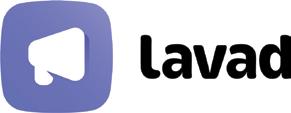
DESCRIPTION: A marketing agency that specializes in running campaigns with the biggest network of infl uencers and content creators in MENA region. We enable brands to collaborate with the right creators to enhance their presence and achieve greater ROI through social media.
DO YOU FOCUS ON SPECIFIC SECTORS?
Yes, F&B mainly but our expertise and platform can allow us to explore other sectors too.
WHAT’S YOUR BEST PIECE OF ADVICE FOR BRANDS LOOKING FOR SOCIAL MEDIA INFLUENCERS?
When you want to market your brand and products more effectively, it’s vital that you take an audience-first approach to marketing. Influence is not about followers, it should be about having persuasive power and connecting strongly with the customer, and that’s why you need to work with influencers who you can trust to be positive ambassadors for your brand by using data as an aid to drive your decisions. You need to select the creators by understanding their audience first. The affinities help with decision-making as well as understanding the key brands within the competitive landscape. They help us reach users based on specific interests.
CAN YOU NAME A RECENT CAMPAIGN INVOLVING SOCIAL MEDIA INFLUENCERS YOU ARE PROUD OF?
Puck Arabia’s #Nosupermomshere , Mother’s Day and Ramadan campaign. Our influencers’ live sessions and video content helped Puck burst the public’s bubble and be the ally of mom by helping her world shift their perspective and accept mom no ma er what her recipe to success is.
HOW DO YOU MEASURE THE IMPACT OF A CAMPAIGN?
Our campaigns success is measured based on initial KPIs such as campaign video views, the actual reach, the impressions and the engagement rate, along other metrics such as the total engagement, story views as well as a deep sentiment analysis. We have live dashboards to track content while the campaign is running, to monitor performance in real time and step in with actions in case something is not working as per the plan.
AWARDS WON: Creative Media partner Riyadh Chamber Award at the Creative Industry Summit
KEY CLIENTS: Cambly, Royal commission for Riyadh city, General entertainment authority, Saudi Tourism Authority, Saudi Esports Federation, Monshaat, Urpay, Majid Al Fu aim Group, General Sport Authority
WHAT’S YOUR BEST ADVICE FOR BRANDS LOOKING FOR SOCIAL MEDIA INFLUENCERS?
Make the rationale for selecting influencers based on data and analysis rather than impressions and feelings. Set the appropriate key performance indicators for each campaign.
CAN YOU NAME A RECENT CAMPAIGN INVOLVING SOCIAL MEDIA INFLUENCERS YOU ARE PROUD OF?
Gamers 8 is The World’s Largest gaming and esports event and the destination for the world’s elite esport champions and gaming universe lovers.
Riyadh Season is a festive celebration of pop culture in the capital city of Saudi Arabia to boost tourism. The inauguration of various Saudi Seasons were aimed at infusing fun and excitement from around the world into the culture of Saudi Arabia.
Urpay A leading financial technology company that provides services that facilitate the consumer’s daily financial transactions
HOW DO YOU MEASURE THE IMPACT OF A CAMPAIGN?
Through advanced technical solutions to track links, leads, and orders. Also, through third-party integration with social media platforms.
Founded: 2015
Regional head: Karl Mapstone vamp.com karl@vamp.me
DESCRIPTION: Vamp is an award-winning influencer marketing platform. We connect global brands like Adobe, Estée Lauder, GAP, Nestlé and Volkswagen to a vetted community of creators to drive brand awareness, consumer engagement, and purchase consideration through social platforms.
AWARDS WON: Best Influencer Marketing Platform or Technology AiMCO Awards (2021 & 2022)
DO YOU MANAGE TALENT?
No - we have a pre-vetted pool of 40k+ global creators which can be accessed via the Vamp platform as part of a managed or self-serve campaign process.
DO YOU FOCUS ON SPECIFIC SECTORS?
All sectors
WHAT’S YOUR BEST PIECE OF ADVICE FOR BRANDS LOOKING FOR SOCIAL MEDIA INFLUENCERS?
Look for creators with a genuine affinity for your brand. Search for more than just number of followers, and engagement rates. Look for professionalism, aligned morals, innovative content styles, and beautiful and engaging content execution. The best creator-brand relationships are built over long periods of time. Give yourself the best chance of doing this by being picky with who you collaborate with on a deeper level than metrics.
CAN YOU NAME A RECENT CAMPAIGN INVOLVING SOCIAL MEDIA INFLUENCERS YOU ARE PROUD OF?

Two recent campaigns with our clients drove 10.9 and 9.3 ROAS respectively. One was within the beauty industry, and the other within sports retail. Both campaigns used a mixture of influencers - from nano to mega - and both used a variety of content creator styles. This led to a diverse mix of creatives, of which the best performing organic posts were then used across paid social. This winning formula of high performing organic content being used as paid ads led to the impressive ROI mentioned above.
Think about it holistically. Before you even brief your campaign, set out clear goals and outcomes you want to achieve. When doing this, think about the campaign’s purpose. Are you looking to drive awareness, engagement, conversions, or repeat custom? Be specific. Then, create a detailed measurement framework. Which business goals is the campaign supporting? What are going to be the individual metrics you’ll use to systematically identify where the campaign fell short, if you don’t hit those goals? For example, will you assess reach, engagement, traffic, and conversions? By doing this, you can see where your wins and failures were, to take actionable learnings into your next campaign.
Founded: 2012
Regional head: Abed Agha
www.sociata.com
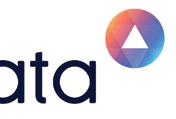

+971 4 439 6299
DESCRIPTION: Influencer Marketing Technology Company
KEY CLIENTS: Mastercard, Talabat, The Giving Movement, McKinsey&Company, Udacity, Magrabi
DO YOU MANAGE TALENT?
No, we are talent agnostic. This ensures we do not have a conflict of interest with the brands we work with.
WHAT’S YOUR BEST PIECE OF ADVICE FOR BRANDS LOOKING FOR SOCIAL MEDIA INFLUENCERS?
Be rational with your creator choices, fair in your dealings and authentic in the outcome of the collaboration.
CAN YOU NAME A RECENT CAMPAIGN INVOLVING SOCIAL MEDIA INFLUENCERS YOU ARE PROUD OF?
One Million Arab Coders programme that got one million Arabs to learn how to code.
HOW DO YOU MEASURE THE IMPACT OF A CAMPAIGN?
Through our technology, we can predict and measure the impact on the customer journey, from a raction to transaction, which includes media value and sales returns.

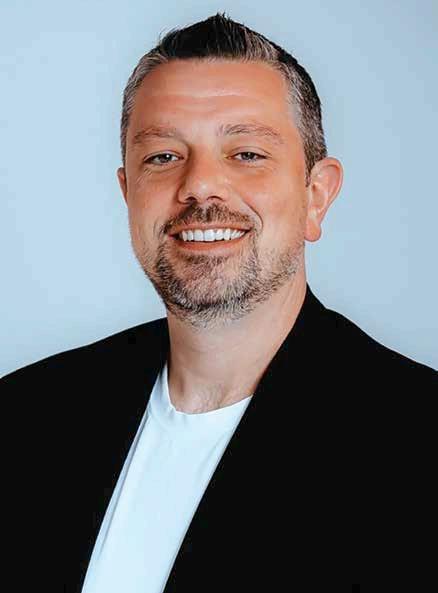
hard to see that the practice will keep growing once you realize that the party on social platforms is among people. The job of the marketer is to enter this conversation among people.
YOU’VE BEEN KNOWN AS VINELAB ACROSS THE YEARS AND YOU’VE BEEN EXCLUSIVELY OFFERING INFLUENCER MARKETING FOR 10 YEARS. WHAT CHANGED THROUGHOUT THIS DECADE?
We rebranded to Sociata for starters, we feel the brand better connects with marketers, creators and the raison d’être of our industry. We launched our technology as a self-serve model, the same technology that has been powering our client campaigns across the years and we are proud to see it adopted by advertisers like Talabat, Magrabi and Mastercard, along with agencies like TBWA and Magnitude, to name just a few. Our technology’s robust capabilities have prompted TikTok to select us as the first platform in EEMEA to integrate their creator APIs with.
It was harder in the early days to justify to marketers a big spend in influencer marketing, given none of the social platforms nor the big agencies were advocating for the practice. Today, influencer marketing is finally a line item in a marketing budget. Marketers nowadays are also much more comfortable giving creators the creative helm. Many brands were used to having full control over their messaging, however, they saw when creators are given creative freedom, they can produce more authentic and engaging content that yields great results.
TikTok certainly helped fuel this phenomena as they are the first platform to offer creator-led ad products. Despite them being a later entrant, they have awoken all of the other platforms on the need to offer creator solutions. It’s only until recently that we started hearing Meta and Snapchat leadership talk about the need to prioritize creators. It took for Elon Musk to acquire Twitter to put creators first on the platform. It’s really not that
It’s an issue that we take very seriously. We vet every creator profile through our technology and then manually through our team, but the majority of the process is done through tech. The fact that our platform is connected to the social platforms’ official data APIs, makes the data a source of truth. This ensures matching the right creators with advertisers very quickly and guarantees that the creators they work with are authentic and have real engagement with their audience.
WHAT SETS YOUR COMPANY APART FROM OTHERS IN THE INDUSTRY?
One of our strengths and what makes us unique is that we offer full-funnel measurement for campaigns, which includes media and sales metrics. Our AI has been learning for the past five years, an and through it, we are able to predict the impact of a creator on the customer journey, from attraction to transaction. We are also able to measure those stages in real time over a dashboard. Our clients appreciate that they can see exactly how their investment in influencer marketing is paying off.
CAN YOU TELL US ABOUT A SUCCESSFUL INFLUENCER MARKETING CAMPAIGN THAT YOU HAVE EXECUTED RECENTLY?
We worked with Dubai Future Foundation on promoting the One Million Arab Coders educational programme. Our mandate was to generate one million enrolments in the programme and graduate hundreds of thousands of developers to the marketplace. From a performance lens, paid social alone was going to drastically increase the cost. From a storytelling perspective, it was essential to position that learning to code is essential to unlock job opportunities, similarly to how knowing the English language was essential decades ago. We were brave to spend 70 per cent of the budget on collaborating with over 150 creators and we were able to generate a cost per enrolment of $1, a cost that is unheard of in the edtech industry.
HOW DO YOU SEE THE INFLUENCER MARKETING PRACTICE EVOLVING?
Moving on from influence to confluence: an influencer waving the next must-have product in the face
of their audience can become just another form of ad that people are little-by-little shying away from. There certainly needs to be a longer relationship and a better exchange of value among brands and creators, which will bring about more authentic outcomes from these collaborations. The practice certainly will evolve into being more rational as brands get access to technology like ours that vets creators better and accurately measures ROI. Lastly, more equitability among platforms, creators and brands is needed to ensure fairness in the economics. I believe these are the essential pillars for the industry to flourish further.
“Many brands saw when creators are given creative freedom, they can produce more authentic and engaging content that yields great results.”
Founded: 2014


Parent company: Hashtag Social Media Agency

Regional head: Amer Massimi h ps://starfish.agency/






Phone numbers: 04 457 8678
Email: info@starfish.agency
Starfish is a leading influencers agency in Dubai that runs creative influencer marketing campaigns across GCC regions. Starfish Agency runs a network of over 3,000 high-quality influencers to launch campaigns at scale.In addition to the team’s expertise in managing influencer marketing campaigns and building relationships with influencers, Starfish offers creative strategies to unlock the minds of their clients’ audiences and leave a lasting impression.
KEY CLIENTS: Bioderma, Azar, MSI Laptops, Logitech, MAX Fashion.

DO YOU FOCUS ON SPECIFIC SECTORS?
No, we work with any sector, from food industry to fashion industry and more.
WHAT’S YOUR BEST PIECE OF ADVICE FOR BRANDS LOOKING FOR SOCIAL MEDIA INFLUENCERS? Influencers must be relevant to the brand’s identity. Additionally, never limit an influencer’s creativity as they are open to further ideas which work on their profiles.
CAN YOU NAME A RECENT CAMPAIGN INVOLVING SOCIAL MEDIA INFLUENCERS YOU ARE PROUD OF?


Yes, Bioderma Sensibio H20 Eye makeup remover campaign, all influencer’s content were creative, fit the trends and delivered the message the brand wanted to provoke.

HOW DO YOU MEASURE THE IMPACT OF A CAMPAIGN?
By retrieving the number of reach, views, impressions, engagement and sentiment

500+ Campaigns
x10 Engagement

50M+ Reactions
3000+ Influencers

Betty Crocker, one of the most popular FMCG global brands, wanted to work on a new concept to break the stereotypical pattern when it comes to women using the kitchen. They came up with a new rebranding campaign ‘The Kitchen is for Everyone’.


On International Women’s Day, Betty Crocker collaborated with six influencers in the GCC region. We reached out to micro and macro influencers regardless of their experience in the kitchen, instead of only working with experienced cooks and women. Each selected influencer released a short video reel on their social media platforms, specifically Instagram and TikTok, where they provoked the process
of baking a cake for a special woman in their lives. For instance, some baked for their sisters, some for their mothers, some for their wives. This was also in line with the campaign message from Betty Crocker which states “everyone belongs in the kitchen” and ends the kitchen conventionalism while celebrating women overall.

Due to this collaboration, within a period of three days, the engagement rate on the Betty Crocker Arabia Instagram social media page increased by 369.5 per cent with almost 56,000 impressions and an increase of 165.7 per cent in organic video views. In addition, the influencers who took part in the campaign received a high

level of engagement and positive comments. The highest number of video views was achieved by the lifestyle influencer Ahmad Khamees (@aka.a) , with his video centered on him surprising his wife, Mashael Jamal, with a cake he baked from Betty Crocker. All of the influencers’ videos were sentimental, heart-felt and fitted the campaign message that Betty Crocker wanted to execute.

Total Impressions: 56,000
Engagement Rate: 6%
Number Influencers: 6
In June of 2022, USAPEEC, a not-for-profit organization and providing the best quality of poultry products globally, aspired to increase its awareness in the GCC market, specifically UAE. They target professional chefs, decision makers, and restaurant owners, in addition to regular customers who have a passion for cooking, by showcasing their high quality poultry products.

After receiving the brief, the Starfish team hand-picked and short listed professional chefs and cooks with a good range of followers to increase awareness of USA Poultry. Additionally, we came up with the strategy for the overall influencer campaign where influencers prepared
recipes in a series of episodes named “Quality Cooking with USA Poultry”.






7 influencers were selected for the campaign, each of which was a professional chef, head chef, TV personality Chef, Celebrity chef and social media influencers who’s content was focused purely on recipes and cooking. After booking and scheduling the influencers, the Starfish team arranged and managed the shoot completely until all the content was delivered.
In collaboration with our sister company Hashtag Agency, Starfish Agency was able to have professional videographers and video editors to take part in the overall
project and produce high-end videos that resulted in superb numbers.
The campaign overall acquired a great number of awareness and conversion. The total reach was around 110,000 and the engagement rate was very high, reaching 11.8%. As required from the brand, the top location of the country were most views, engagement and reach was found in the UAE.
Total Impressions: 1.1M

Engagement Rate: 11.8%
Number Influencers: 7



In today’s digital age, social media has become a crucial marketing tool and with almost 80 per cent of its population active on at least one platform, Saudi Arabia boasts the world’s highest social media penetration rate. As a result, the country has become a hotspot for influencer marketing, making it an ideal destination for brands looking to reach a wider audience and engage with their customers.
Some of the key reasons why influencer marketing has become so popular in Saudi Arabia are the large, highly-engaged social media user base, high internet speeds and the nature of the local culture. Influencers enjoy massive reach and can create content that resonates with their followers, making them a valuable asset for brands looking to increase their visibility and drive sales. In Saudi Arabia, influencers are highly specialised, with each profile focusing on a specific field, allowing brands to connect with their core target audience easily.
Moreover, Saudi influencers are highly professional, having left their full-time jobs to become full-time influencers. They generate enough revenue to cover their lifestyles and they possess a deep understanding of their audiences, which enables them to create content that resonates with their followers through relevant storytelling. Brands can leverage this expertise to craft effective marketing campaigns that drive results.









country. This also opened a new window of opportunities for them, sometimes from international brands not only local ones.
On the other hand, the licence provided marketers and brands with a reliable contractual context for projects. Some of the big influencers charged up to $100,000 per project but with little official documentation provided from their side. Also, marketers can also avoid specific profiles that are controversial by nature and cannot acquire the licence. This serves as a red flag for the marketer to reconsider collaborating with these influencers.
While collaborating with influencers, brands must ensure they choose the right platforms and influencers that align with their goals. By selecting the right channel
craft ideas or content that appeals to the Saudi consumer and produce it accordingly. Some even provide full-production services like videography to bring the concept to life. When collaborating with Saudi influencers, make sure you have your contracts ready and remember: if you don’t pay in advance, you won’t get the project done. Saudi influencers prefer payments in advance.
Influencer marketing in Saudi Arabia is a powerful tool that brands can leverage to increase their visibility, connect with their audience, and drive sales. With a large and highly-engaged social media user base, specialised influencers, and a secure regulatory environment, Saudi Arabia is the perfect destination for brands looking to engage with their customers meaningfully.
In Saudi Arabia, the government has also taken steps to regulate the influencer marketing industry, creating a safe and secure environment for brands to collaborate with influencers. The Mawthooq programme requires any influencer, advertising for a brand, to have a licence from the Ministry of Media, ensuring that brands can work with influencers who are qualified and professional.
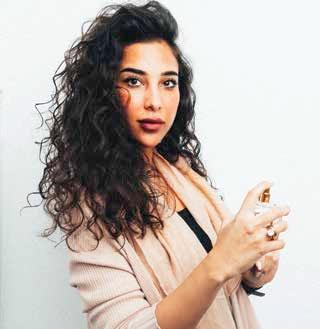










Several thousands of influencers based in Saudi Arabia, who used to generate income from their social influence, have dropped their influencer ‘career journey‘ due to being unable to retain their licence for advertising from the Ministry of Media. Especially those that are not Saudi nationals and are unable to generate enough revenue to pay for the value of acquiring the licence. Furthermore, there are several situations under which influencers in Saudi Arabia have left the country for a nearby GCC country where they choose to continue their careers as influencers while catering to a big Saudi audience while operating from a different
and influencer, brands can reach their intended audience, increase brand awareness, and drive sales. For instance, while Snapchat stands as the top channel for conversions, Tiktok proves great for top-of-funnel purposes. Brands should also allow influencers to tweak their stories to appeal to the local audience and avoid interfering too much with their content. Saudi influencers understand the local culture very well. They could help brands to
By Afnan Al Shareaf



 manager, Starfish Influencers Agency
manager, Starfish Influencers Agency




















‘‘Saudi Arabia boasts the world’s highest social media penetration rate.’’, influencer marketing
Staying on top of technological trends is vital in today’s fast-paced world. As technology advances, AI chatbots, like OpenAI's ChatGPT 4, become more sophisticated, o ering personalised advice with multimodal deep learning capabilities. AI will continue to take centre stage moving forward, as it's already used in customer service and sales, becoming the go-to marketing tool for SEO, content, and social media. However, this will require knowledgeable individuals to administer and train the AI platform for the best results.
TARIQ AL SHARABI
A possible training scenario would be for AI to evolve to assist brands in identifying influencers who would best support them. Influencer collaborations are continuously expanding, and the screening process for examining the number of other partnerships an influencer has and the frequency of their sponsored content would prove fundamental. Regardless of your stance, AI will continue to play an essential role in our lives, personally and professionally, and keeping up with these trends can help us navigate the technological landscape.
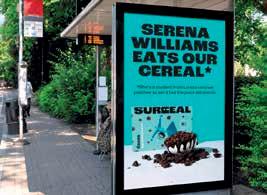
The amount businesses have saved waiting for responses using standard means
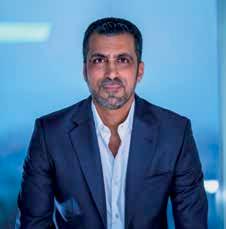
RRR's selection as India's entry for the Best International Feature Film category at the 2023 Oscars is a significant artistic achievement and a remarkable marketing success story for the film's producers. The film's international recognition and awards created a buzz among global audiences, attracting more investors and collaborations for Indian cinema.

BBC presenter Gary Lineker was taken o air for immigration policy statements, defending himself by saying his personal Twitter feed isn't subject to BBC guidelines. They eventually backed down once established that their impartiality rules failed to adequately address Lineker’s stance. The Beeb might be slower to criticise others after this debacle.
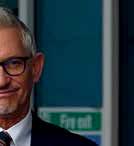
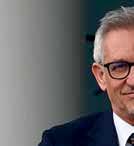
Someone recently stated there are two types of people in the marketing world – one that can’t utter the words’ data’ and ‘creativity’ in the same sentence, and one that believes they go hand in hand. However, marketing is no longer about data versus creativity; data has seeped into every aspect of marketing.

It was almost impossible to have a discussion at Dubai Lynx 2023 without mentioning technology. E-commerce is becoming more social as brands look at meeting shoppers in their own environment. Meanwhile, AI and AR play a bigger role in storytelling and customer experiences. The pressure on CMOs to step out of the ‘creative-first’ world is real, we hear, as they face pressure from CFOs.
While data is now used as a source of inspiration for creativity, it is essential to consider potential implications of technology in marketing. On one hand, marketers are creating hyper-targeted and hyper-personalised campaigns that resonate with their audience. On the other hand, there is a growing concern about gender bias in generative AI. MullenLowe recently prompted AI tools to create images of mechanical engineers, F1 drivers, mathematicians, CEOs, boxers and football players. The results consistently showed male representation in these roles.
Not surprising. It may seem like AI is gender-biased at first glance, but is it really? There’s only so much AI can do when these professions are dominated by men. According to BBC, there are no female drivers performing at the very top F1, and it is nearly 50 years since a woman last contested the Formula 1 Grand Prix. AI mirrors reality.
I decided to go to the source and asked our chatty friend GPT-4 if generative AI is genderbiased. It said: “If the training data used to train a generative AI model contains biased information or stereotypes, the resulting model may generate biased outputs. To address these issues, it is important to use diverse and inclusive training data and to regularly evaluate the outputs of generative AI models for bias.”
In simpler words, generative AI is gender-biased because we are, and it goes on to hint that generative AI can be trained to remove the bias. MullenLowe felt a need to take corrective measures and created a database of women representation across different roles to train AI. It is surely a move in the right direction. Technology will do what we consciously ask it to do, and it seems like we need to learn how to work with AI, including de-bias its decisions.
However, the solution must go beyond fixing the symptoms. Gender bias stems from human behaviour – real change is required on the ground.
There’s a lot of things you can do in four-and-a-half hours. Like run a marathon for starters. But TikTok CEO Shou Zi Chew spent that amount of time being grilled by US politicians about his company’s social media app.
The US government is threatening to ban TikTok and other countries have expressed concerns about its Chinese owners. Specifically, they are worried about what happens to users’ data.
The US is not alone. Similar moves have been taken by the UK, Canada and the EU, while India banned the app altogether in 2020. When Campaign contacted TikTok for a response, a spokesman said: “These bans are based on basic misinformation about our company, and we are readily available to meet with officials to set the record straight about our ownership structure and our commitment to privacy and data security. We share a common goal with governments that are concerned about user privacy, but these bans are misguided and do nothing to further privacy or security.”

TikTok has been booming in many parts of the world, especially in the Middle East. Many people in the region, from businesses to content creators, have used TikTok to gain celebrity and income. People use the shortform video platform to sell products and publicise their content.
It’s too early to say how many countries might follow America’s lead, but for now it’s business as usual in the UAE. People love TikTok and are happy to continue viewing and creating content on the app. A recent study by TikTok showed that the platform provides the highest incremental exposure to TV compared with other video platforms.
TikTok has made some changes globally. It recently announced a refresh of its community guidelines and introduced new community principles. These are aimed at helping users to better understand TikTok’s decisions about safety on the platform.
TikTok has also updated its policies to address climate misinformation. While discussions about the topic will still be allowed, the platform will ban any misinformation that “undermines well-established scientific consensus”.
The Future Gazers session at Dubai Lynx: Gemma Spence, VMLY&R Commerce; Thomas Kolster, Goodvertising Agency; Daniel Hulme, Satalia & Georgia Kinahan, Cannes Lions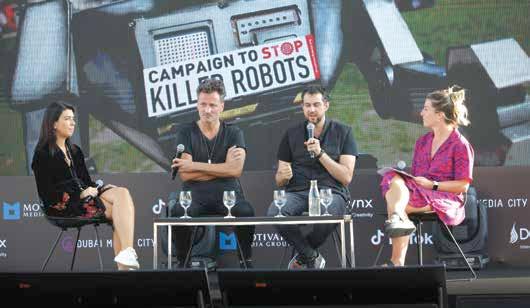
If you could create a one-day event to quickly get up-to-speed with what’s happening in the advertising and creative industries in this region and meet the key movers and shakers, then it would be the Dubai Lynx festival. For me, this year’s event timing was perfect as I am still on a steep learning curve, understanding the hot topics and trends and trying to meet all the agency’s big cheeses. I ticked off many boxes in the space of a few hours.
The festival itself was extremely well attended, including the panel discussion I moderated on the future of creativity in Saudi Arabia. There is so much interest, and excitement, about Saudi that I put myself forward to chair the discussion. And I made the right choice, with a packed room full of energy and curiosity thanks to my panel of passionate Saudi-based creative directors.
And then of course we had the hotly contested awards, a night of glamour, prizes and cocktails. There were so many great works and campaigns on show that I have sympathy with the judges and juries in the hard choices they had to make picking the eventual winners. There were 18 Grands Prix winners including the very worthy Empty Plates campaign.
As soon as I heard about the Adidas x Ravi shoes campaign many months ago, I knew it would pick up some kind of award, and inevitably it did. While I missed out on buying a pair of the limited-edition sneakers, I was really pleased to see the creative teams on stage in their green and white Adidas x Ravi footwear collecting their deserved award.
And what a genius and witty campaign from Heinz during last year’s World Cup tournament. It made me smile a lot, and I secretly wish my surname was Heinz not Harper. All in all, the Dubai Lynx team and all the creatives in the region can give themselves a huge pat on the back for a great year and body of work.
And it seems no-one is resting on their laurels, as efforts are being made to attract new talent into the industry. I was lucky enough to sit in on a roundtable of agency CEOs on the sidelines of the Dubai Lynx festival, and talent was one of the key talking points. Although it may be cliched, talent is the lifeblood of this industry and nothing would be achieved without it.
JUSTIN HARPER Editor justin.harper@motivate.ae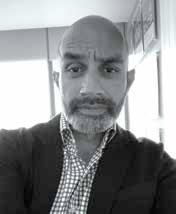
Of course, the industry’s gripes and pain points were also discussed at length during the intimate CEO roundtable, with paying for pitches, minimum timeframes for creating them and payment terms all on the table. The hope is that such topics won’t be limited to an annual discussion and that a more regular dialogue will take place. And that the talk with lead to action and eventually change. Hopefully Campaign can help nurture and publicise these discussions in our pages in the coming months. A new industry framework was suggested, with plenty of input and ideas for what this should include. This is one area for agencies to come together and protect themselves from some of the challenges they face. Many industries have their own codes of practice and some of them are a very useful form of self-policing.
In summary, the consensus among the heavyweights on the panel was that the industry is in pretty good health, but that a bit of therapy might be needed.
Michael Conrad was the president and chief creative officer of Leo Burnett Worldwide.
But in 1952, when he was a little boy, he was a refugee escaping communists by night.

Germany had been split in two after the war, and he had been born in the east.
His family were desperate to get to the west and freedom.
They travelled at night dodging patrols, with Michael hiding under a blanket, popping his head out and asking if they’d arrived.
The answer was always no, not yet, be quiet.
He was terrified they’d be caught, until eventually he looked out from under the blanket and saw a soldier drinking from a bottle.
He recognised the bottle, it was shaped like no other bottle on Earth – it meant they were in the American sector.
It was a Coca-Cola bottle, and he knew they were free.
The unique shape of the CocaCola bottle has become the symbol for America.
So much so that in 1943, General Eisenhower sent a letter to the CocaCola HQ in Atlanta.
Eisenhower wanted ten portable factories, and six million filled bottles of Coca-Cola a month, to remind every American soldier what
he was fighting for.
By the end of the war, 64 bottling plants had provided five billion bottles of Coca-Cola.
It wasn’t just a drink – it represented America for artists like Andy Warhol, Salvador Dali and Robert Rauschenberg.
So how did that happen, considering the design of the bottle went against all economic and marketing logic?
It began in 1886 with the invention of the drink, which by 1900 had become so popular it already needed 1,200 bottling plants.
But popularity creates imitators –there were Koka Nola, Toka Cola, Ma Coca-Co, Koke and many others.
Coca-Cola tried a distinctive label style, but the others copied this too.
In the hot southern states, well before fridges, bottled soft drinks were kept in barrels of ice – the storekeeper would reach in, feel around and fish one out.
The water made the labels peel off, so there was no guarantee whose drink it was.
So in 1915, the Coca-Cola Company held a pitch among ten glass-design companies.
The brief was for a bottle that was so distinctive you could tell it from all others, even with your eyes shut, even at the bottom of a barrel of ice, just by feel.
The winning design was from Root Glass Co, of Terra Haute, Indiana.
Their inspiration came from the cocoa bean, which was elongated with ribs down it.
The bottle cost more per item than the regular bottles everyone else was using.
In simple economic terms it didn’t make sense, people wanted the drink not the bottle.
But Coca-Cola insisted the volume of sales would more than make up for the increased unit cost.
In other words, they wanted to be different and they wanted people to know they were different.
And it worked – by 1949, 99 per cent of Americans could recognise Coca-Cola by the shape of the bottle alone.
In 1961, it was considered so iconic they were allowed to trademark the bottle just by its shape.
Today, Coca-Cola is the bestselling soft drink in the world with a market value of $74bn.
All because they didn’t do the same as everyone else.
Insecure people copy everyone in their market just to be safe.
But if there’s nothing to make you different, you become a commodity not a brand.
So you get picked on price or special offer, and the brand becomes irrelevant.


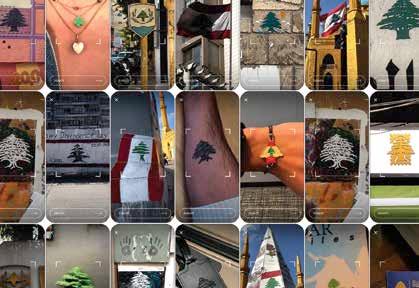

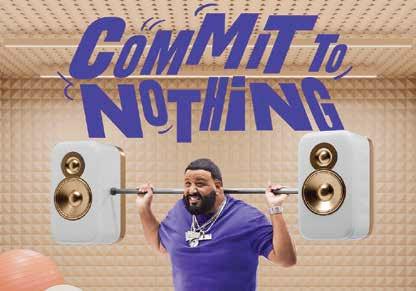





Creative Director, MullenLowe
Head of Marketing and Communications, KROHNE


ABAAD: DIRTY LAUNDRY (1)
An incredibly important topic that few have been brave enough to tackle head-on. This film does it very well, using a common phrase to send out a powerful message. The film has an art-house feel which reels you in and the script has a healthy dose of wit that slowly gets more serious as it makes its point. I’m sure it would read way better as a native Arabic speaker, but it still hits all the right notes through the English subtitles. If I must have one criticism, I’d say it was a bit lengthy.
AL-FUTTAIM IKEA: COUCH COUNSELLING (2)
In terms of the problem/insight, it feels like well-trodden ground, but the solution is a clever one that sits perfectly with what IKEA sells. Would have liked to see this working as a real case somehow, without all the acting.
SAUDI TOURISM AUTHORITY: FIND ANOTHER VERSION OF YOURSELF (3)
A film full of beautifully shot Saudi Arabian scenery and a solid script that beckons us to discover more about the country while also discovering more about ourselves. Does it make me want to visit Saudi? Yes. Is that desire influenced by Messi’s appearance in the ad? No.
SUN AND SAND SPORTS: COMMIT TO NOTHING (4)
Where other sports brands would try to be as serious and as gritty as Nike, Sun and Sand Sports goes the opposite direction with a fun, provocative campaign that tells people to ‘commit to nothing’ in order to try everything. A fresh, unpretentious take on sports that helps them stand out while cleverly selling themselves as an all-purpose sports outlet. And with DJ Khaled in their corner as the unlikely sporting hero, what’s not to like?
GREENPEACE: VANISHING LEBANESE SYMBOL (5)
I’m a huge fan of simplicity so this one struck a chord with me immediately. Simple, clear and supports a worthwhile cause with an innovative solution. So, this one gets a big Greenpeace tick. One question I was left with, however, was how were people made aware that they can scan any and every flag they set eyes on. It’s not immediately obvious from the case film.
ABAAD: DIRTY LAUNDRY (1
The literal use of the often-detrimental “keep it in the family” writ large here is impactful as a four-minute rhythmical rhapsody against domestic sexual abuse. With such sensitive subject matter at play, the campaign pulls together the details, the phrases, and the excuses, unfortunately often used, to mask any issue with energy so the piece delivers the message elegantly.
AL-FUTTAIM IKEA: COUCH COUNSELLING (2)
Tapping into human insights is always a win, especially when backed up with a well-being angle such as counselling. Anyone who has visited the Swedish home store will understand the sentiment of this campaign and appreciate the offer of counselling. To be honest, you had me at IKEA...
SAUDI TOURISM AUTHORITY: FIND ANOTHER VERSION OF YOURSELF (3)
It is a perfectly well-executed piece for the Saudi Tourism Authority, light and fresh and shows aspects of KSA we might not be aware of. Although he is in every scene, I don’t feel like this is an advert with the GOAT in at all, which surprises me, but it kind of works, carried along by very smooth and silky production value. The look of genuine childlike delight on Messi’s face in the dune buggy as he overtakes the camels is worth watching this piece alone for. Either way, the rumours are circling that this might not be the last time we see Lionel of Arabia in the region.
SUN AND SAND SPORTS: COMMIT TO NOTHING (4)
Sadly, I don’t feel any connection with this piece. Not the celebrity, style or tonality used. I love the sentiment of finding the right sport that works for you, but it doesn’t come through in this ad, possibly in the other activations on Tiktok and in PR.
GREENPEACE: VANISHING LEBANESE SYMBOL (5)
Brilliantly simple idea that must have taken a long time to pull together all the images to make them scannable through the app, but hopefully worth the effort. Of course, with so many cedar trees around Lebanon, one would hope the donation drive was also incredibly successful whilst reminding people how omnipresent this symbol truly is.
ABAAD
Dirty Laundry
Agency: Leo Burnett Beirut
Al-Futtaim IKEA
Couch Counselling
Agencies: Impact BBDO and Impact Porter Novelli


Saudi Tourism Authority
Find Another Version of Yourself
Agency: And Us
Production house: City Films
Sun and Sand Sports
Commit To Nothing
Agency: Mother London
Production house: Radical Media London
Director: Dave Meyers
Greenpeace
Vanishing Lebanese Symbol
Agency: Digitas Dubai
International Women’s Day was a stark reminder of how much needs to be done for gender equality. The UN says this could be 300 years away which is a chilling figure. However, while we wait, how about free champagne to drown your sorrows? One enterprising hotel was offering free unlimited bubbly for the ladies to celebrate International Women’s Day, because they probably have so much time on their hands right?
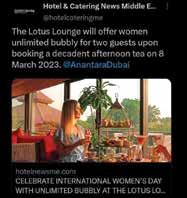
Speaking of hands, how about getting your nails done as well to celebrate International Women’s Day, given that women probably spend so much time worrying about their appearance and specifically their cuticles? Deliveroo generously gave 50 per cent of the proceeds to a foundation in support of women’s health. Looking at the icons you can put on your nails, we are pleased to know that French fries, pizza and donuts can support your health.
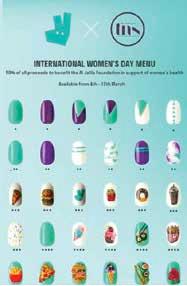
What a genius bit of online guerilla marketing from Burger King placing its ad for its Whopper above the front page story on former UK Prime Minister Boris Johnson’s ‘grilling’ from politicians. There’s no smoke without fire. We couldn’t agree more with you BK.
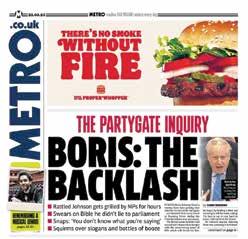
BEVERLEY
D’SOUZA, Chief Brand Officer of Pizza Hut has been promoted to General Manager of Pizza Hut – Middle East, Turkey, and Africa. D’Souza was also one of Campaign Middle East’s marketing game changers 2022. She has worked with for Pizza Hut and KFC for more than 16 years across the Middle East, Canada, and UK. She also represented Yum Brands at Dubai Lynx which was honoured with the award of Advertiser of the Year 2023.
YAAP, a Dubai-based influencer marketing company, announced the appointment of media professional SADIA AKHTER as a Partner. In a career spanning more than 19 years across verticals such as digital media,
programmatic and influencer marketing, and advertising, Akhter has helmed successful campaigns for reputable brands, fostered and led multiple teams, and delivered measurable results.
It also announced the appointment of NANDITA SAGGU as Partner. Her role will involve driving the company’s growth and expansion in the Middle East. Saggu has more than 18 years of experience across sectors. Before joining YAAP, she was the Chief Growth Officer at DViO, leading the digital agency’s Middle East operations.


Leo Burnett, part of Publicis Groupe, announced the appointment of VICKY KRIPALANI as Business Lead –Communications Consultancy. As a part of the agency’s leadership team, Kripalani will be responsible for growing and overseeing a multi-market client portfolio, working with clients as a strategic and creative partner to achieve their overall business objectives.

Publicis Groupe has appointed NADIM GHRAYEB as Business Lead for Studio M, part of Leo Burnett and the agency solution designed for McDonald’s GCC. Ghrayeb has more than 20 years of experience working on integrated campaigns with brands such as Red Bull, Absolut, Nike, Audi, Wendy’s, BMW, and
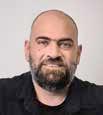

Cadillac. Prior to his appointment, Ghrayeb headed the Infiniti’s marketing, PR and customer experience for the Middle East, Eastern Europe, and a part of Asia.
Appsflyer announced the appointment of SARAH MAINA as its Partner Development Manager for the Middle East region. In her new role, Maina will work to further develop the company’s collaboration with its agency and media partner ecosystem. She has more than 12 years of experience in the AdTech industry, will be based out of Dubai.

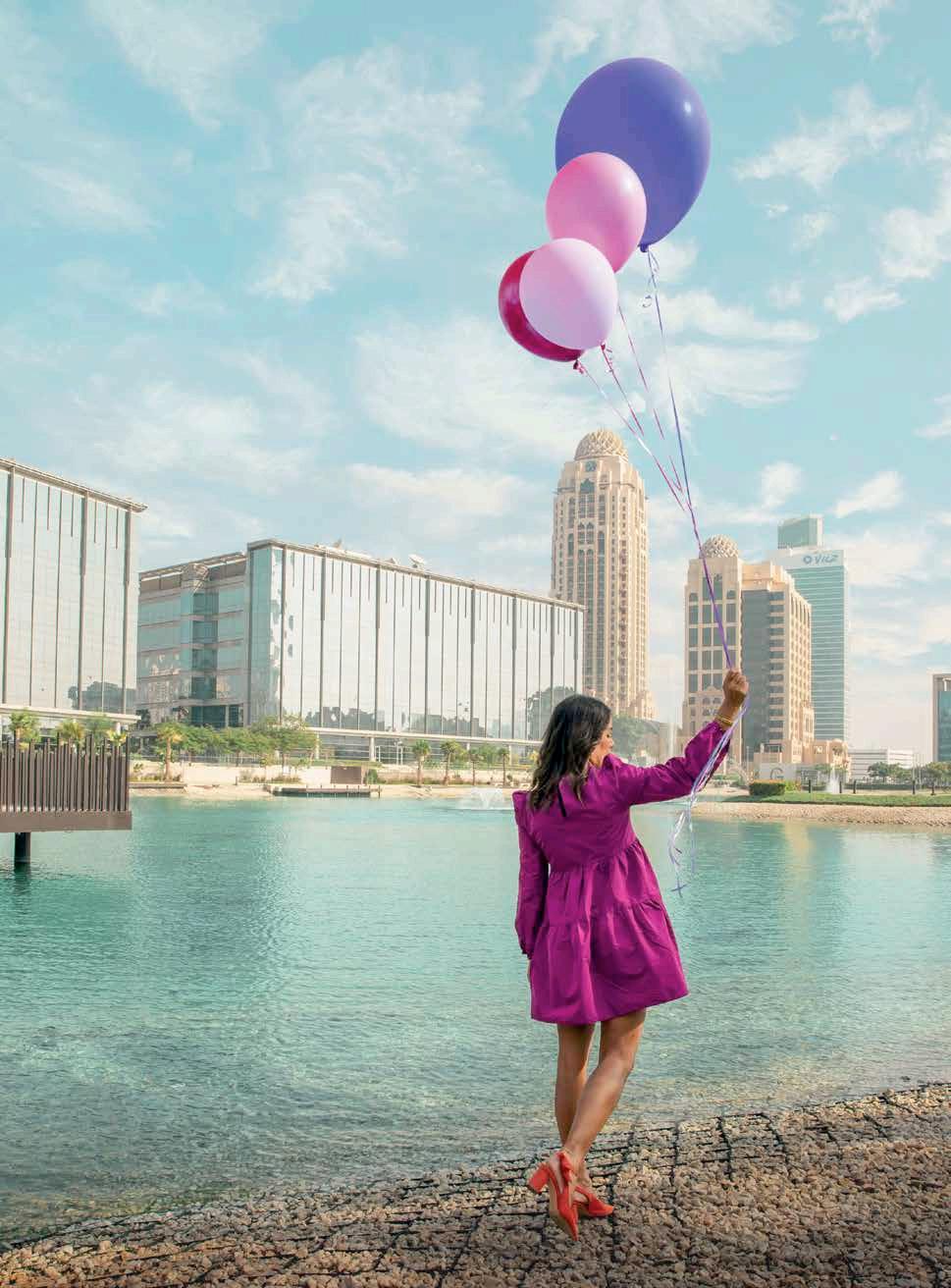






Thanks to our team and all our client partners on whom we depend to make every day possible. www.and—us.agency